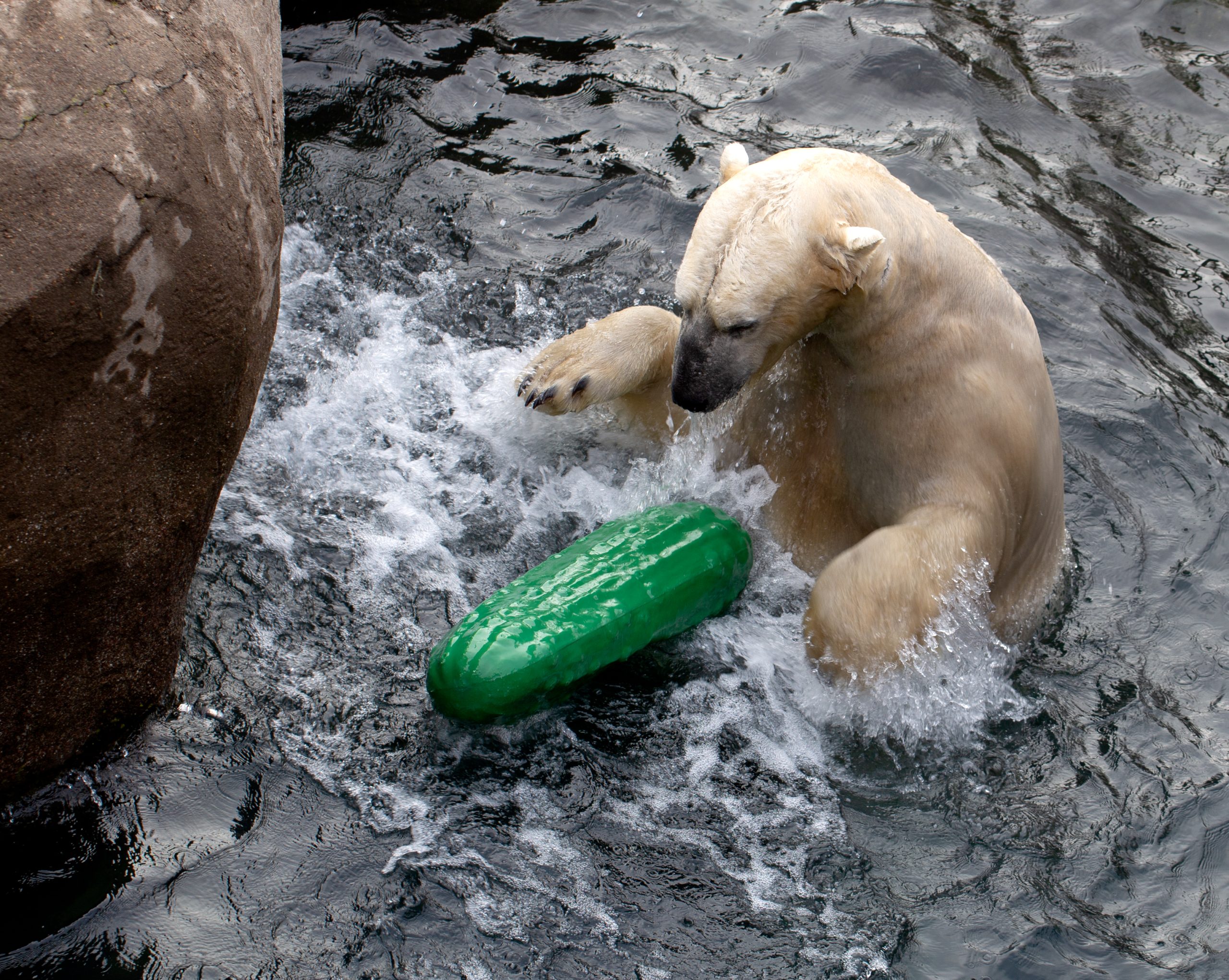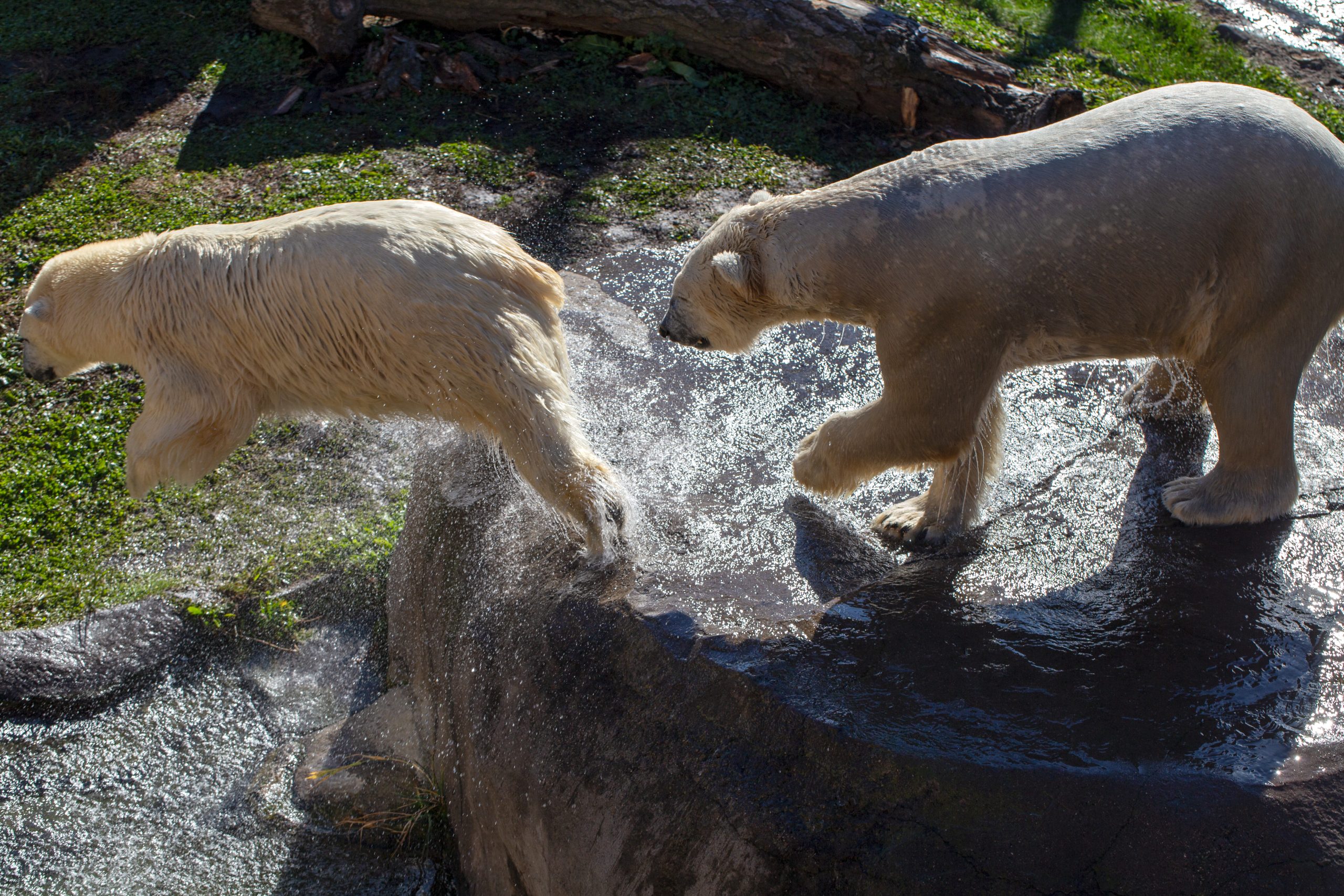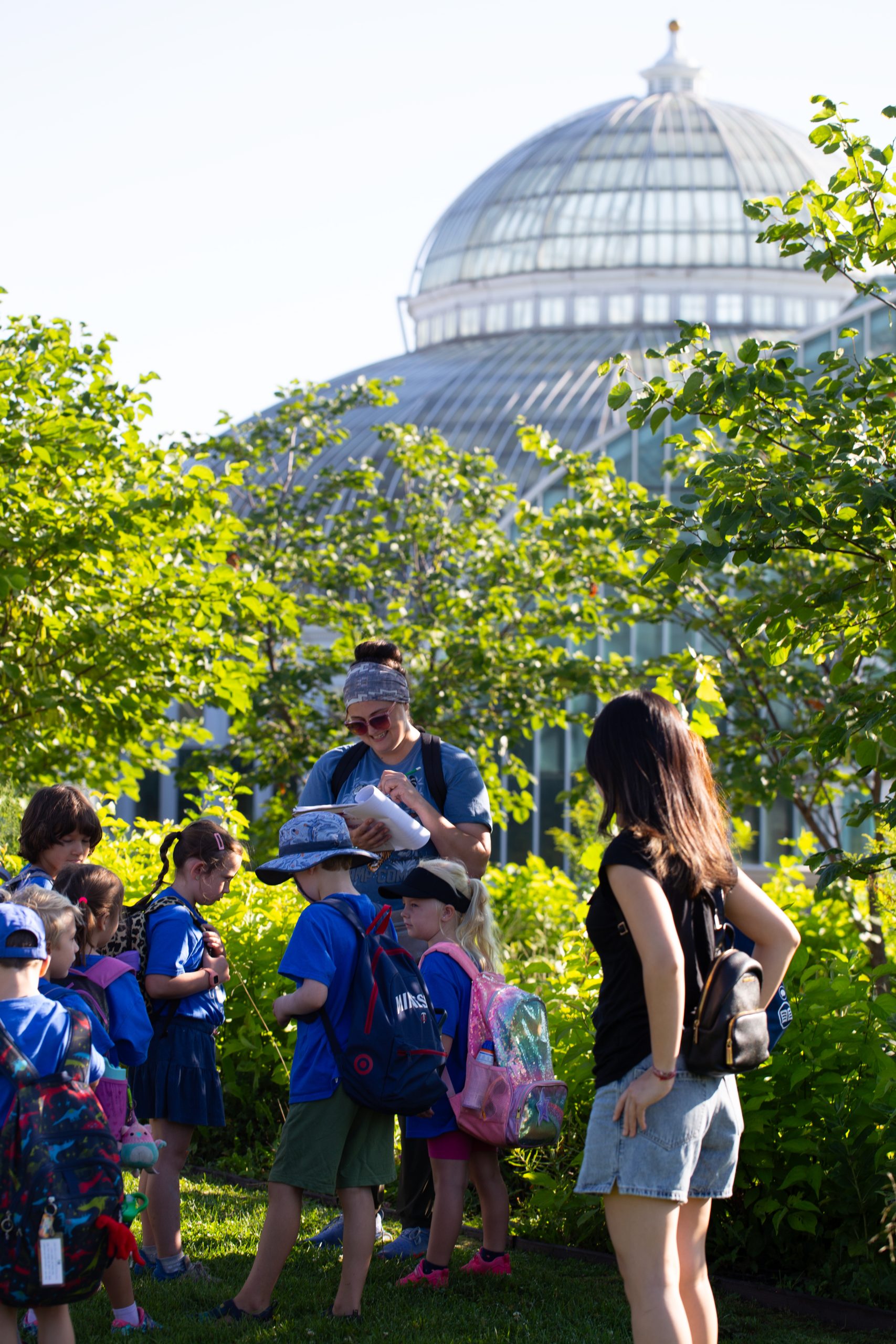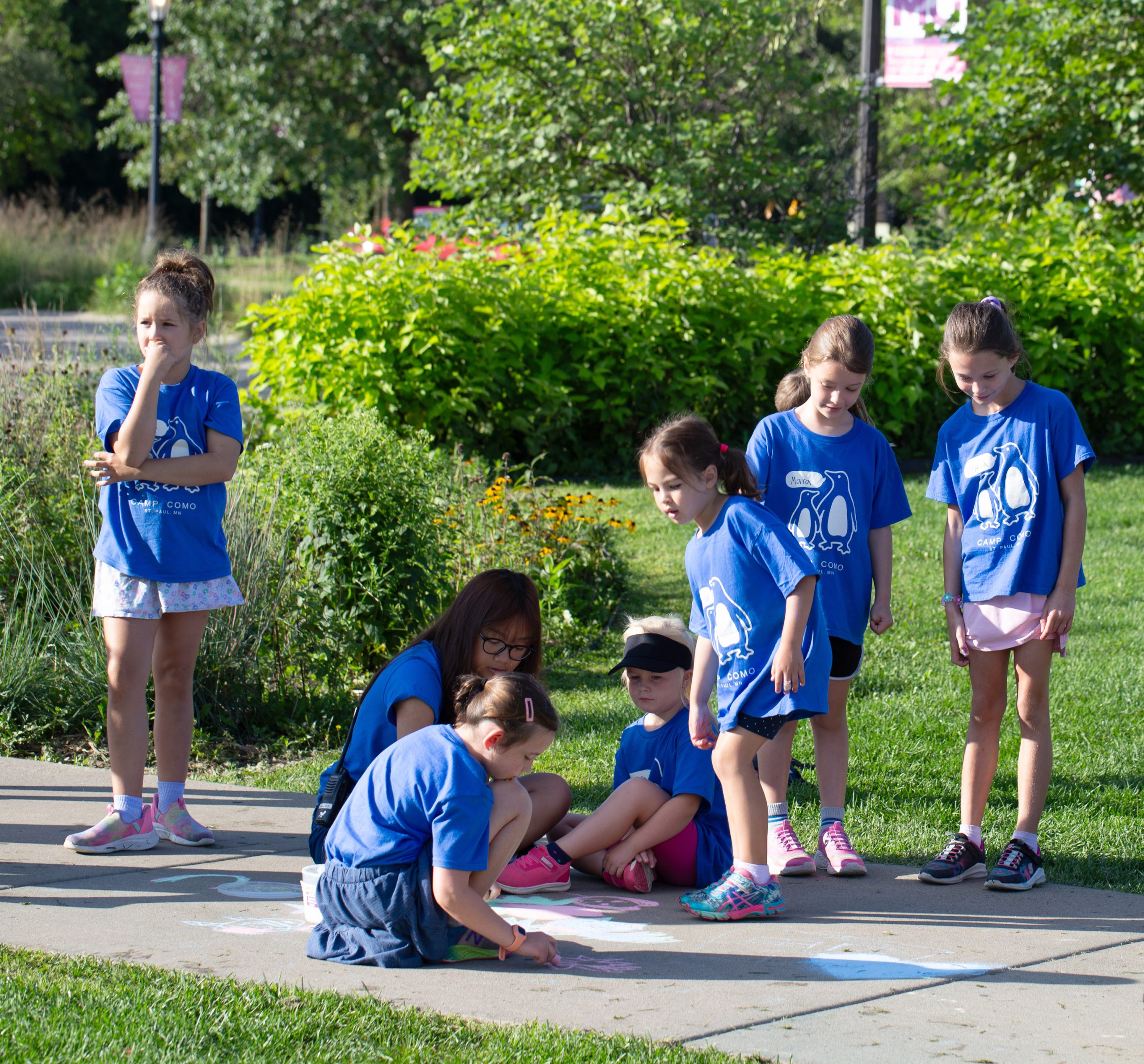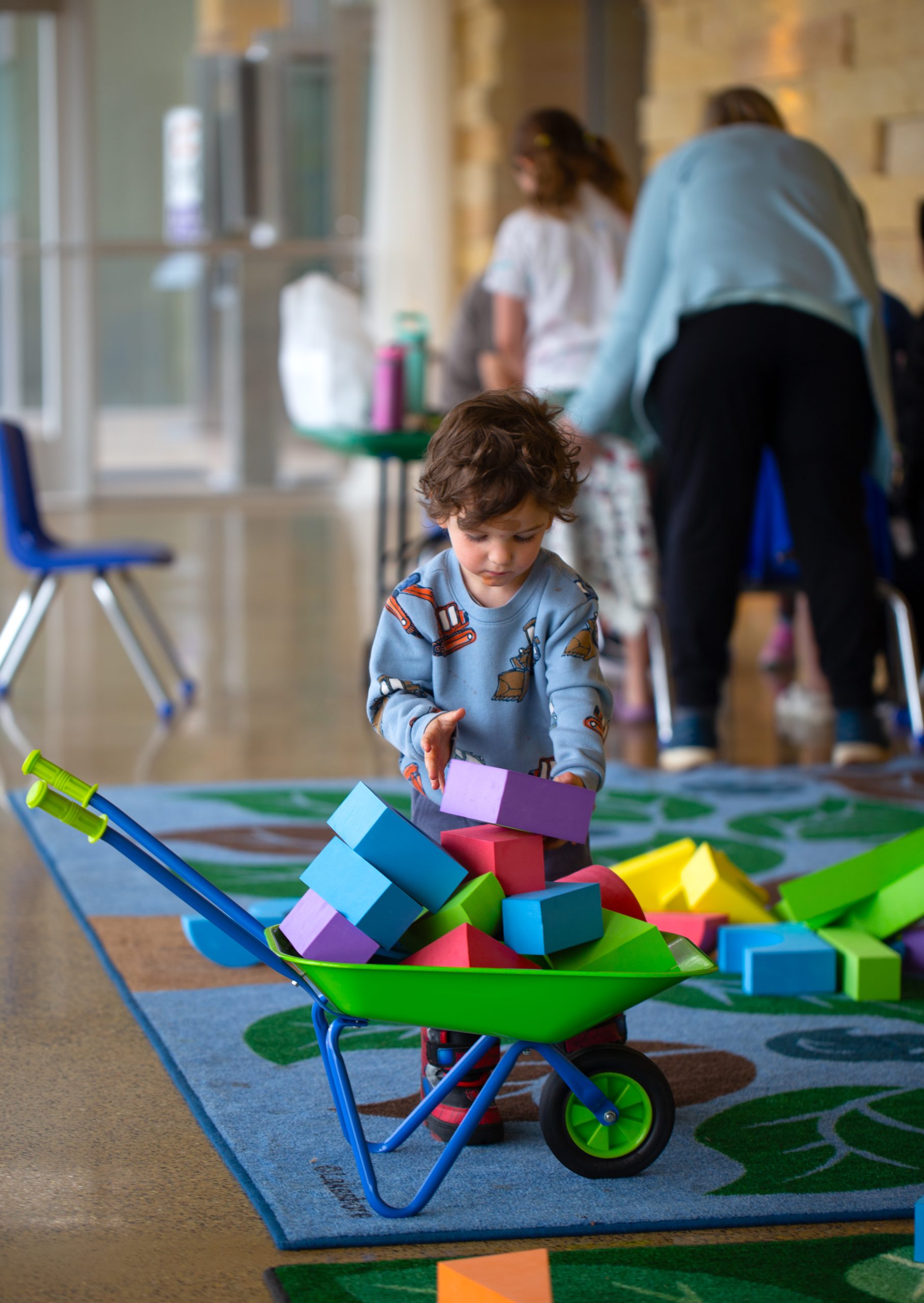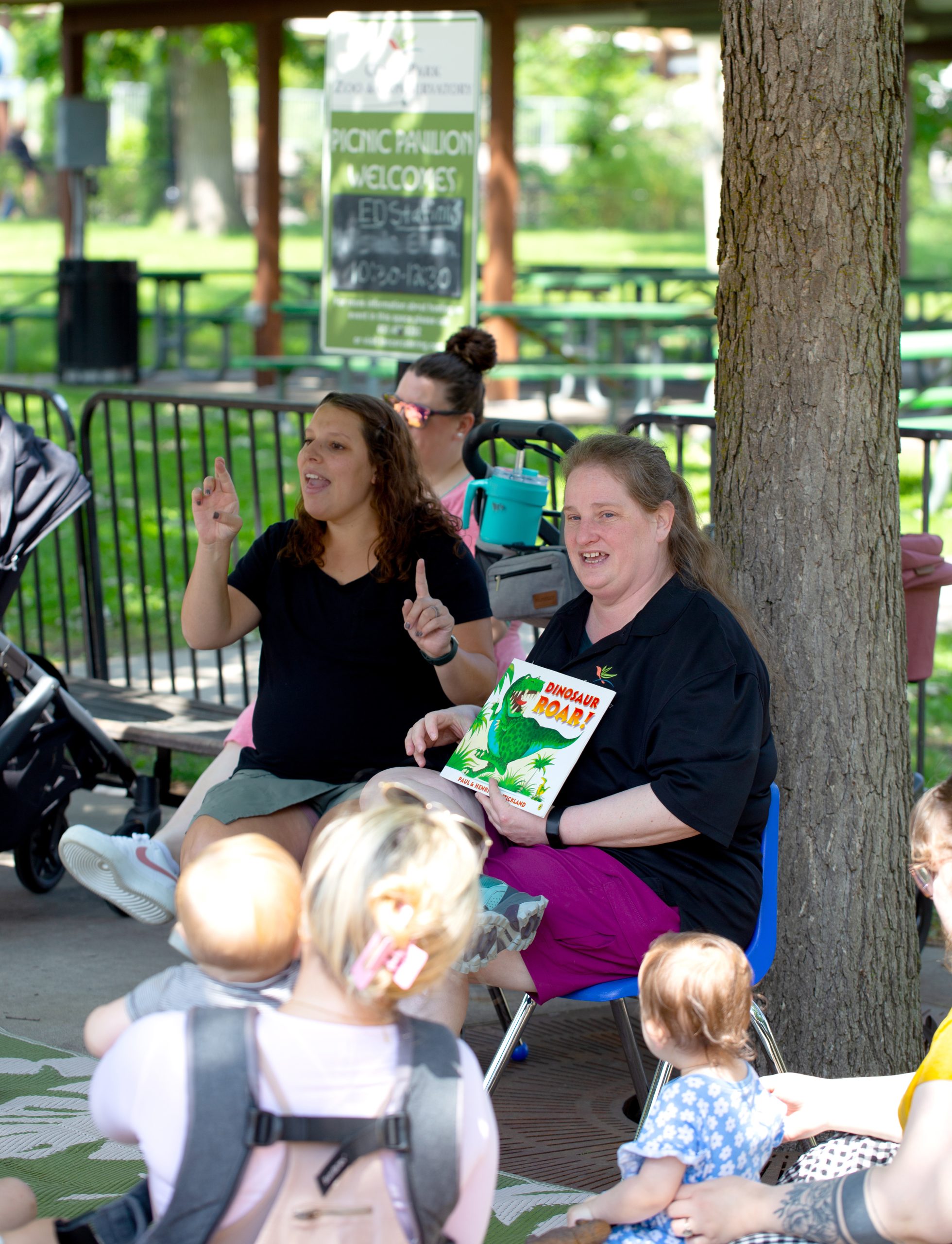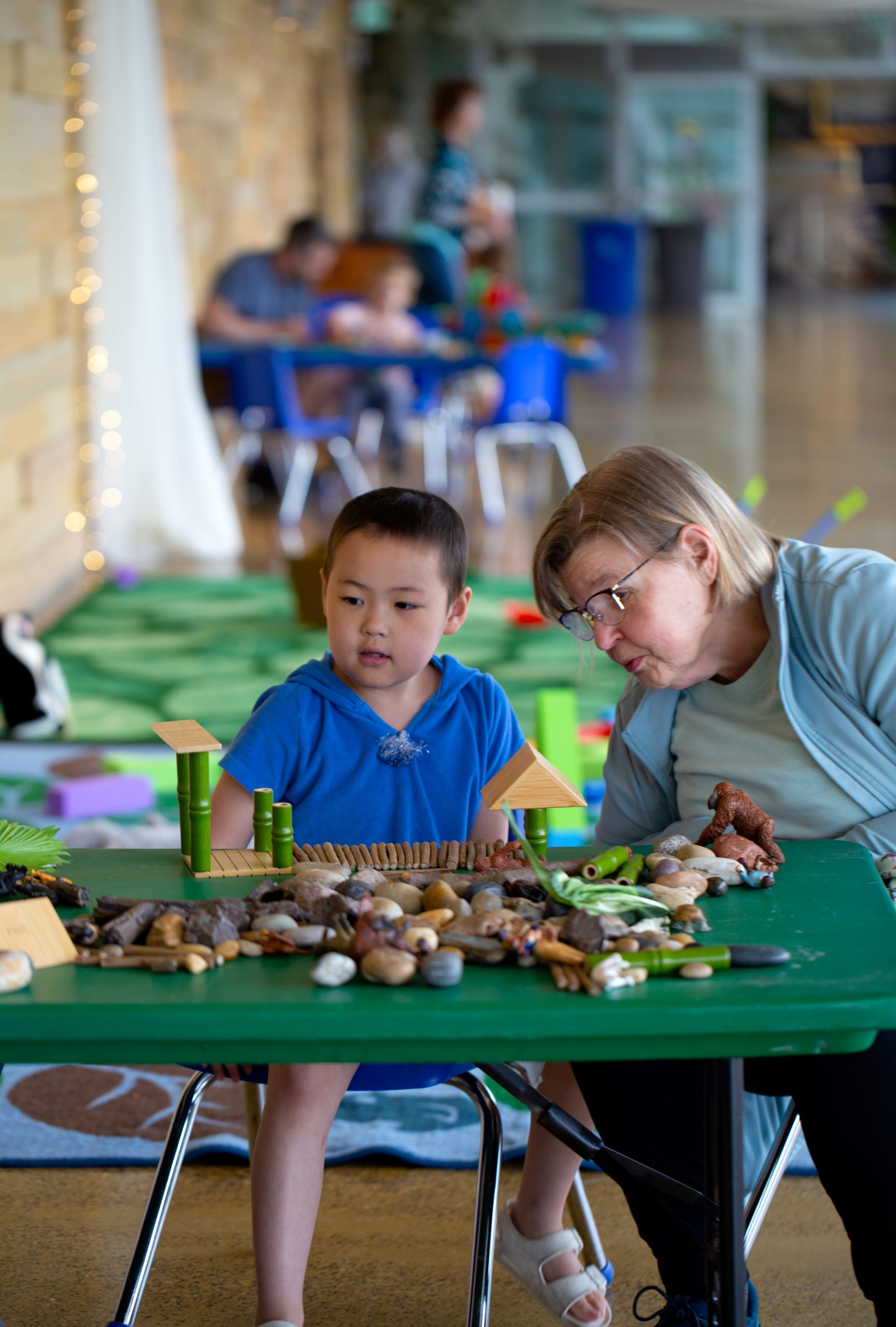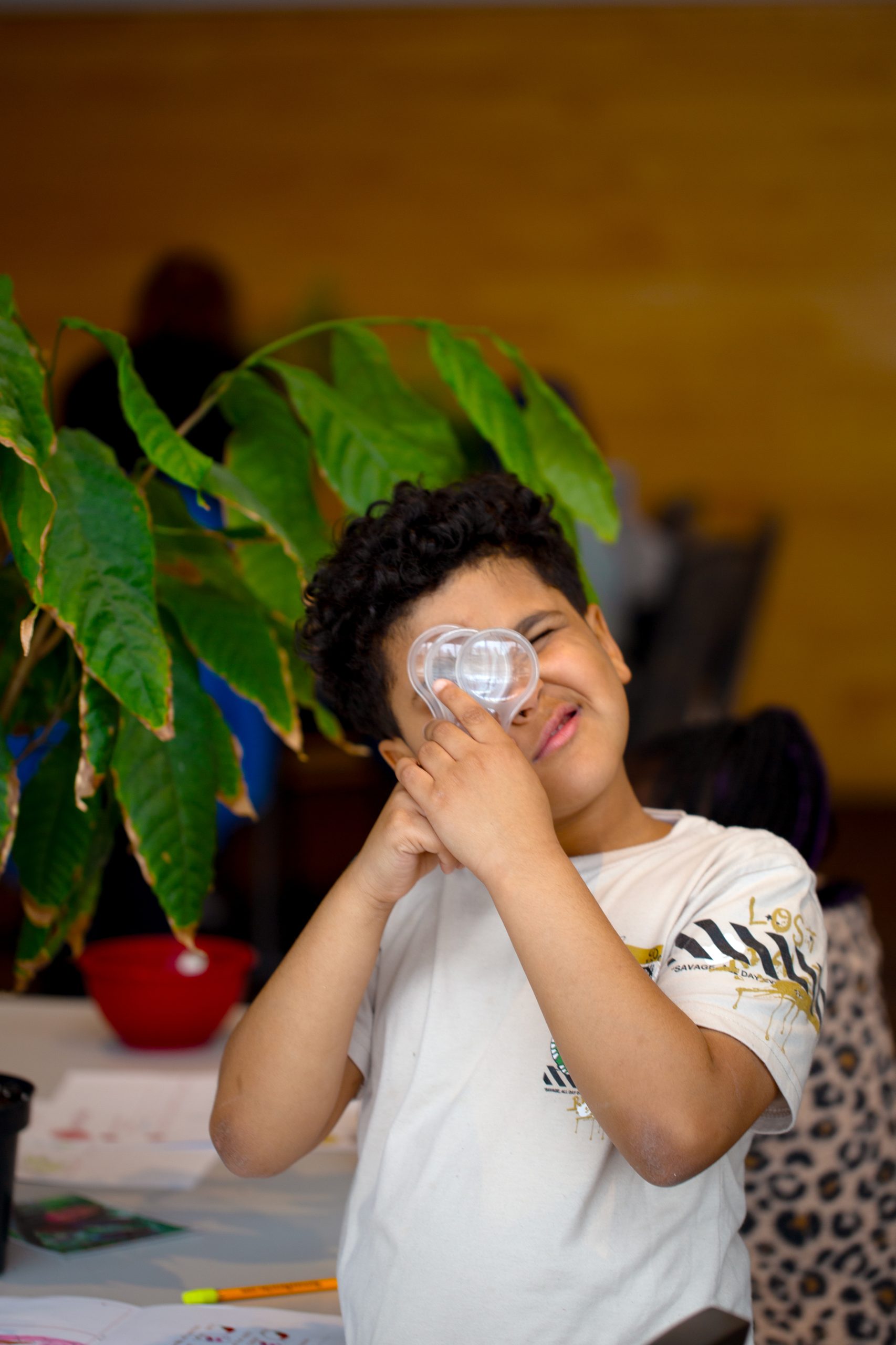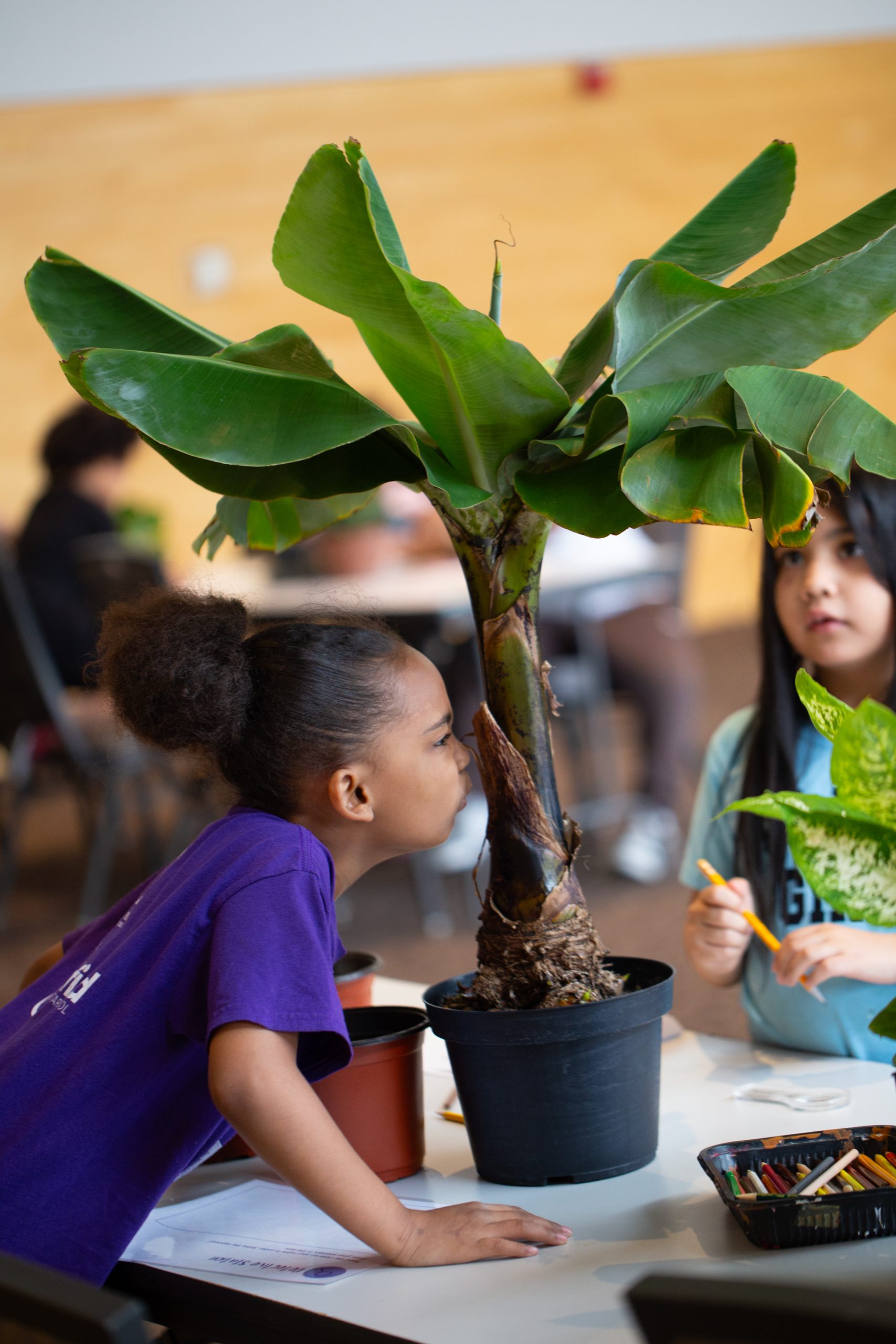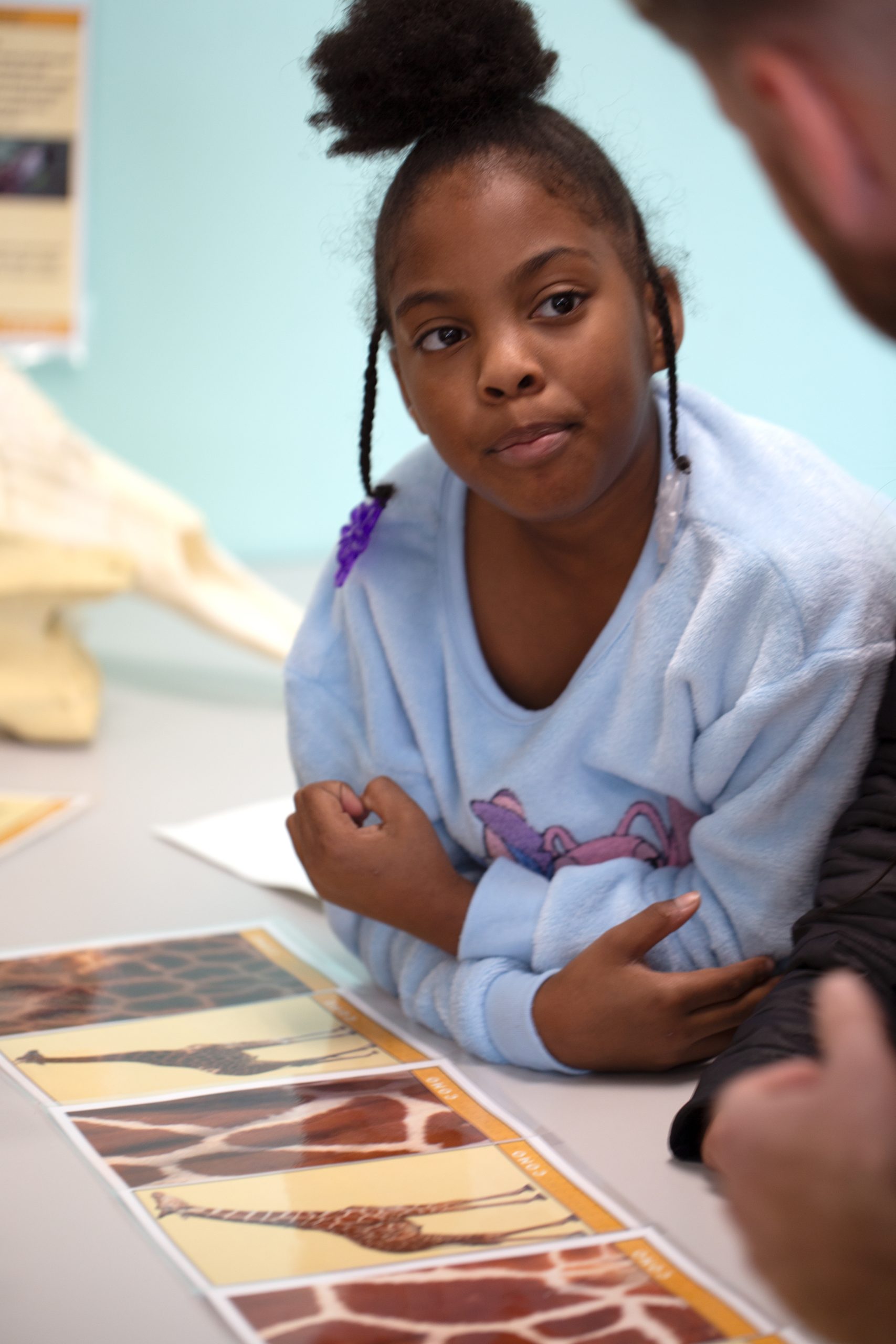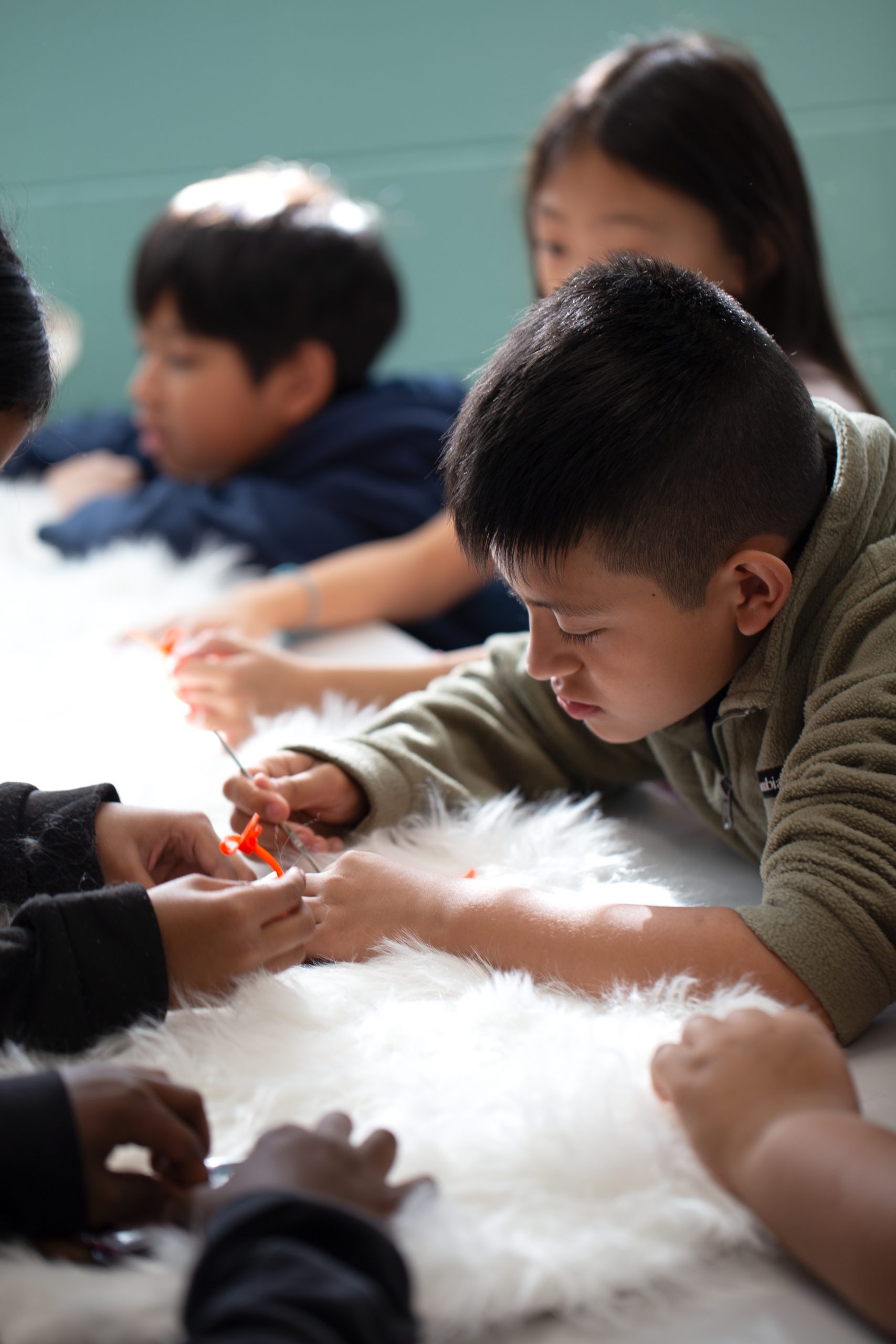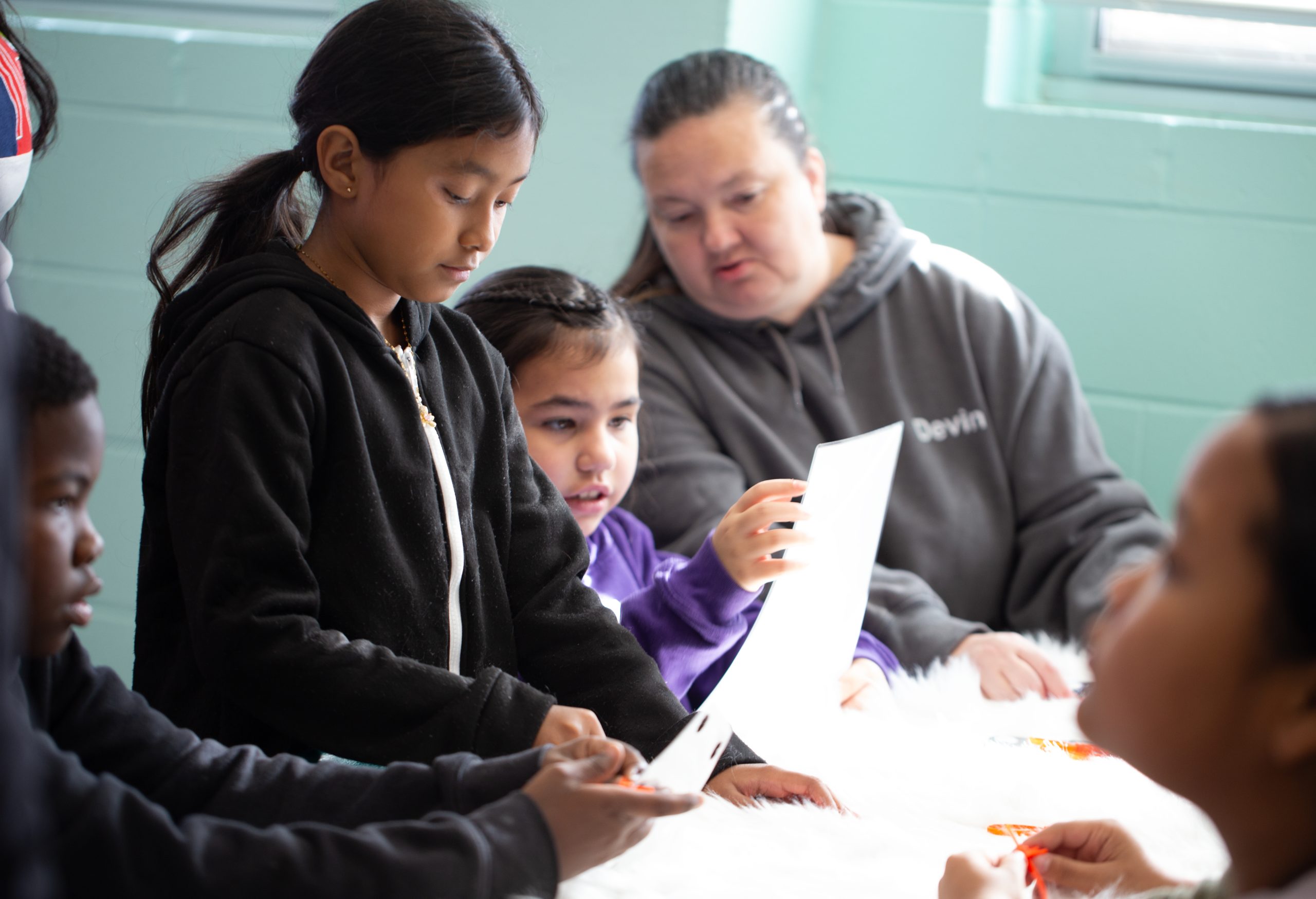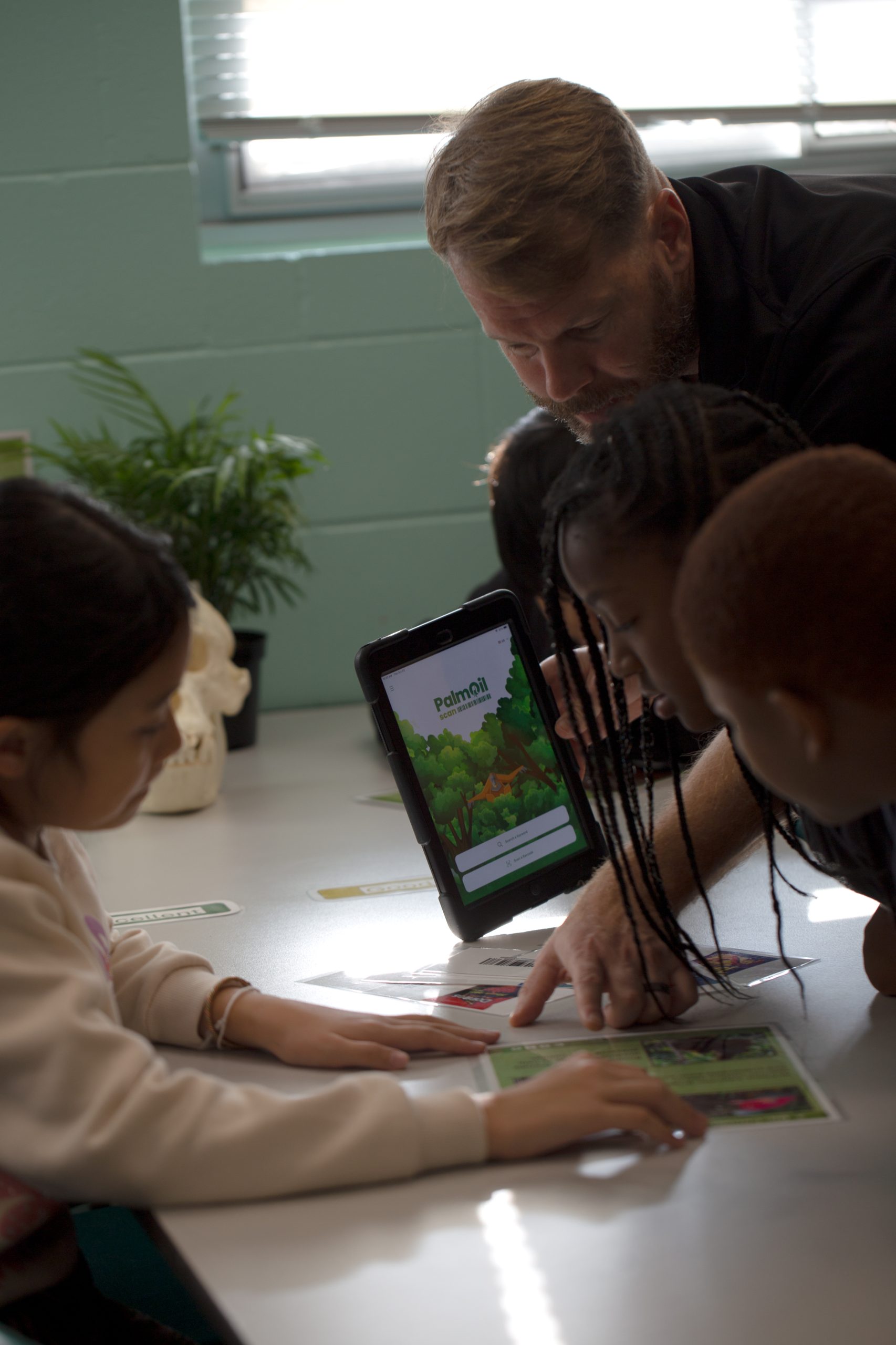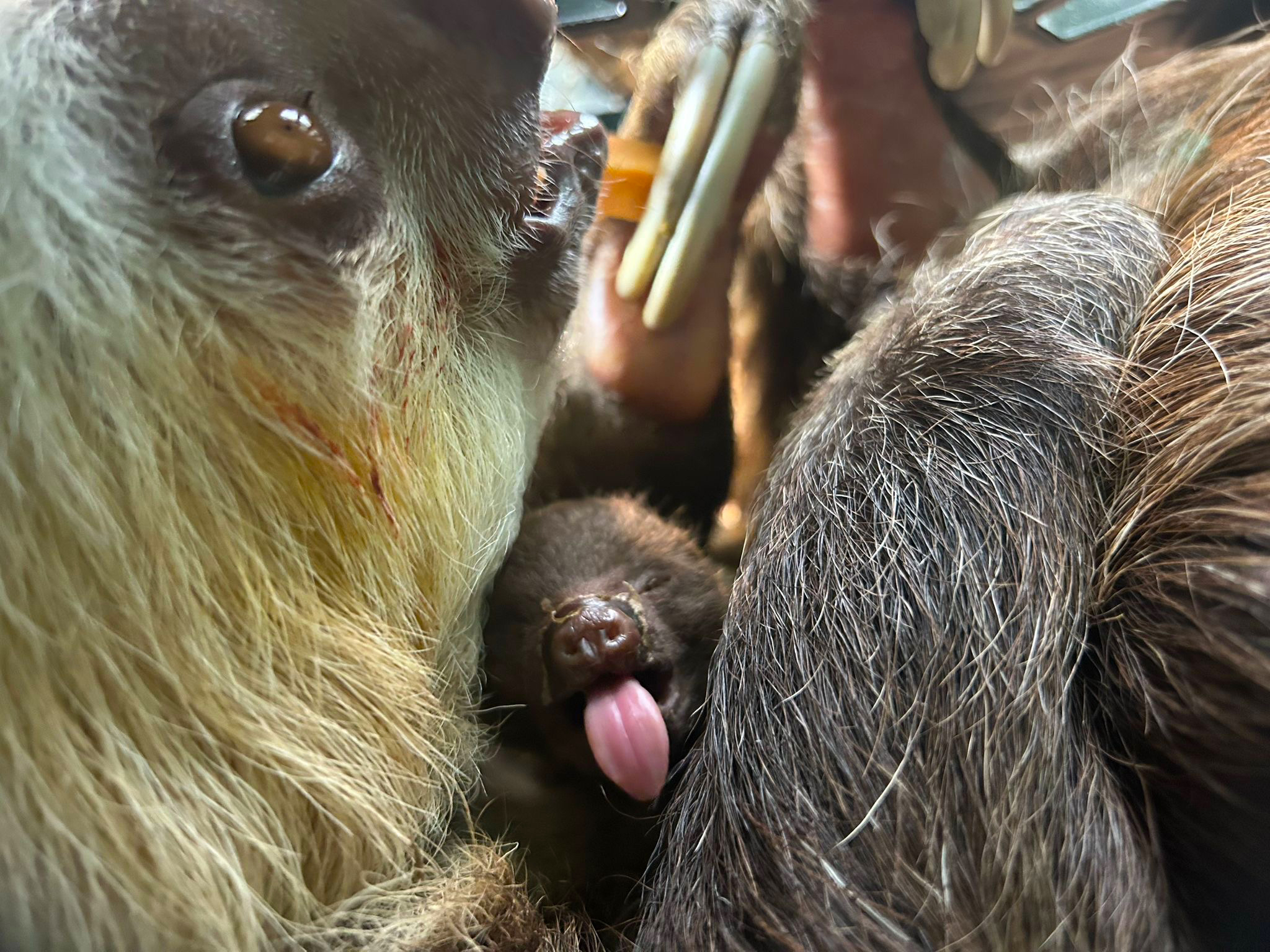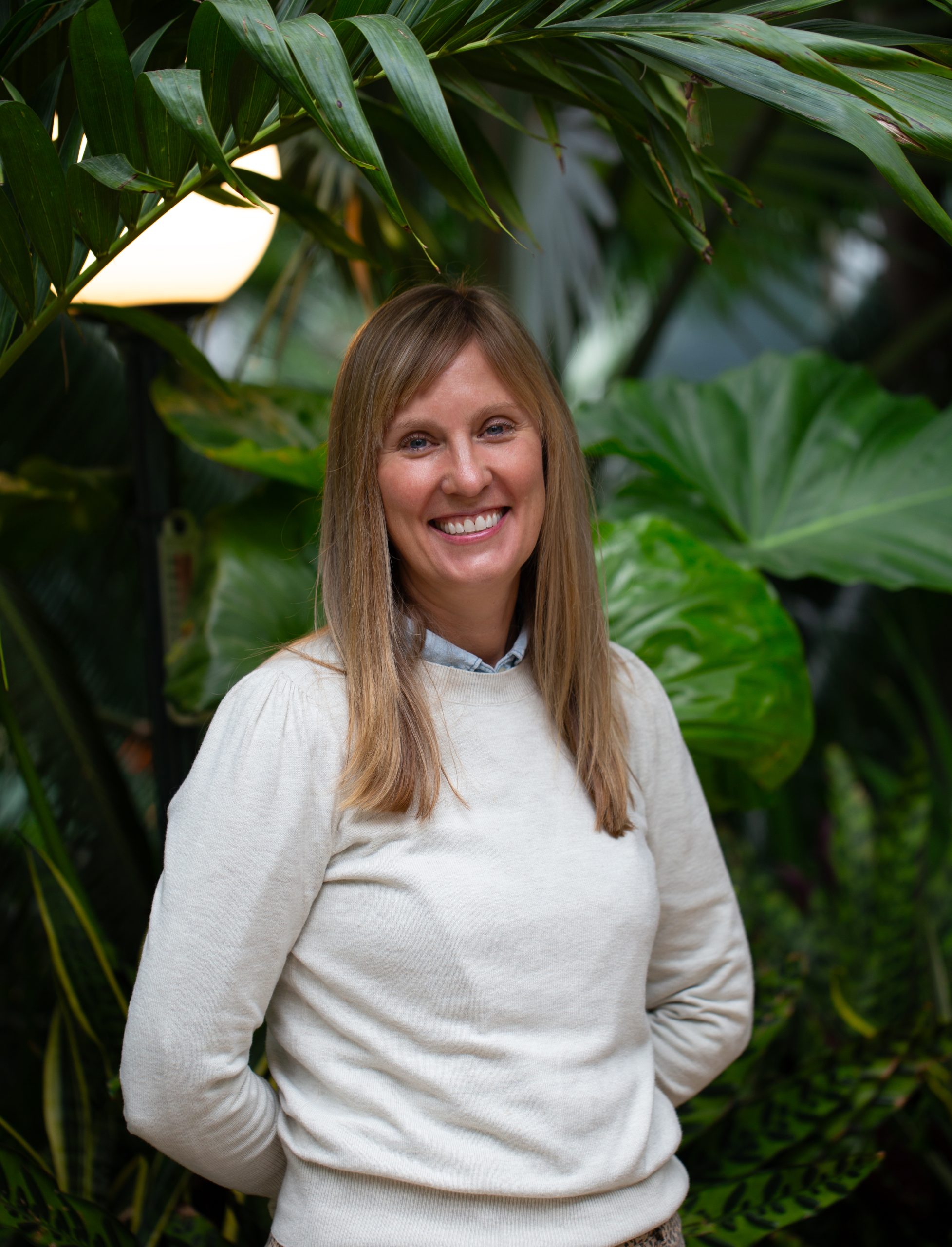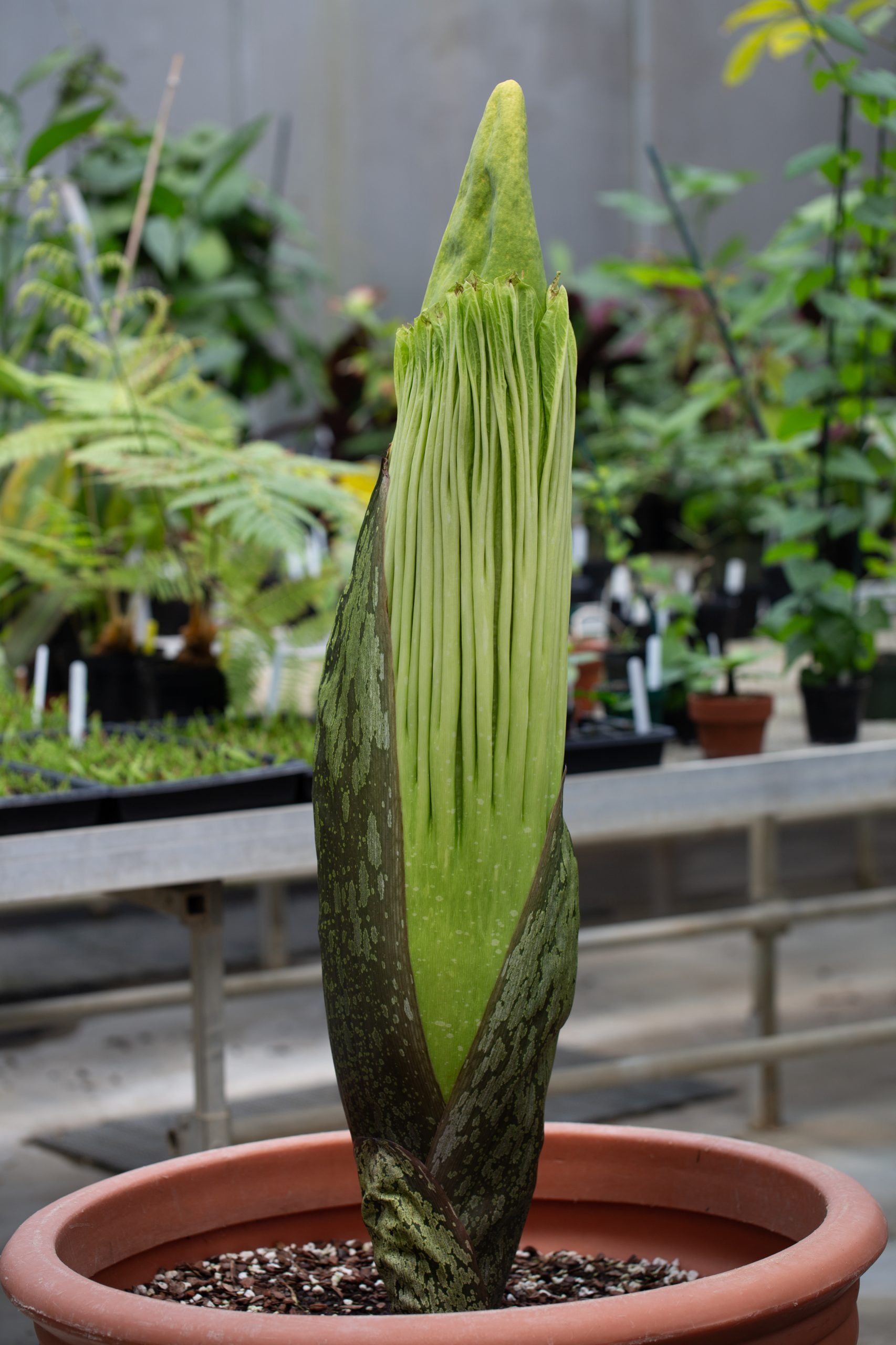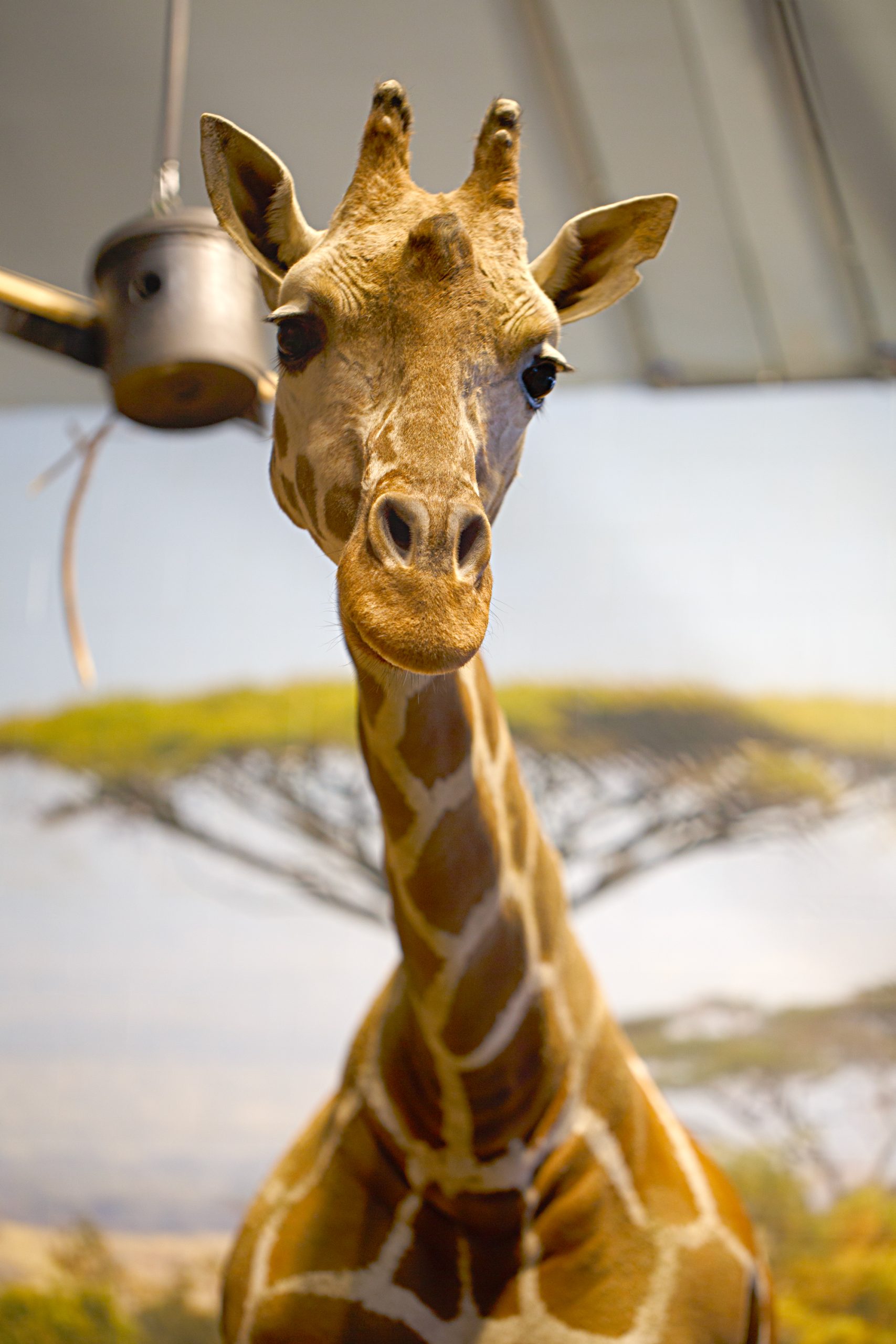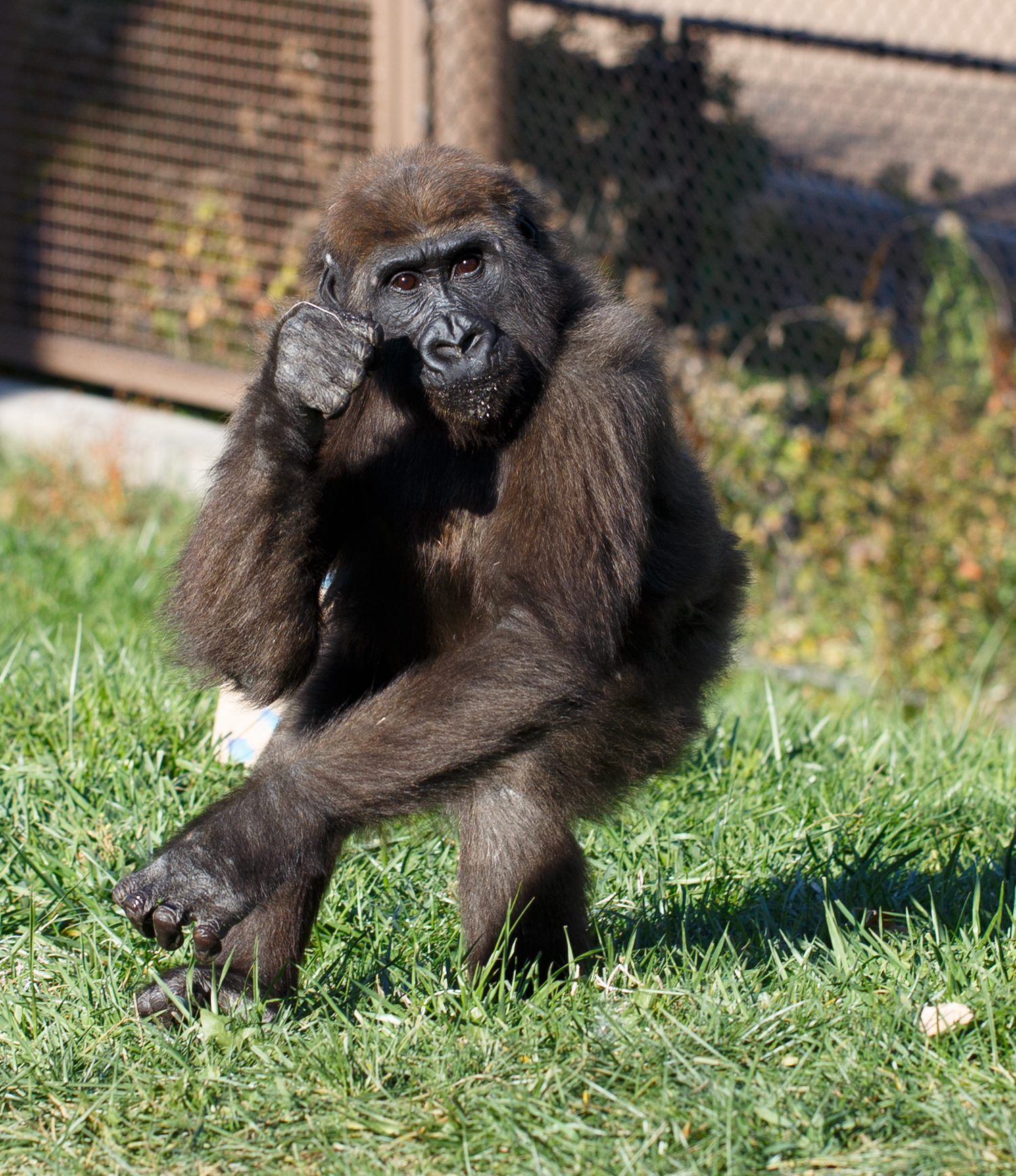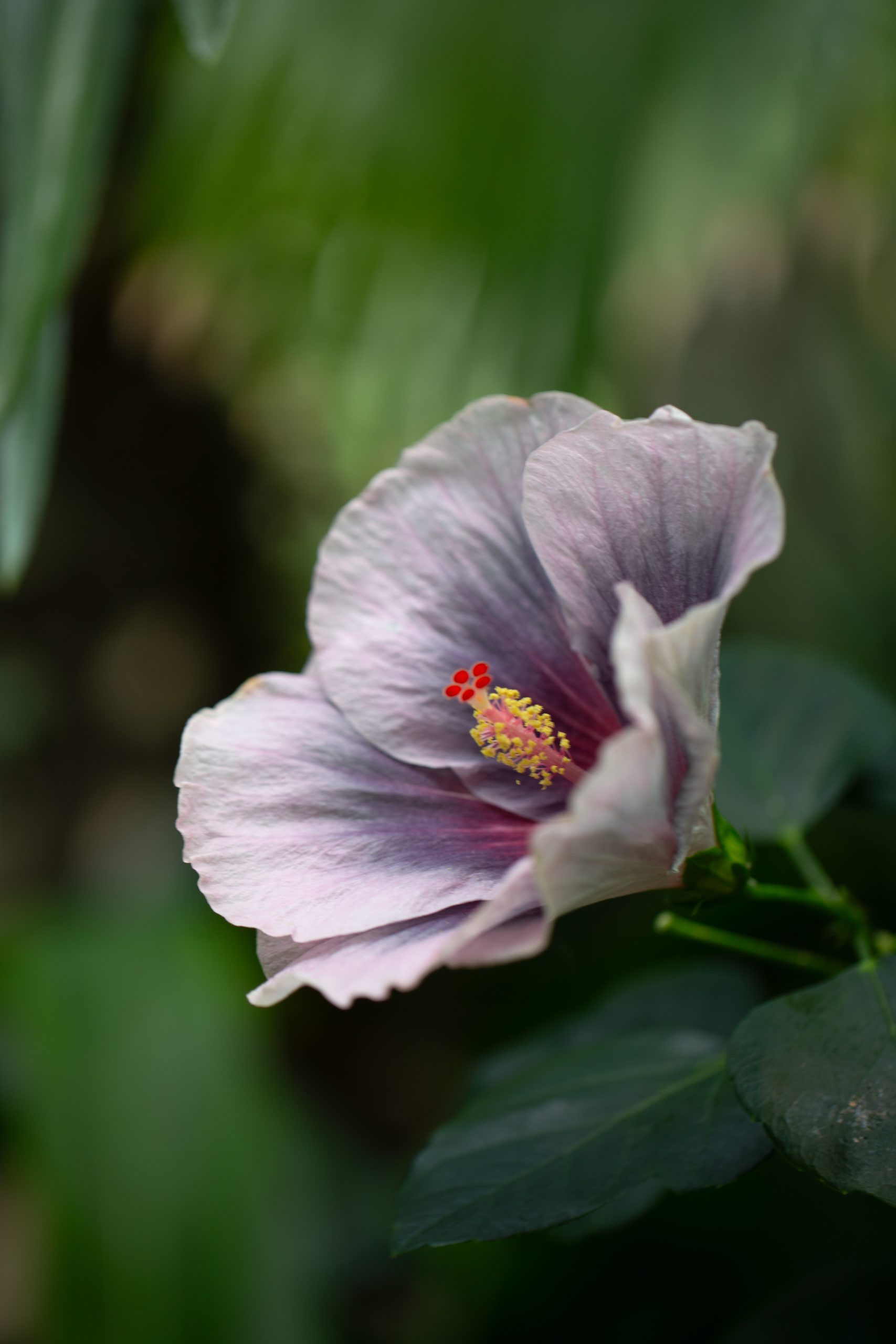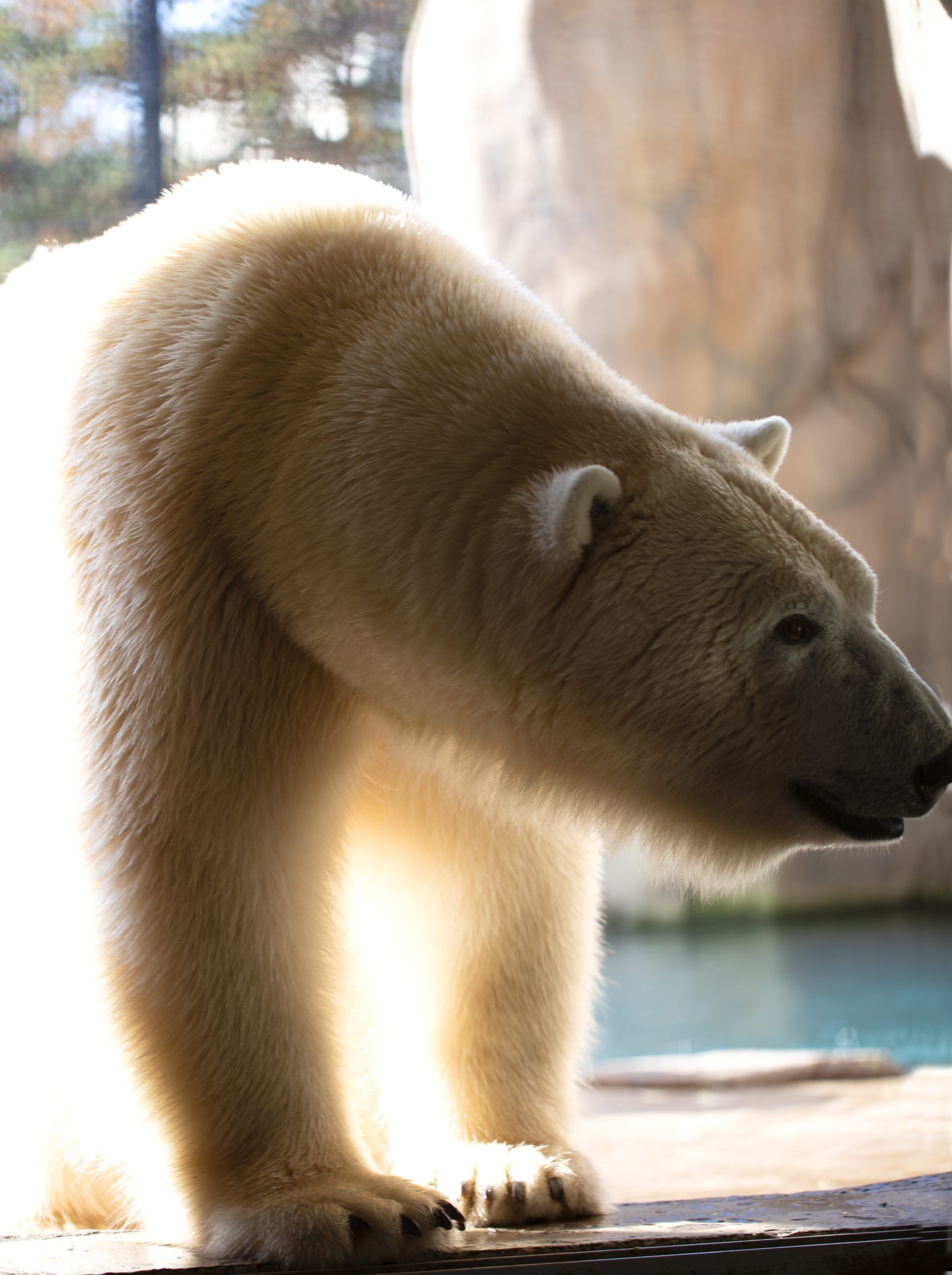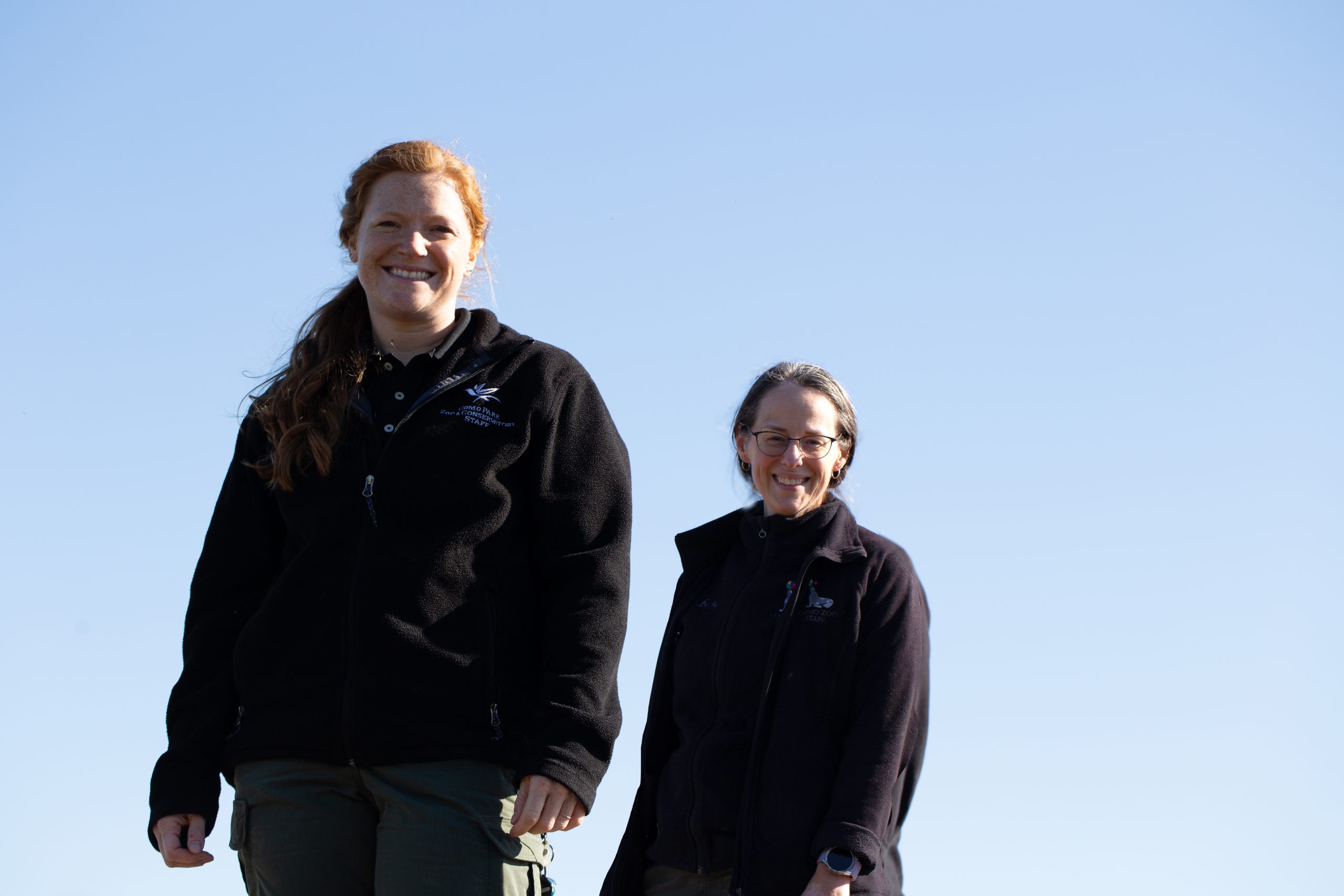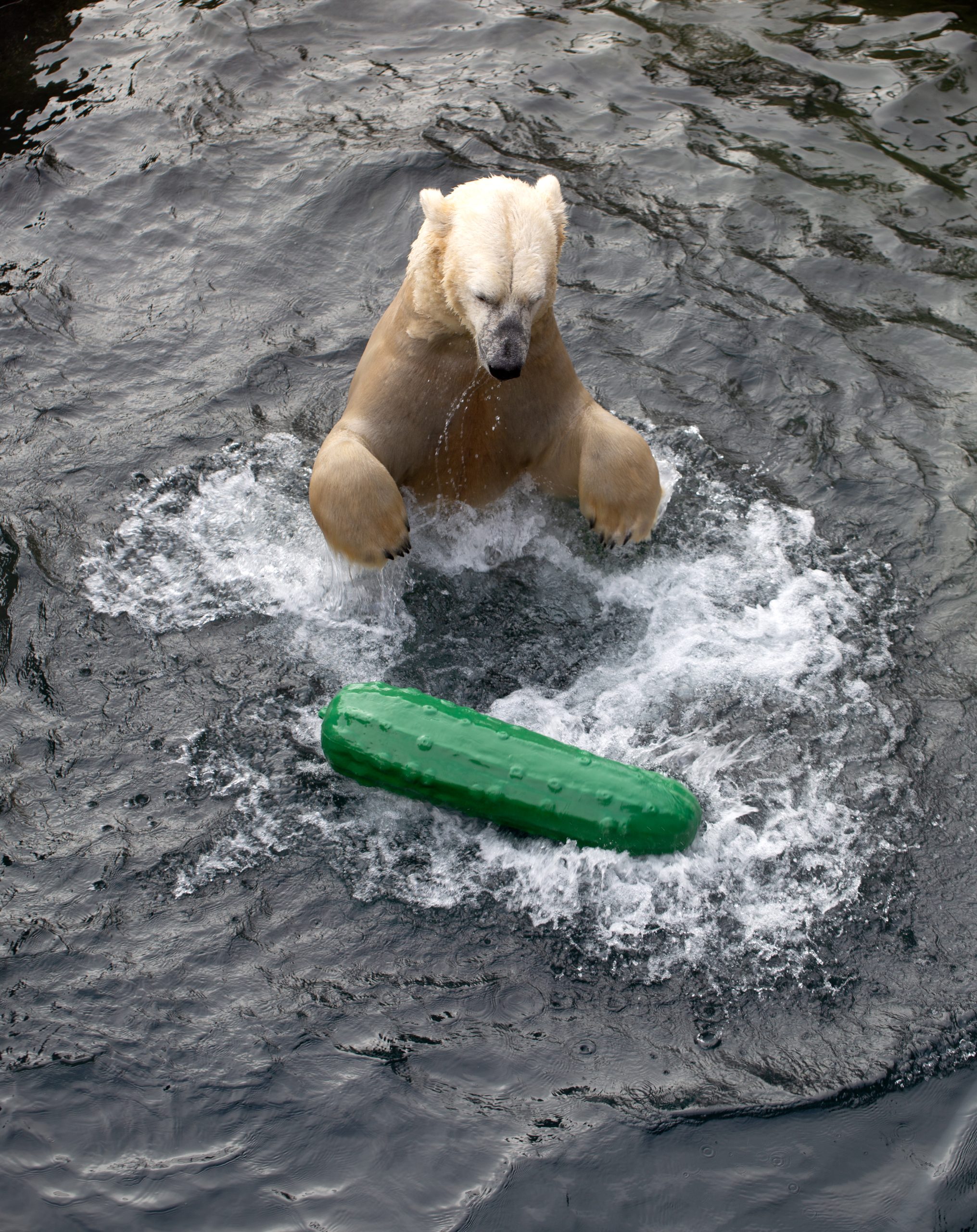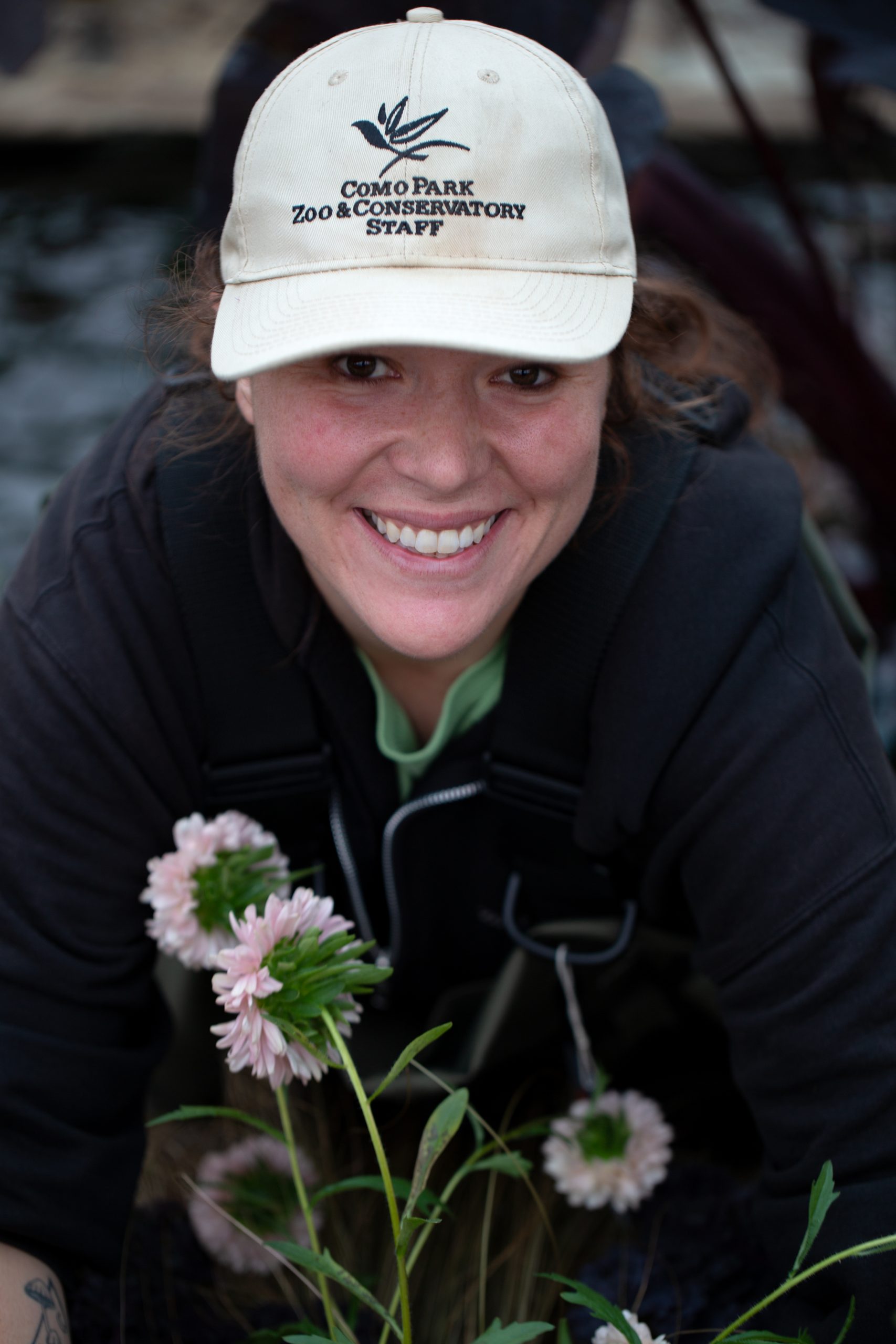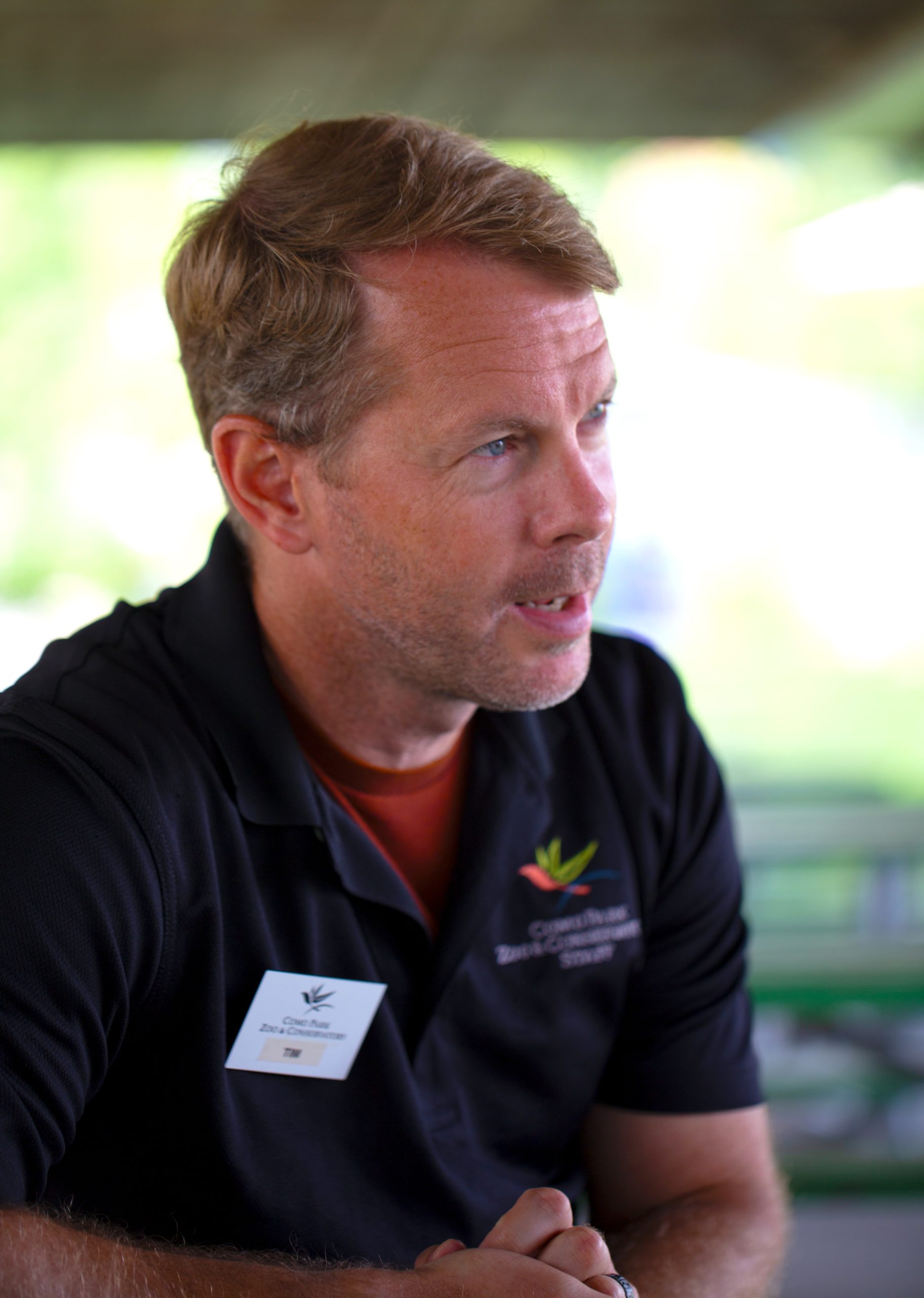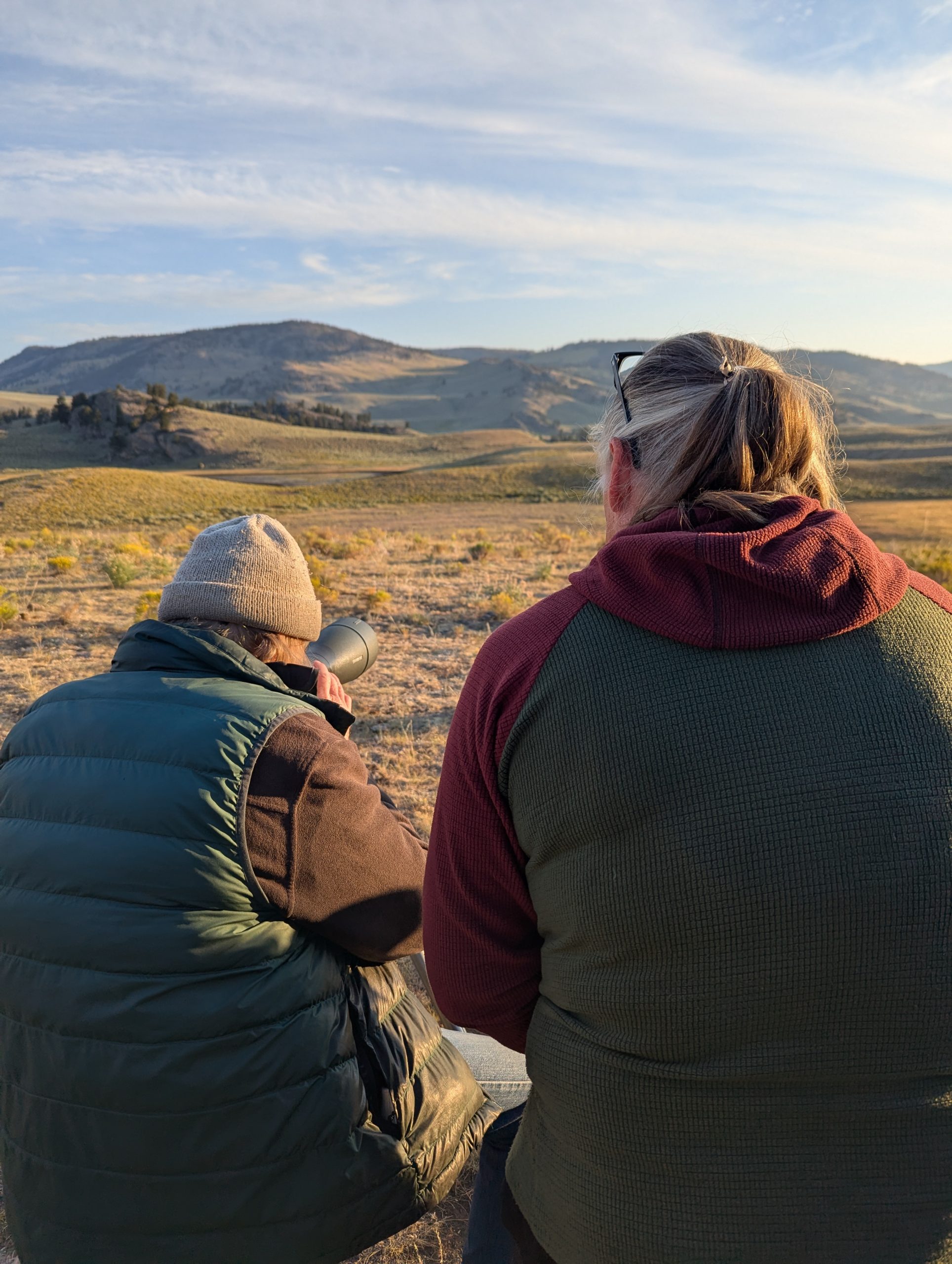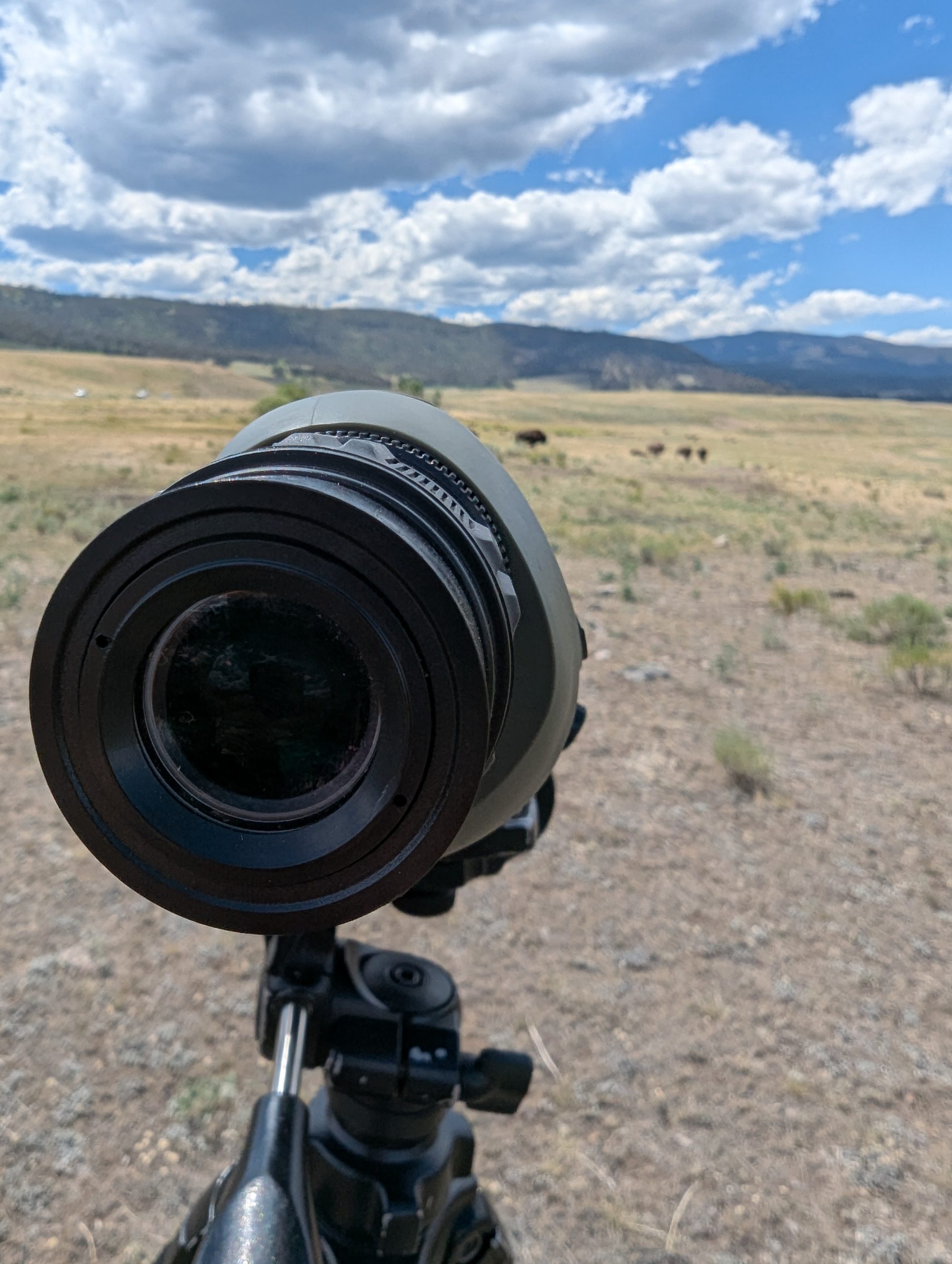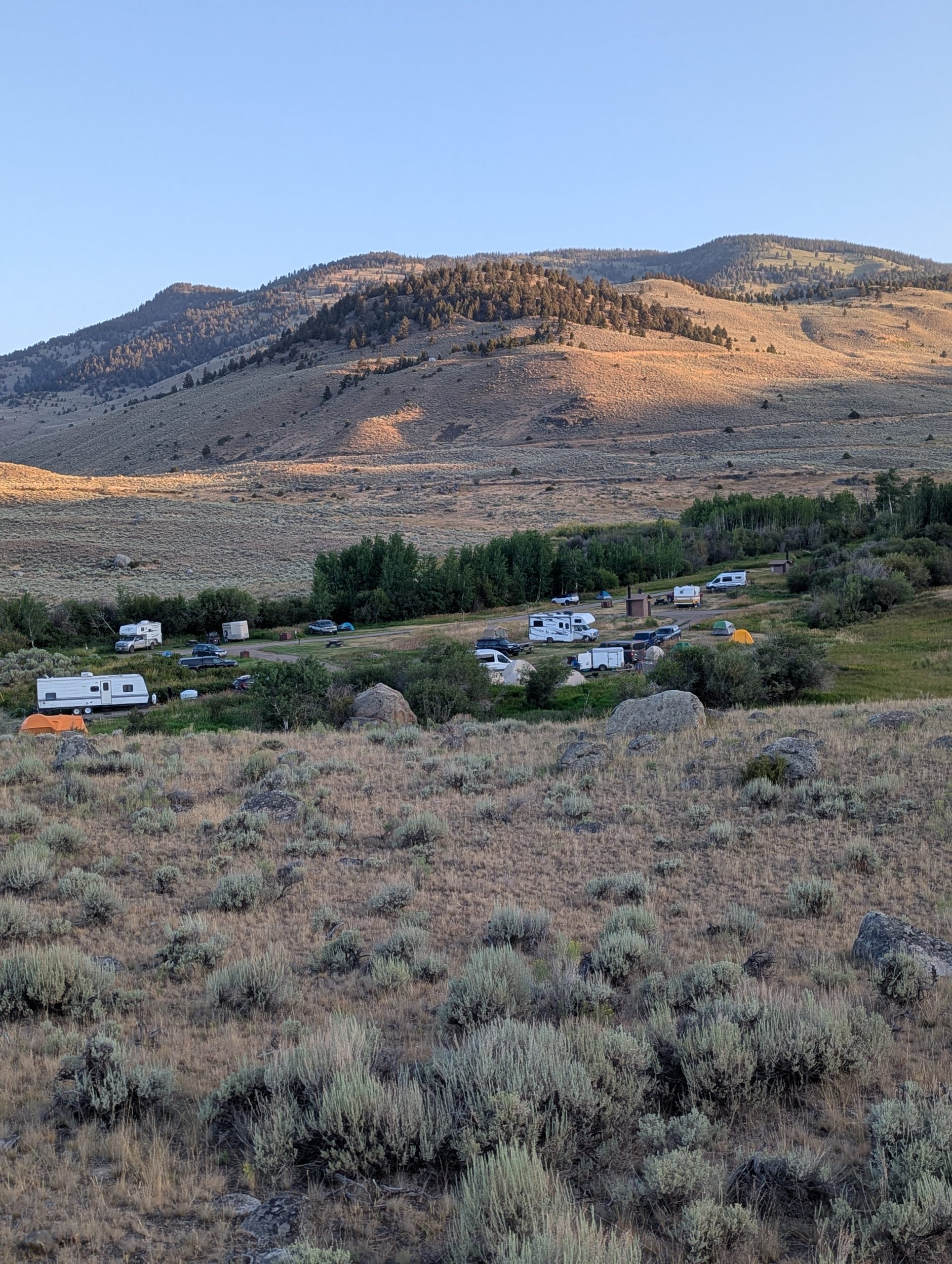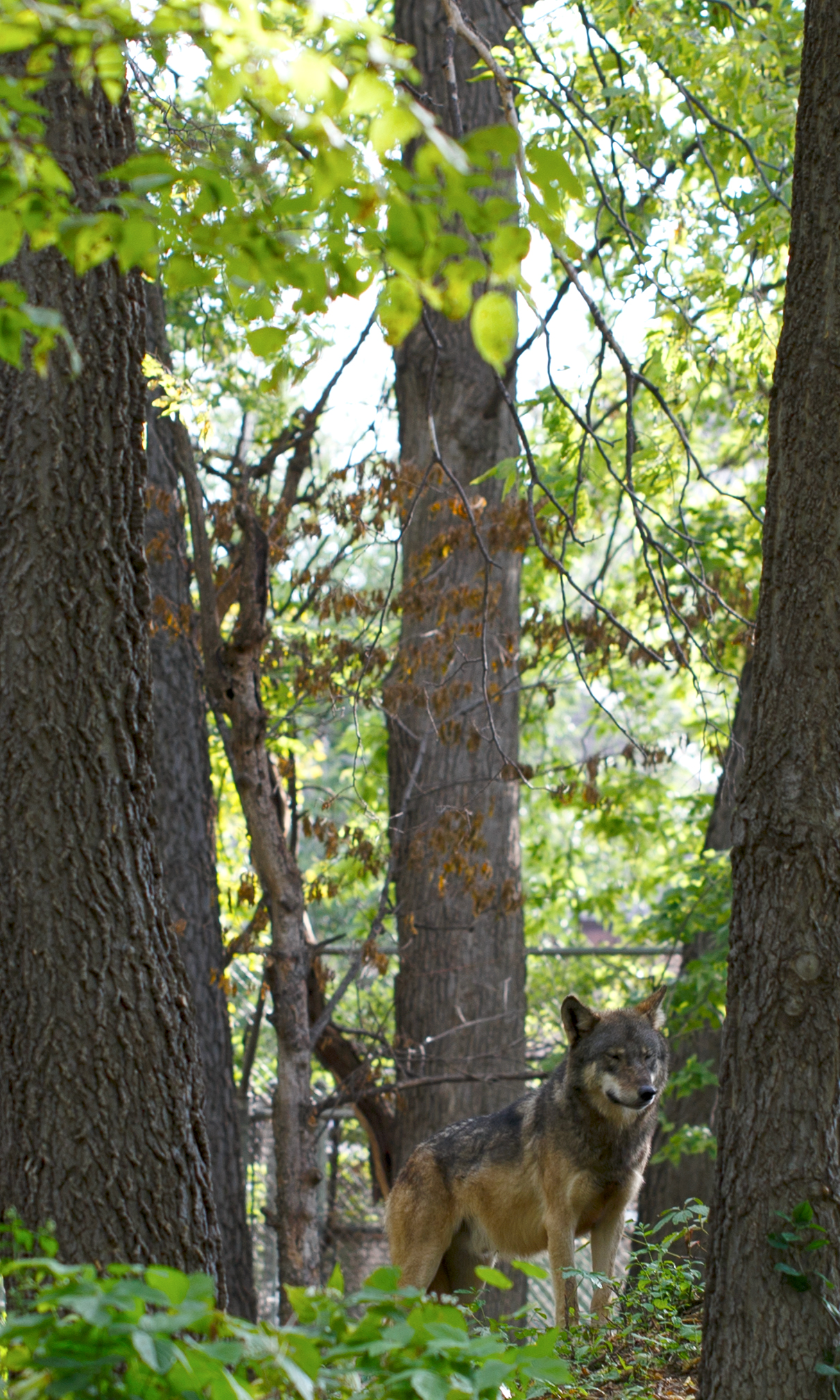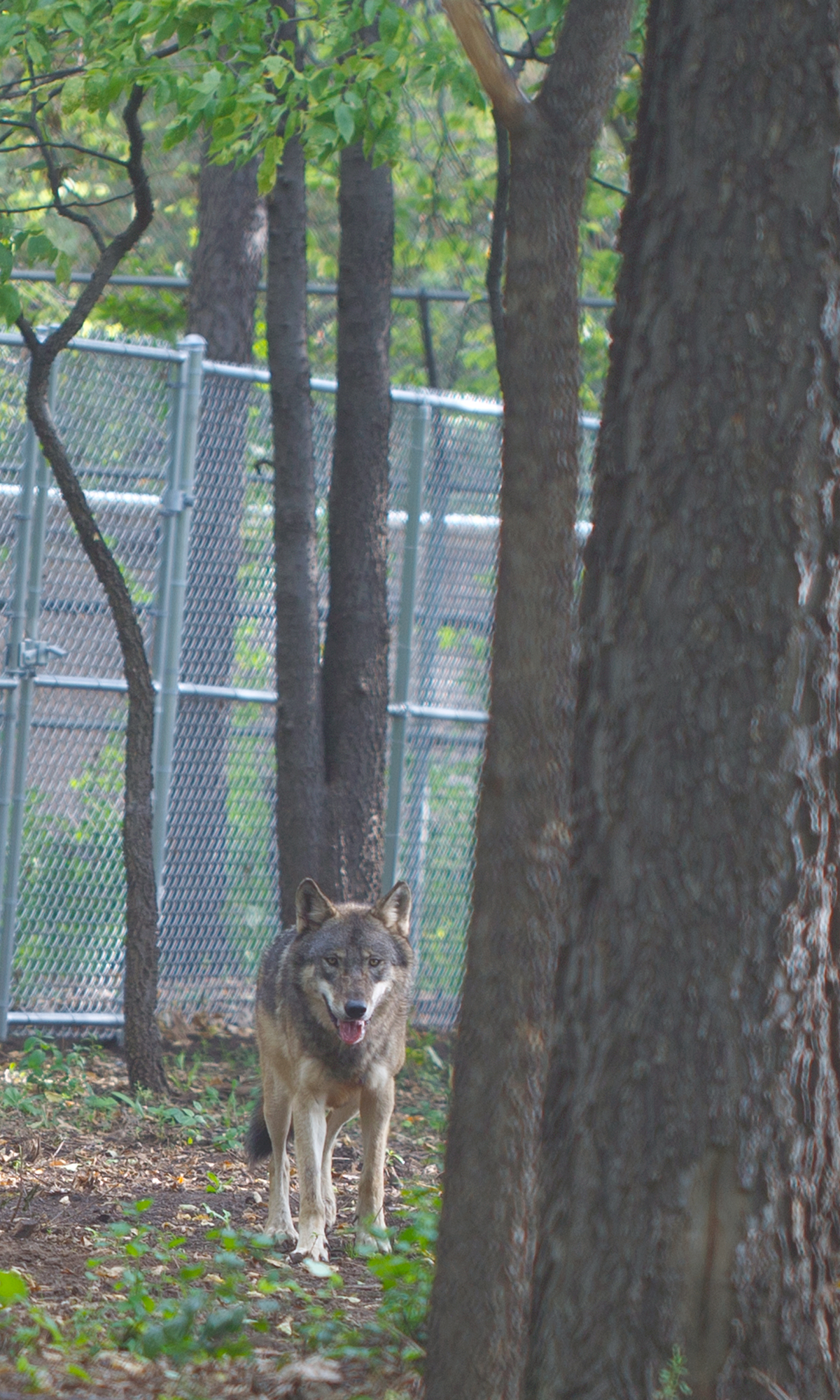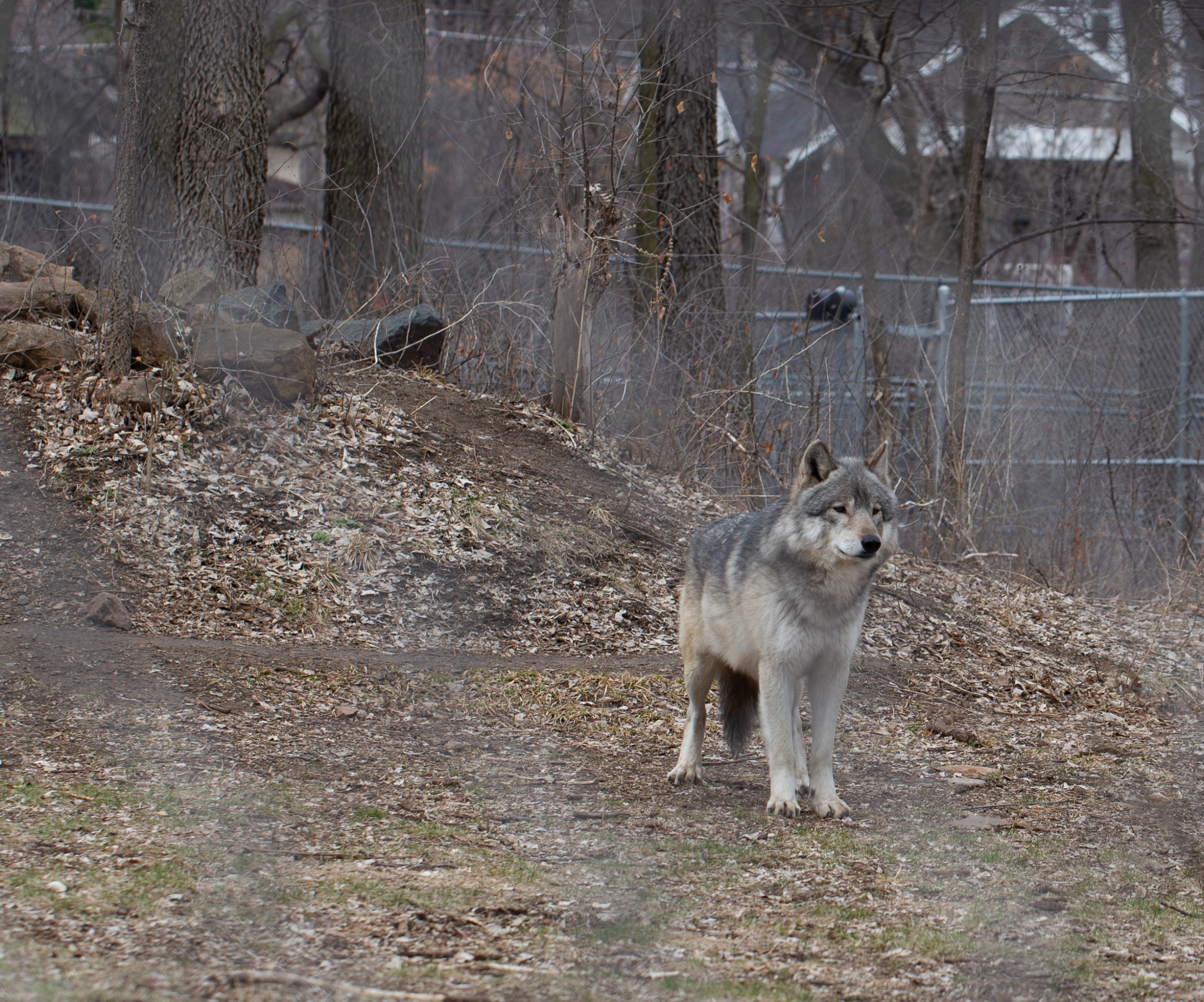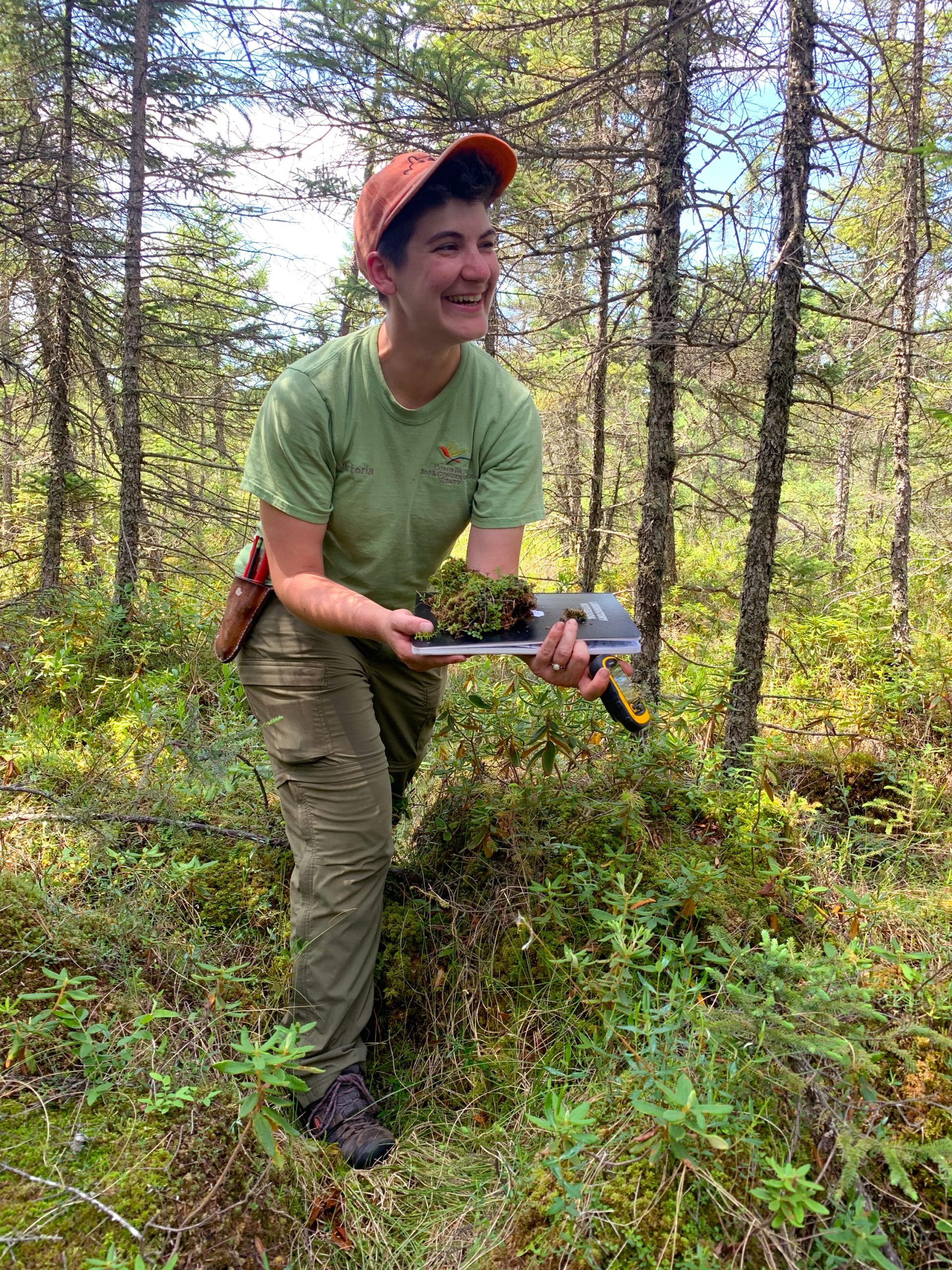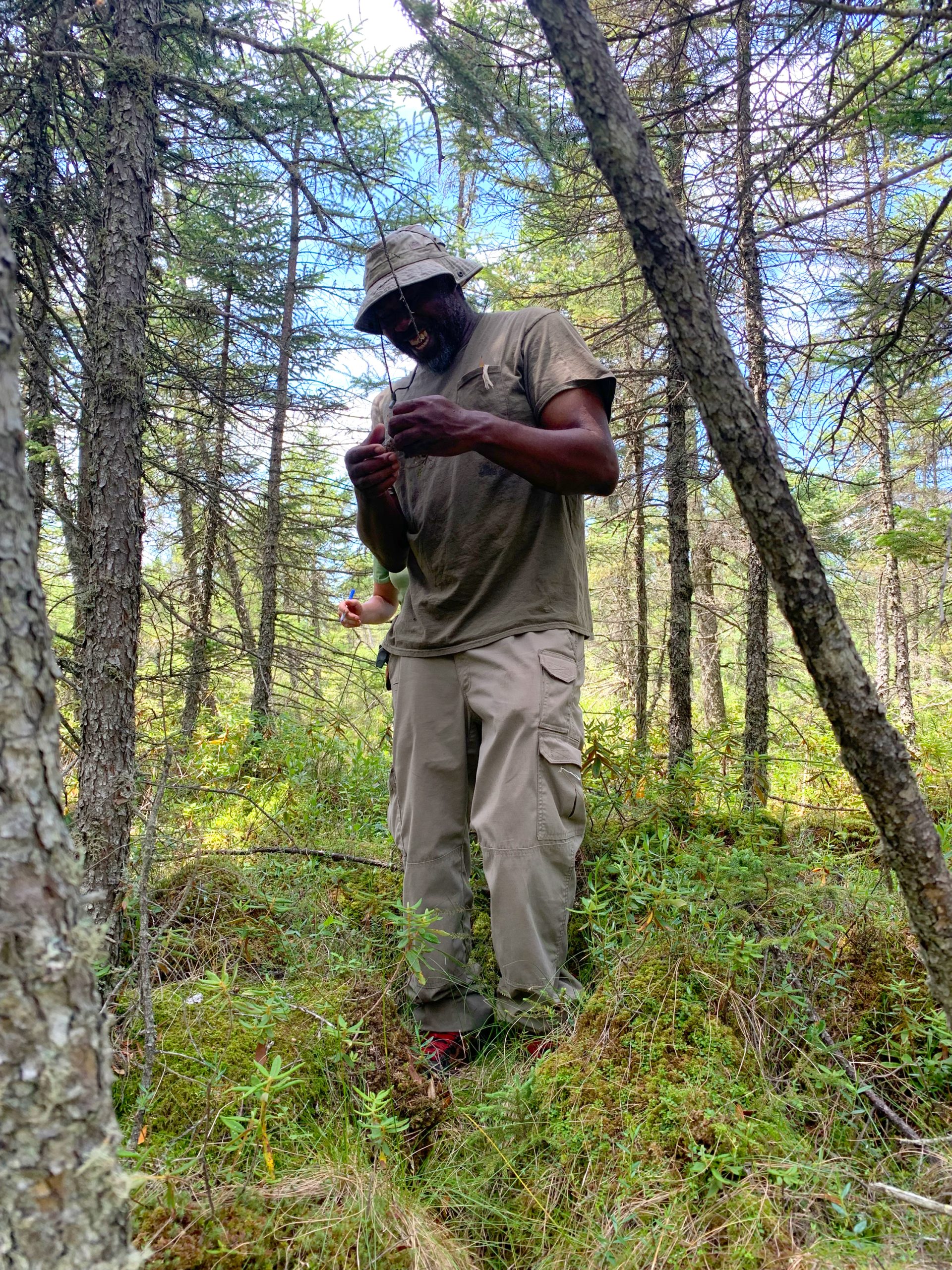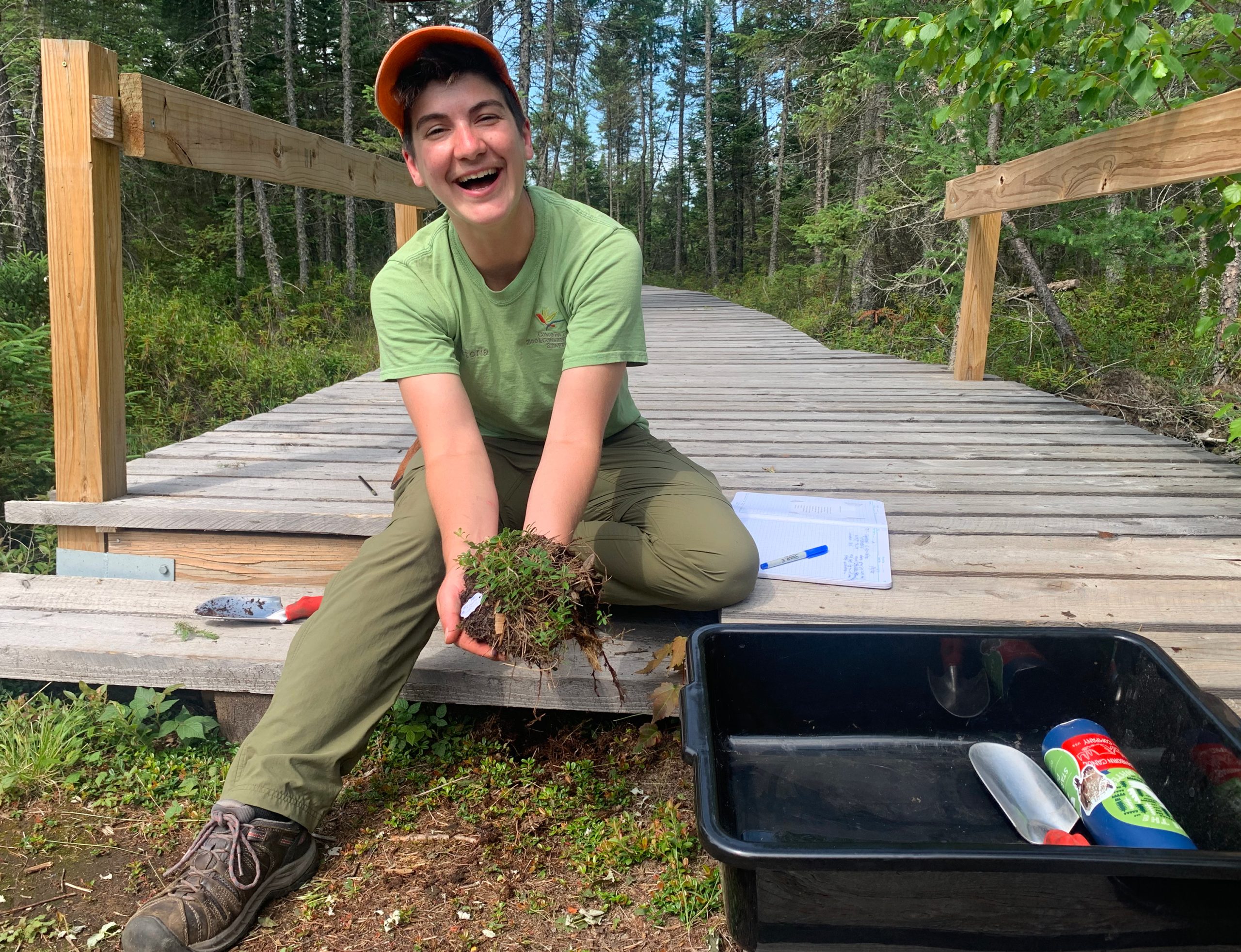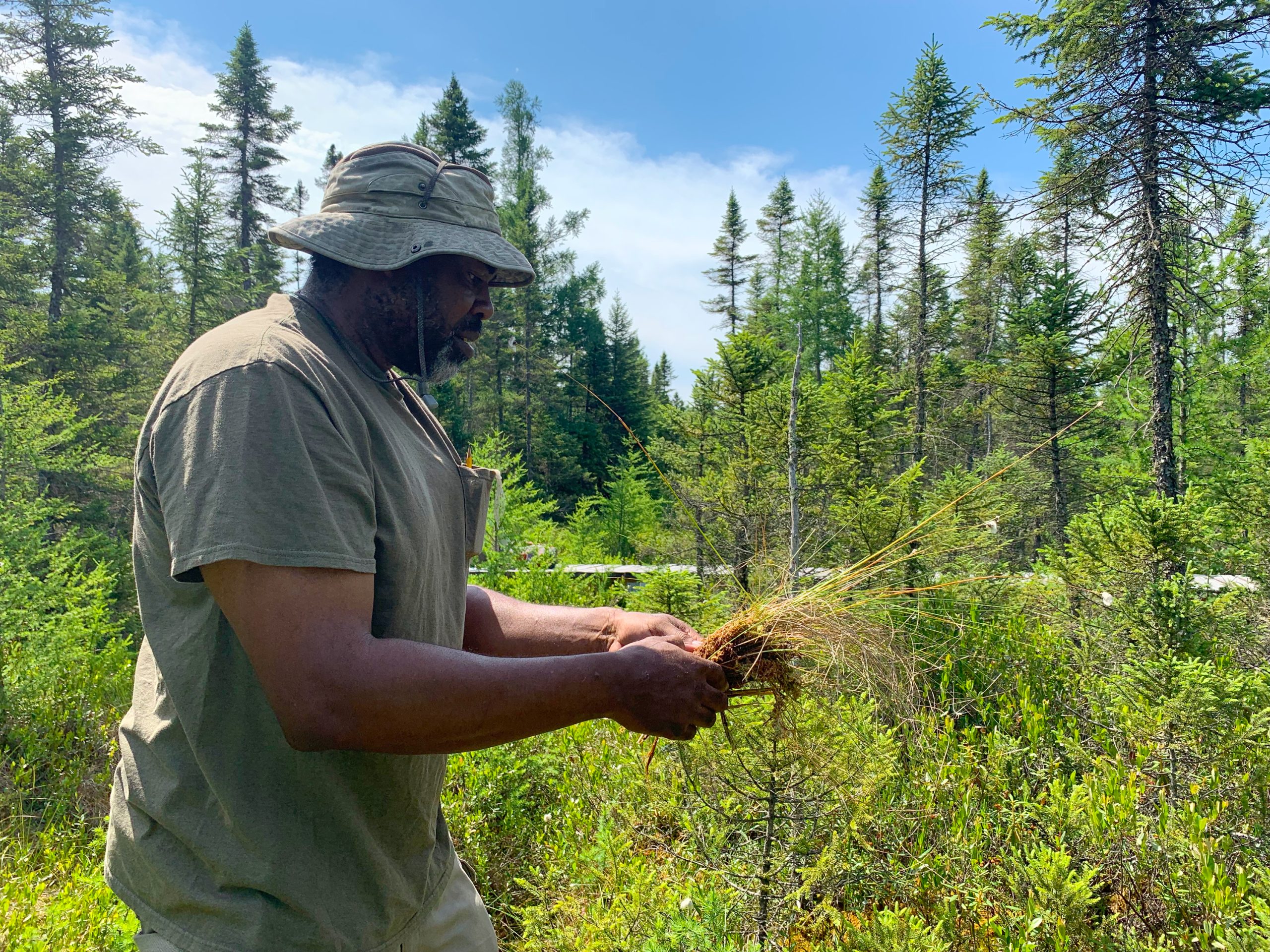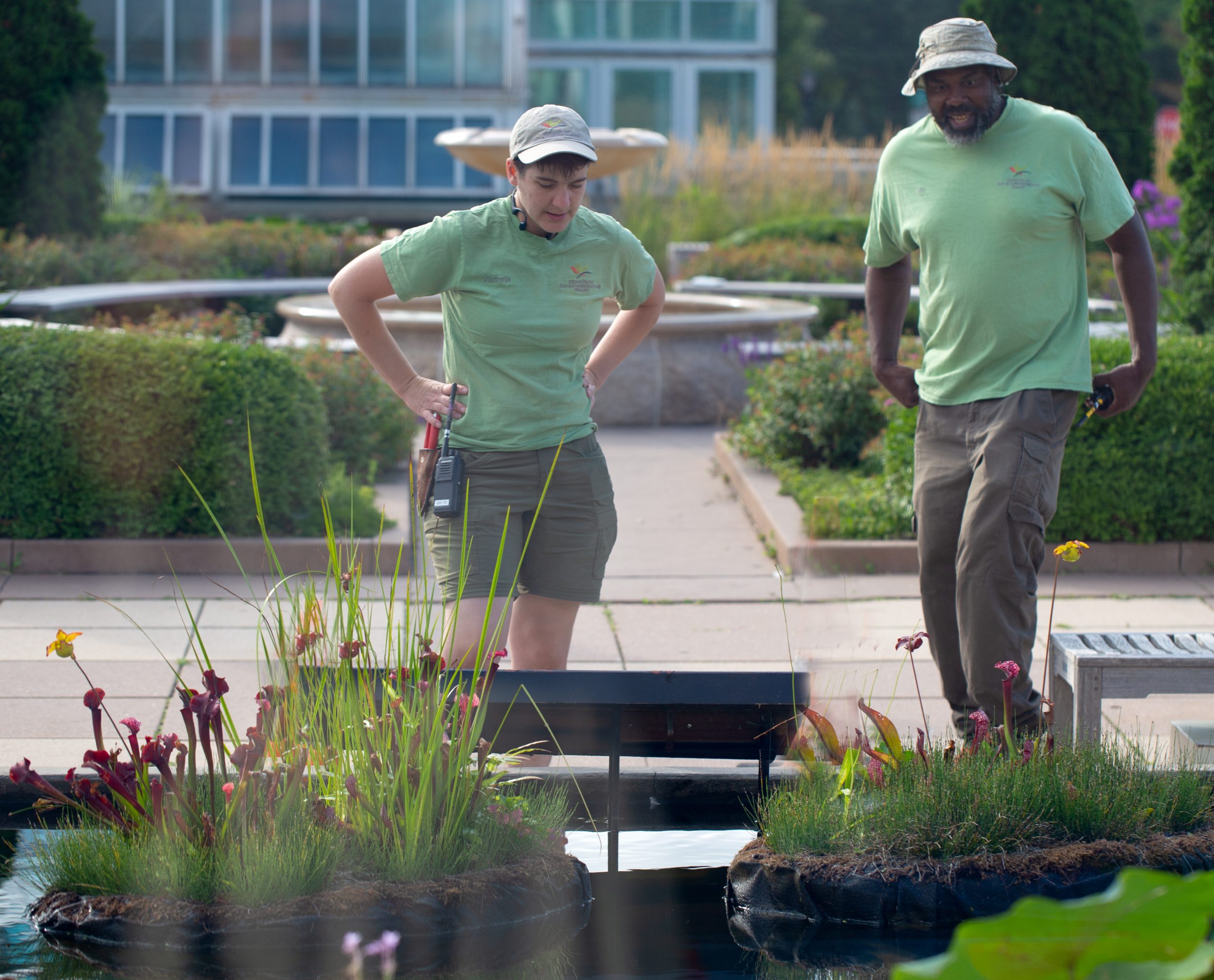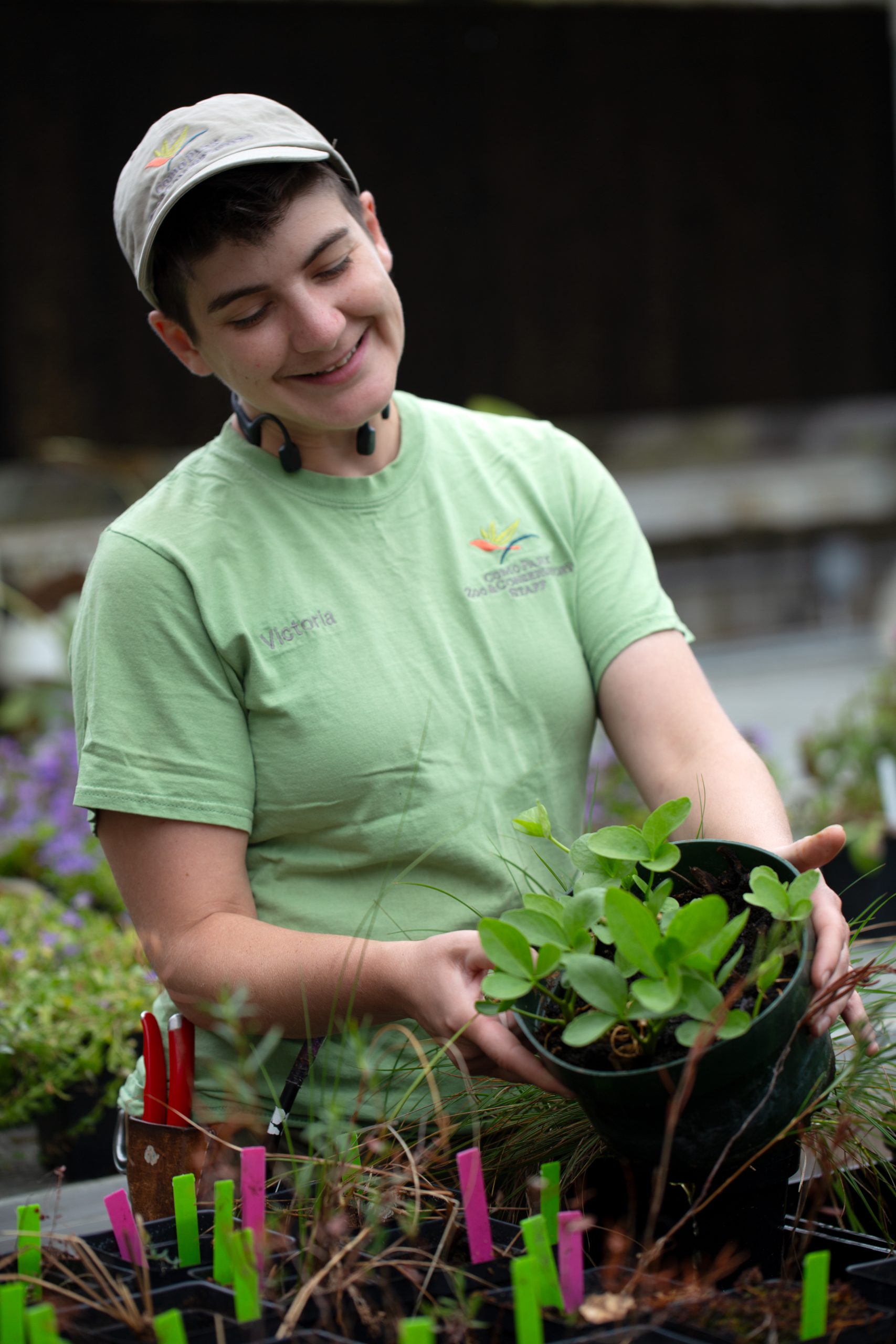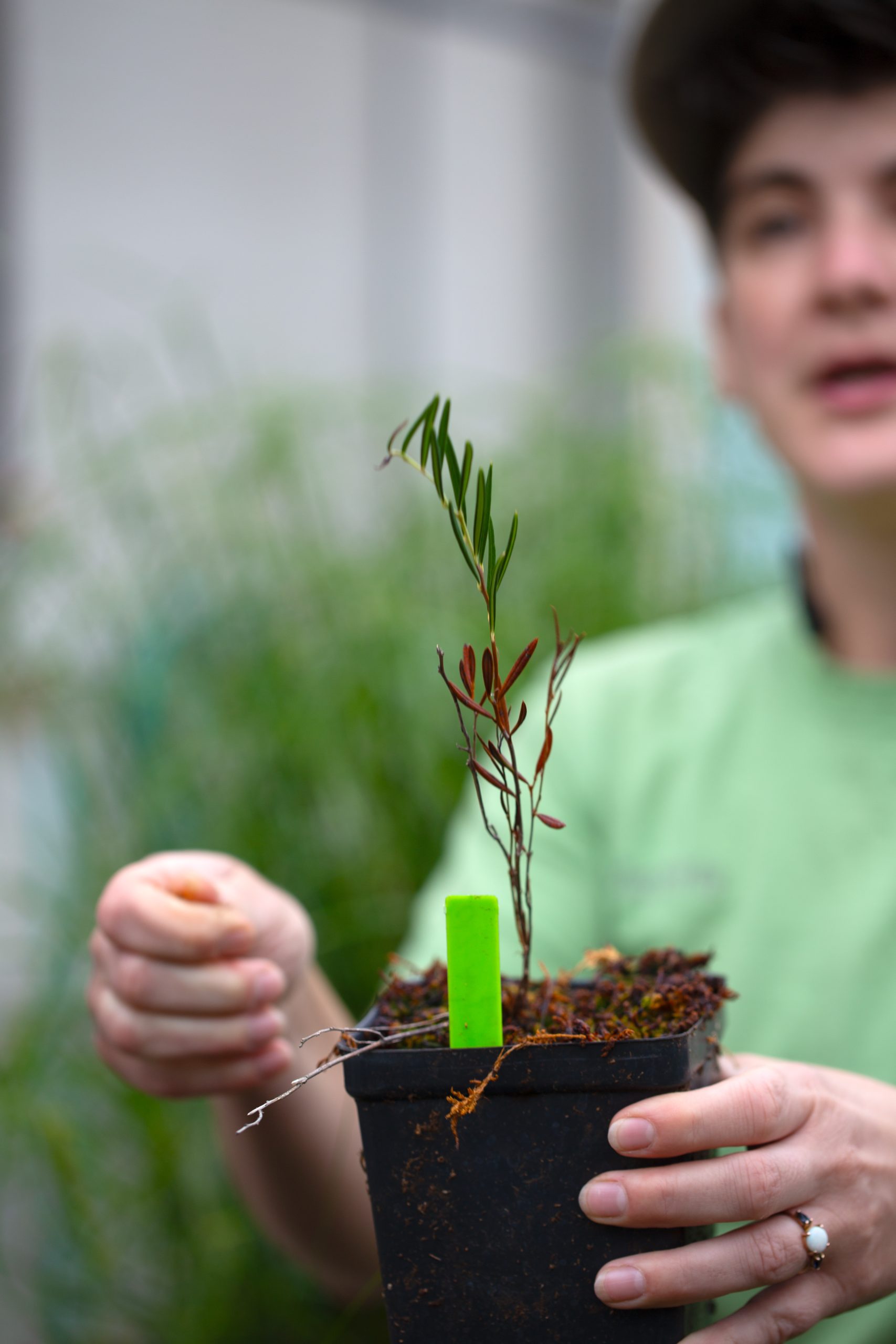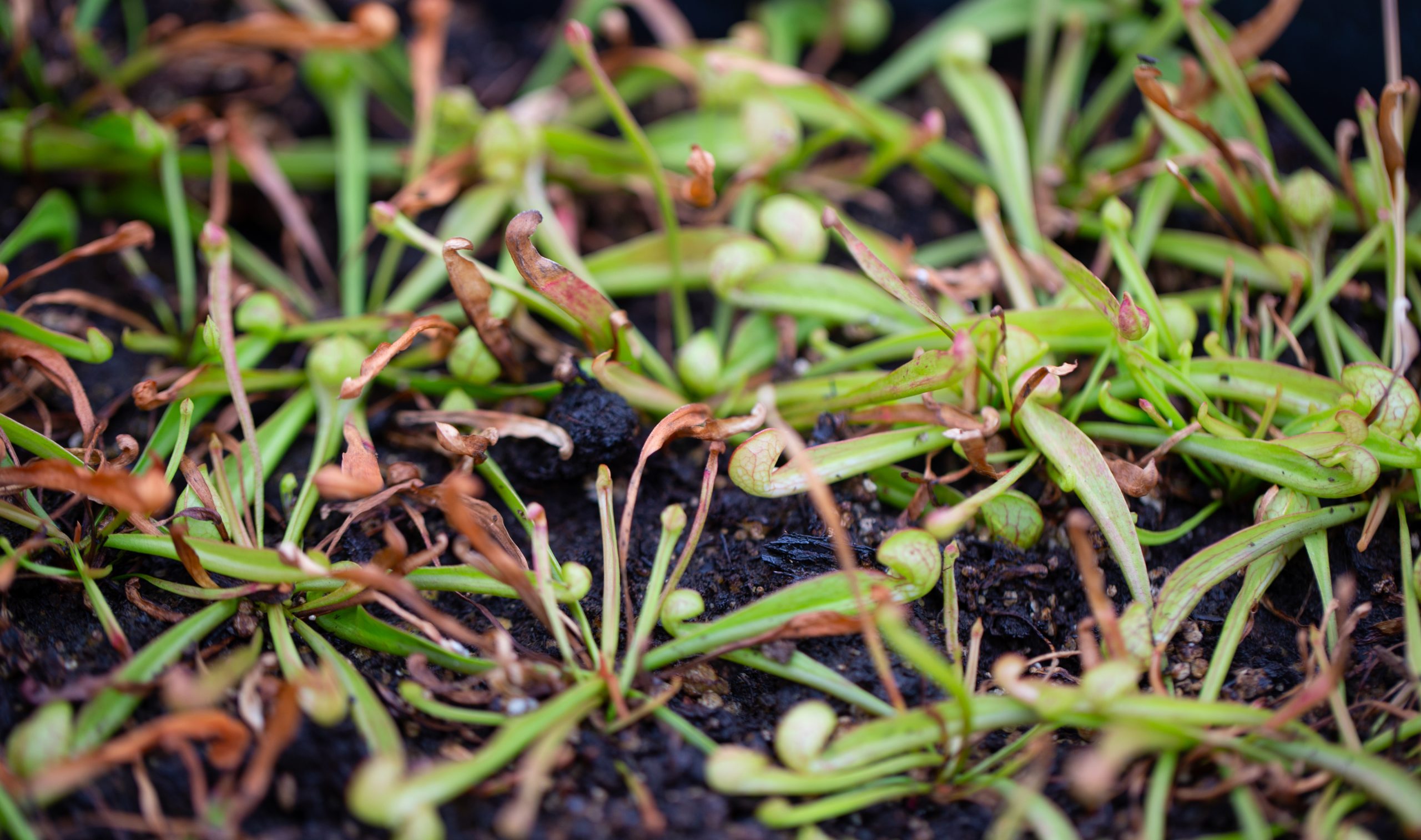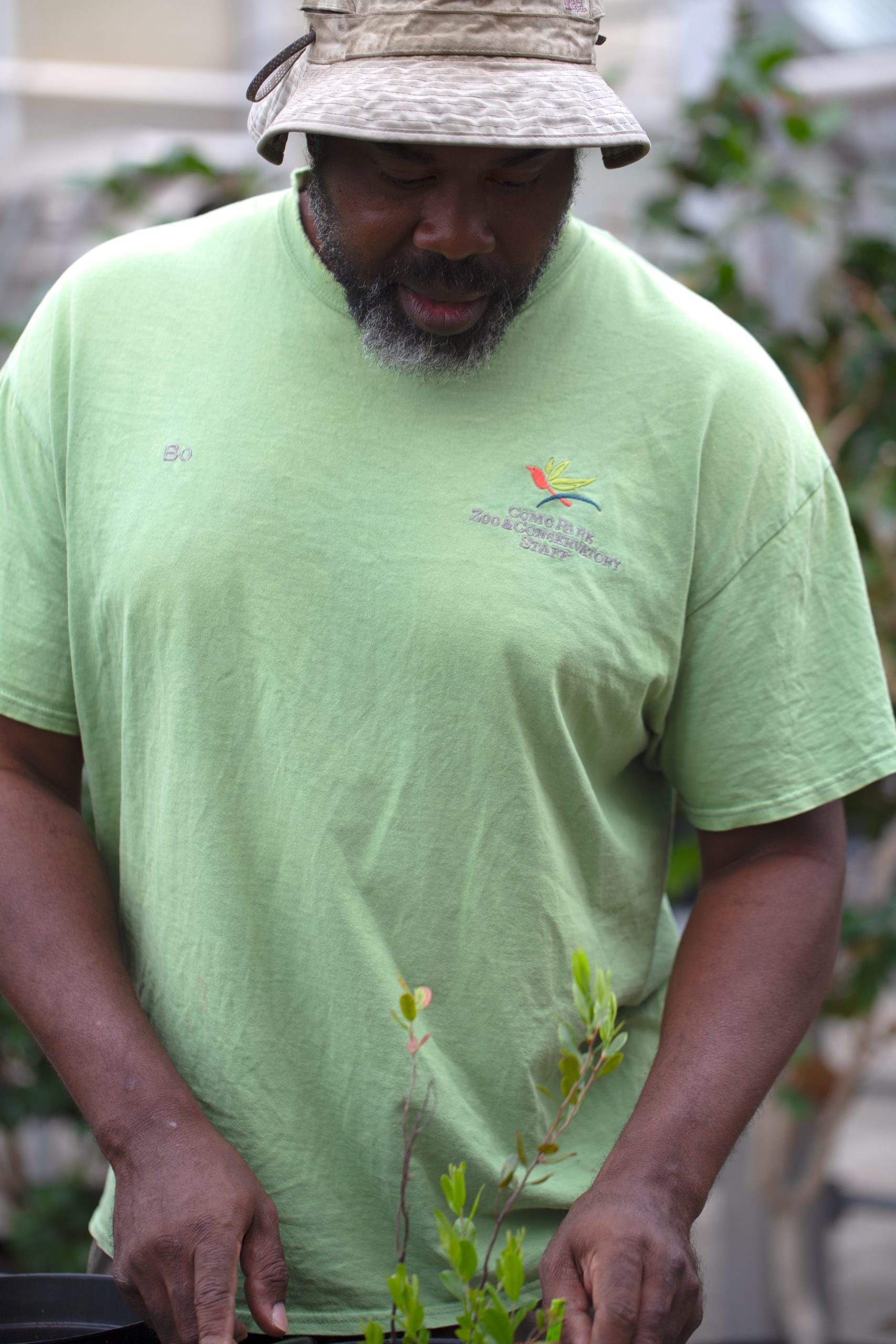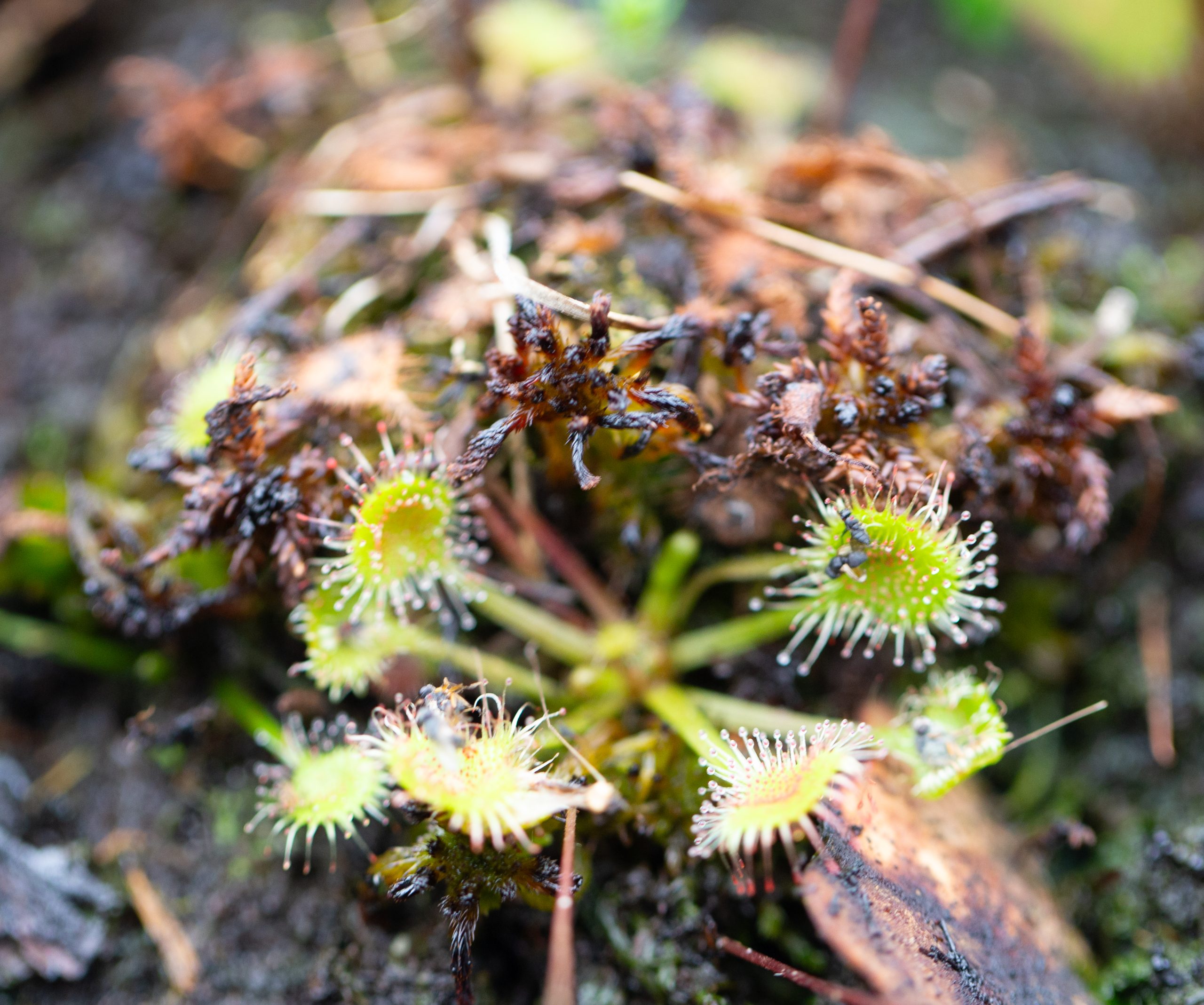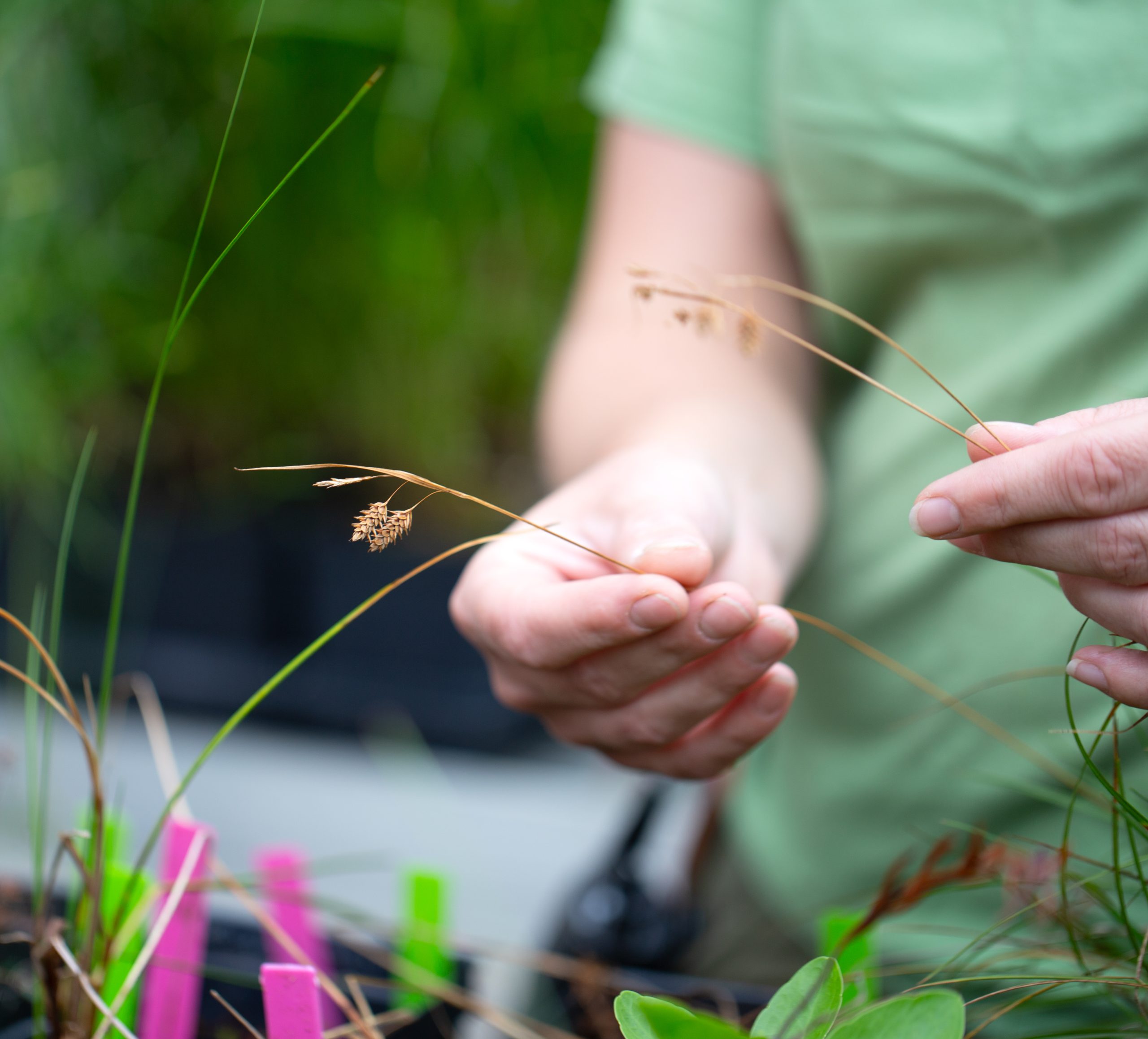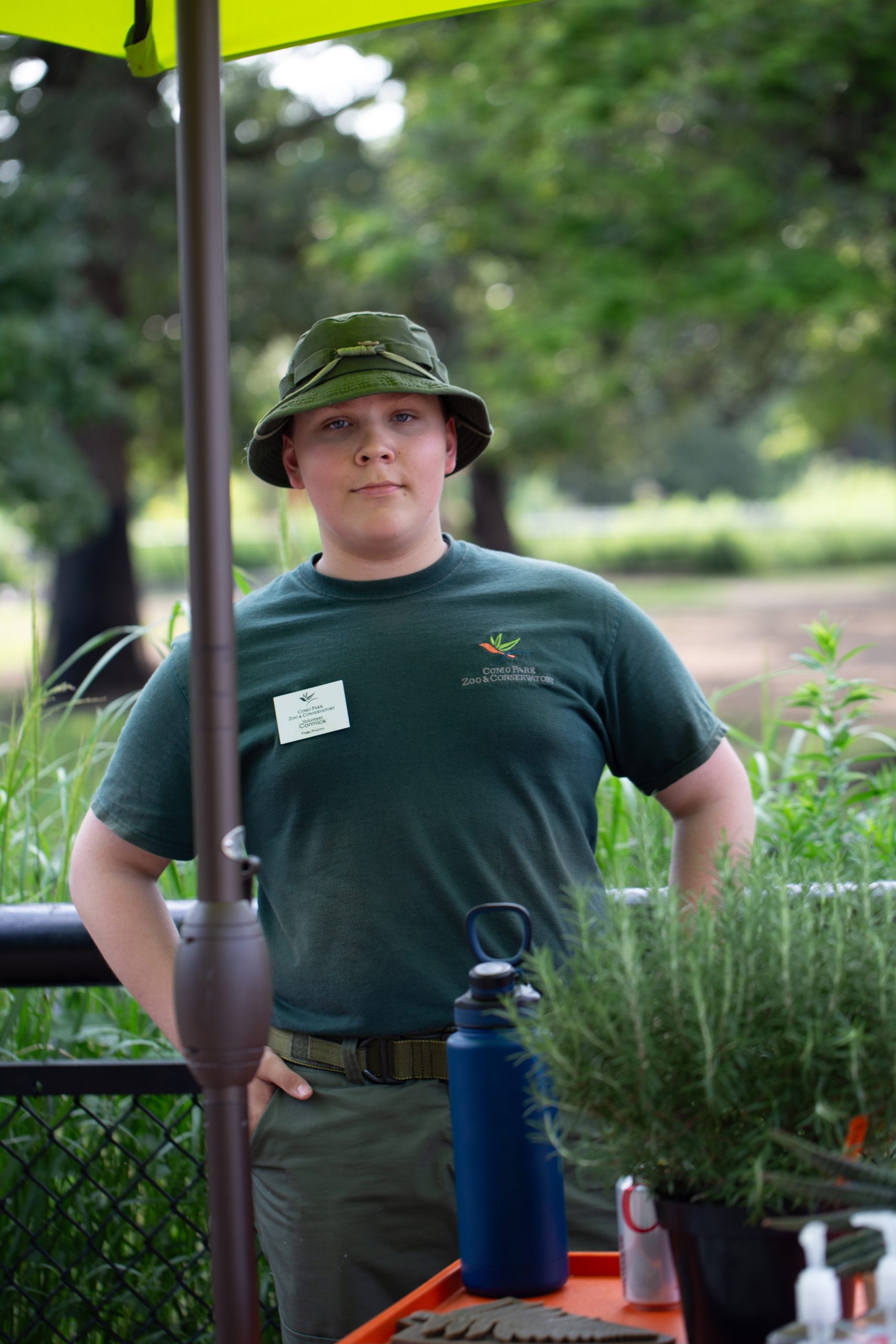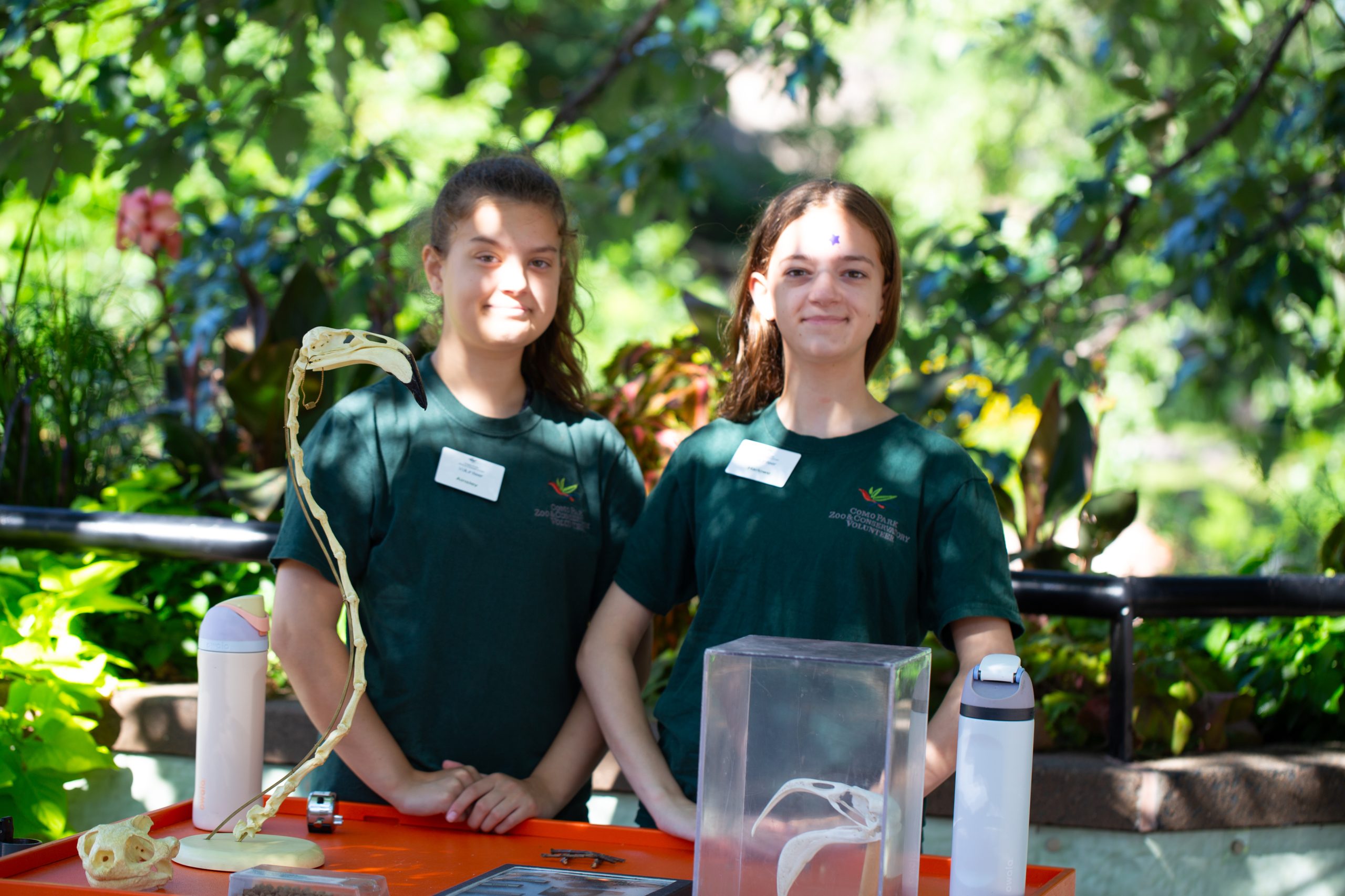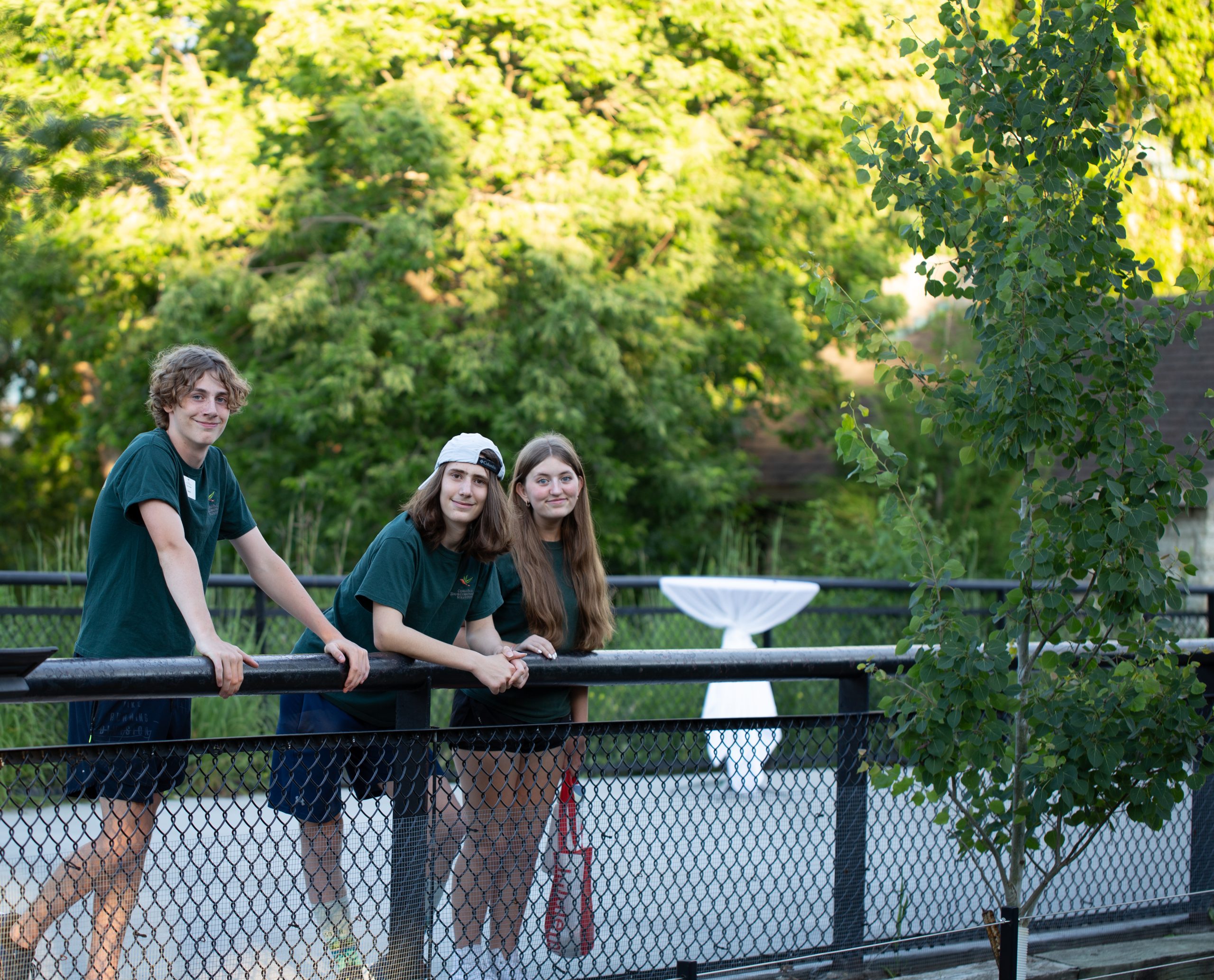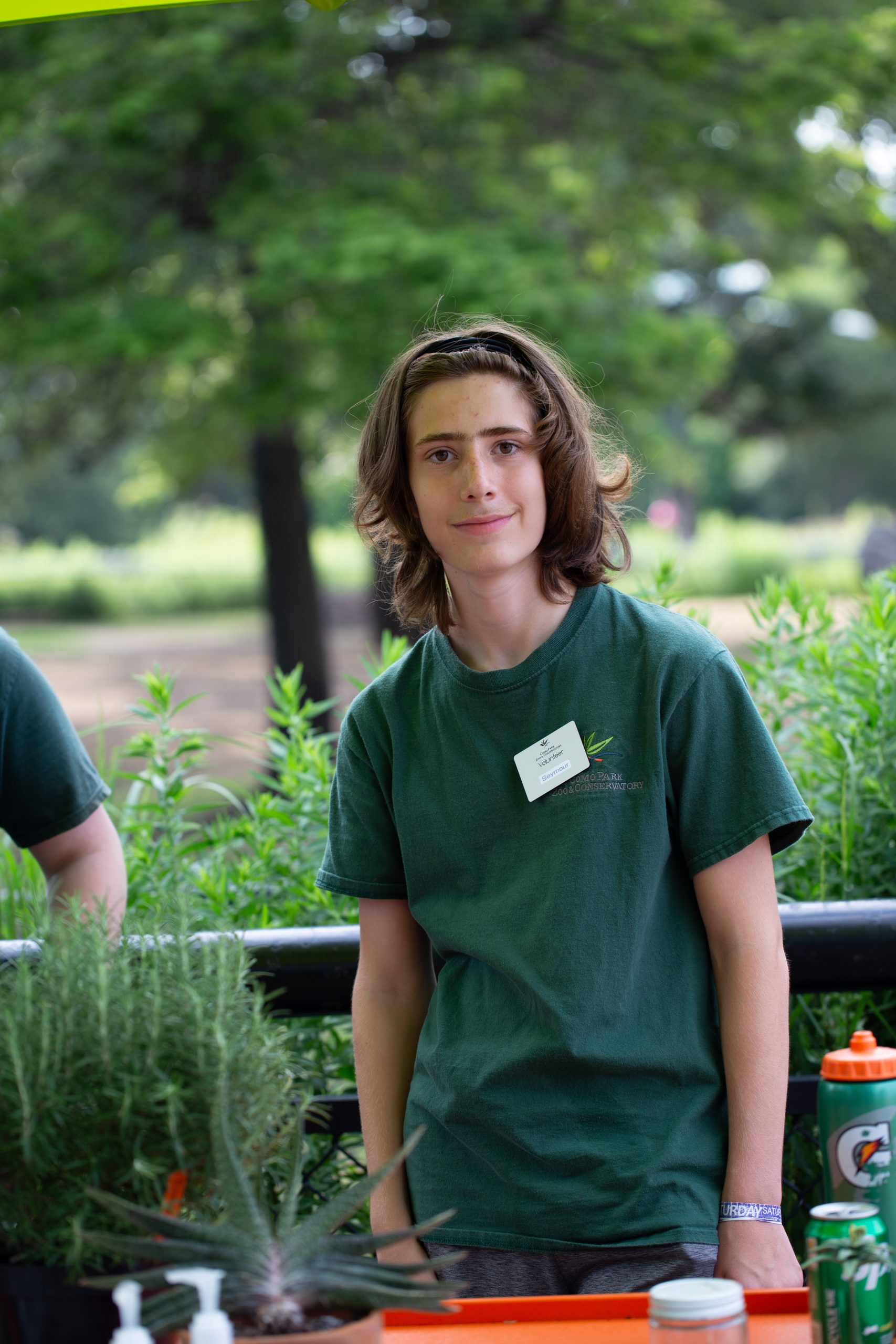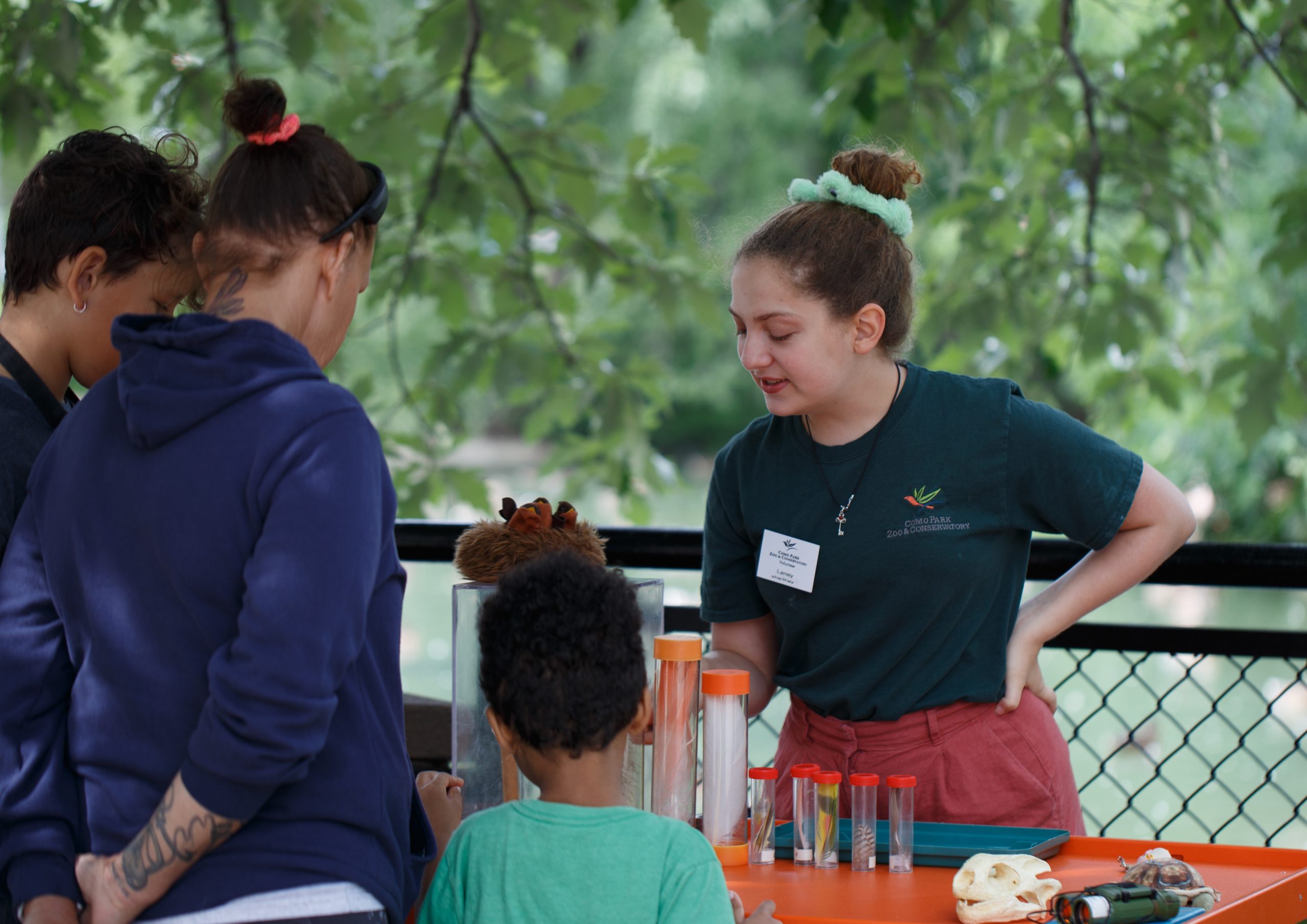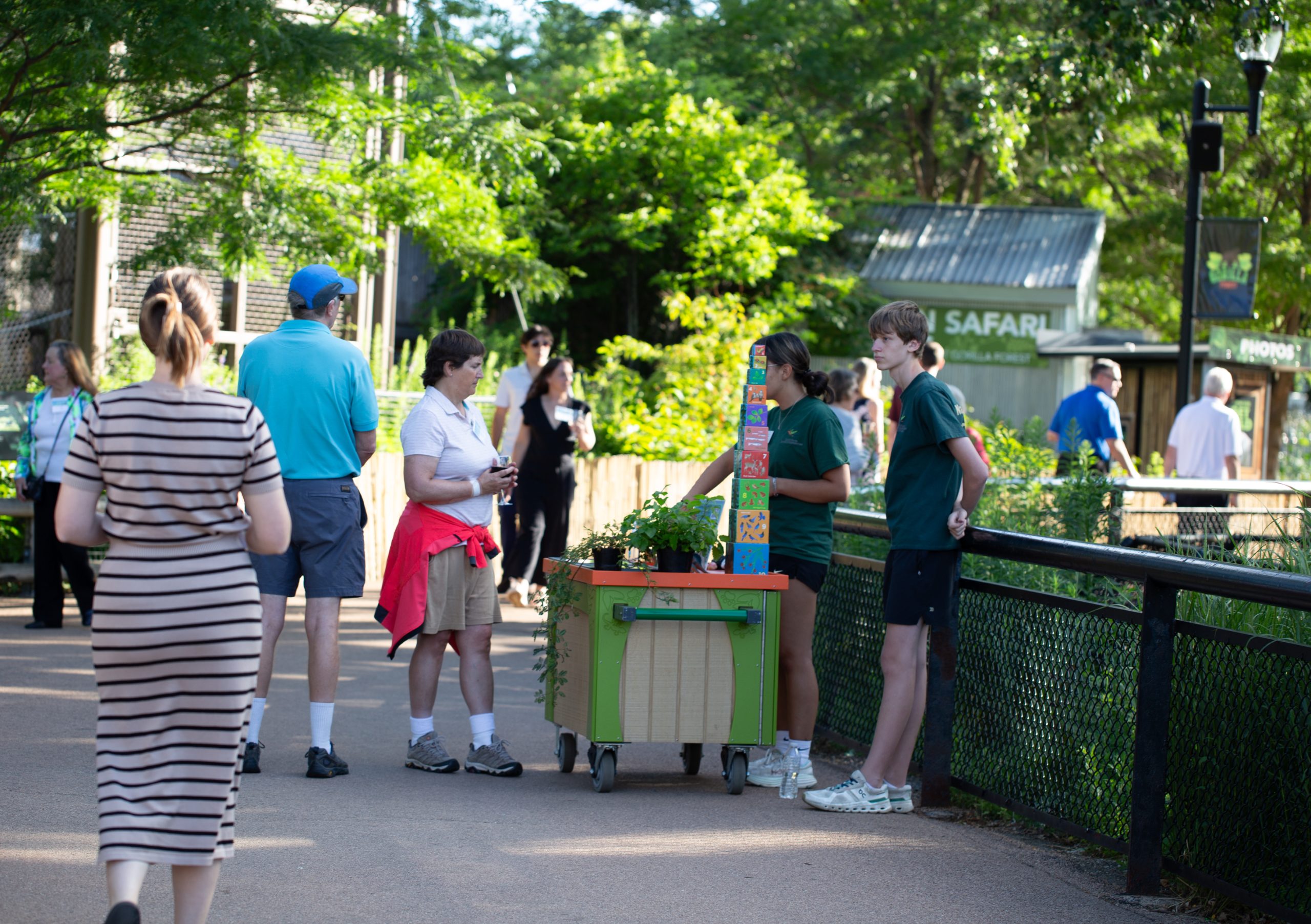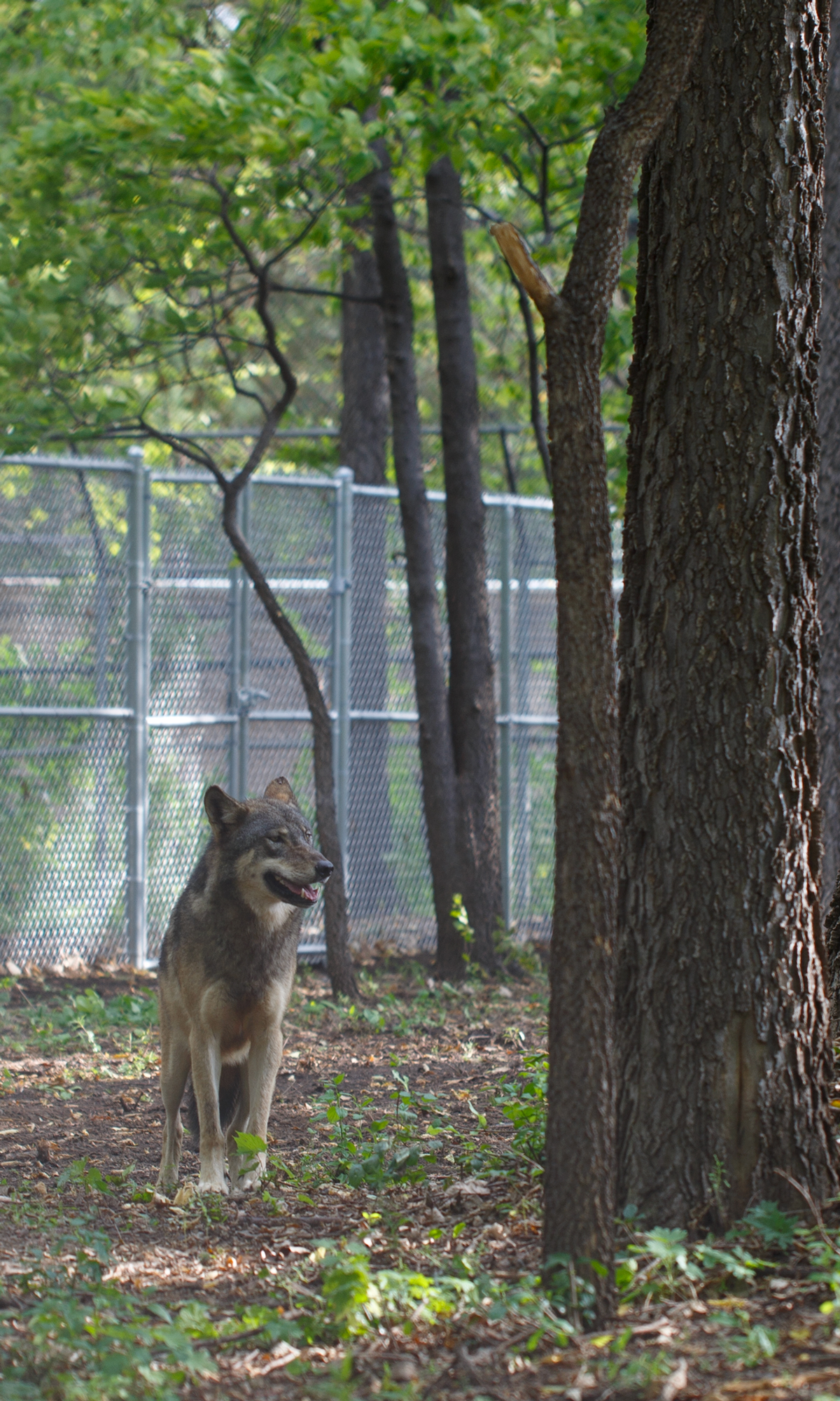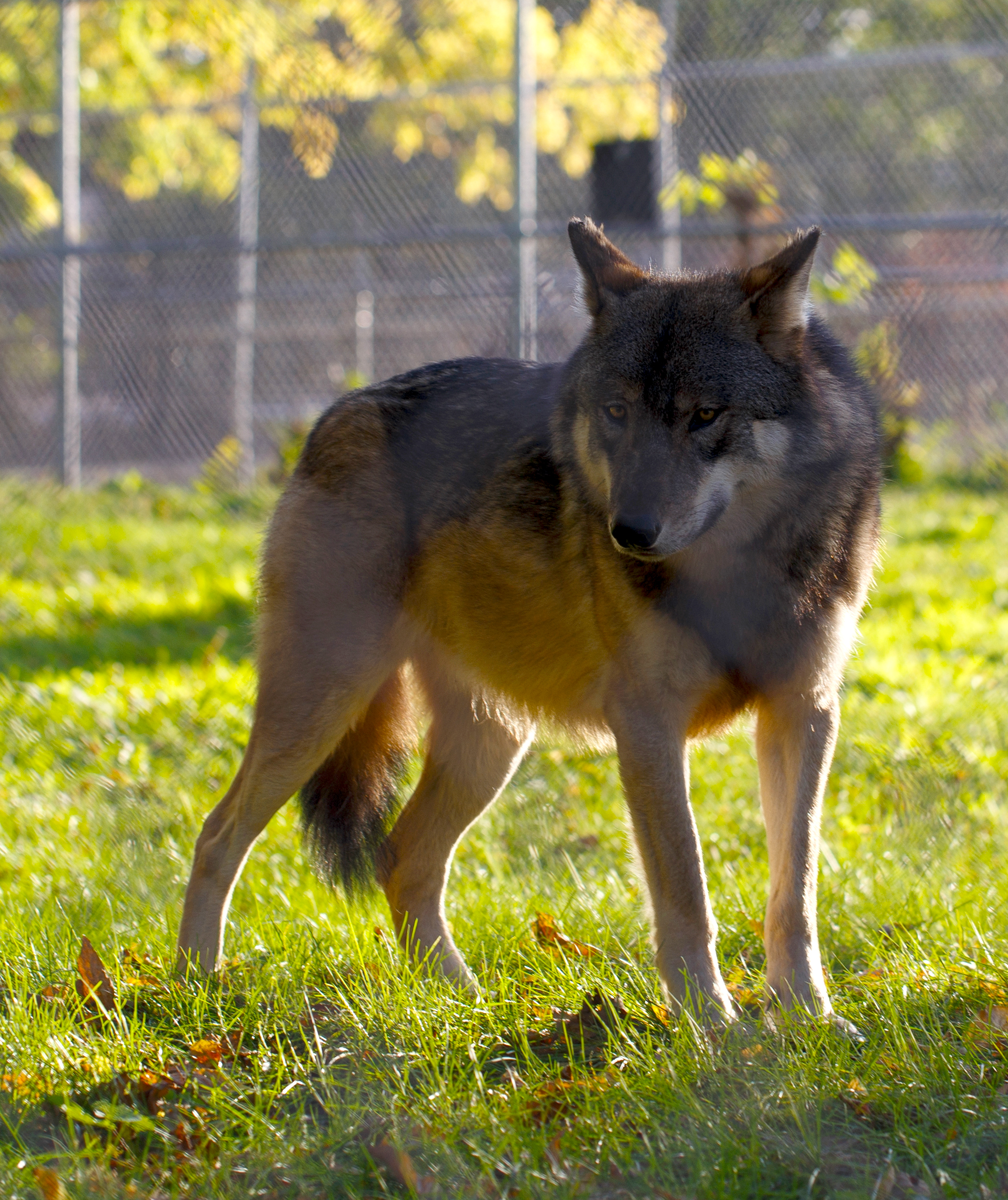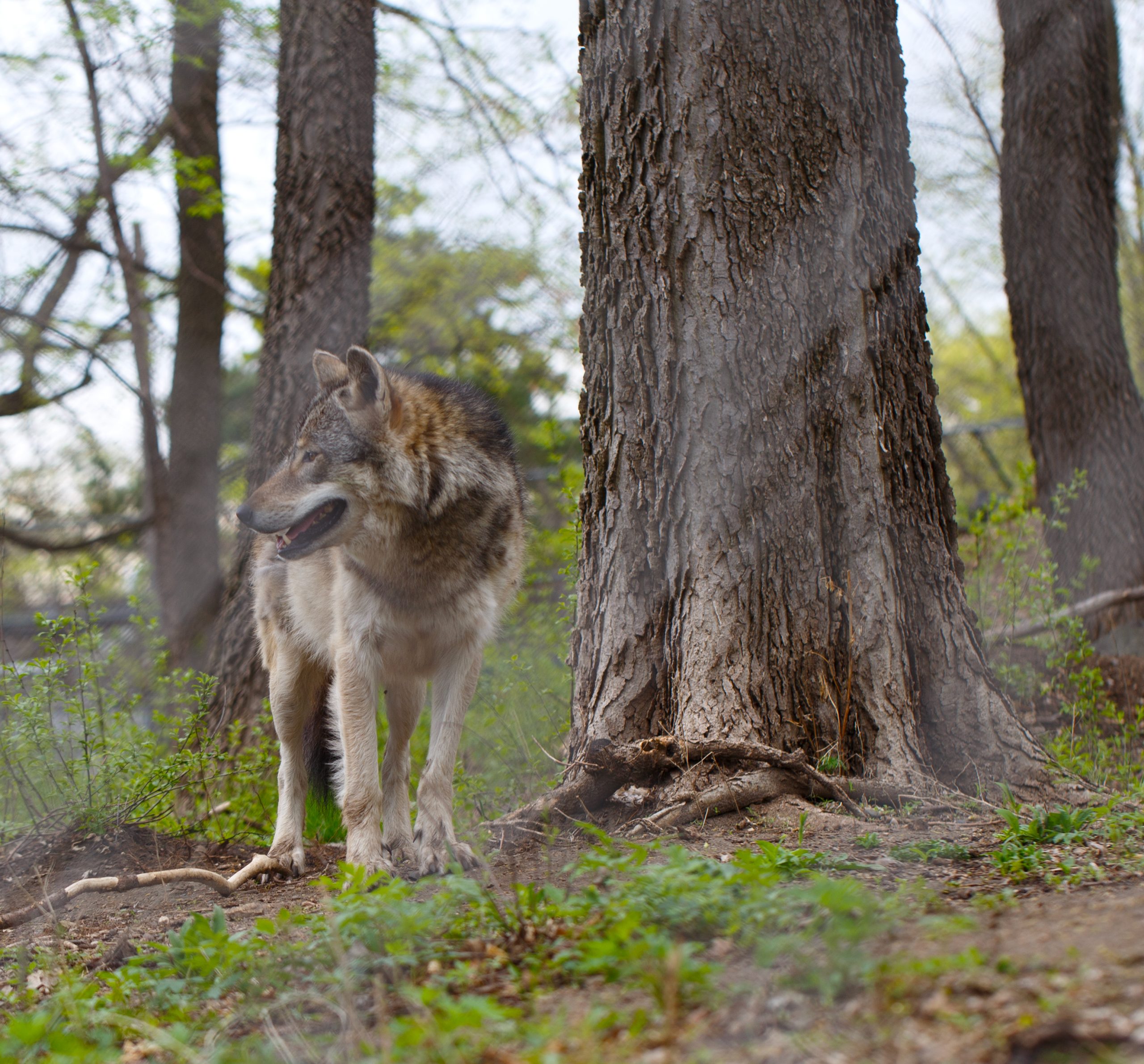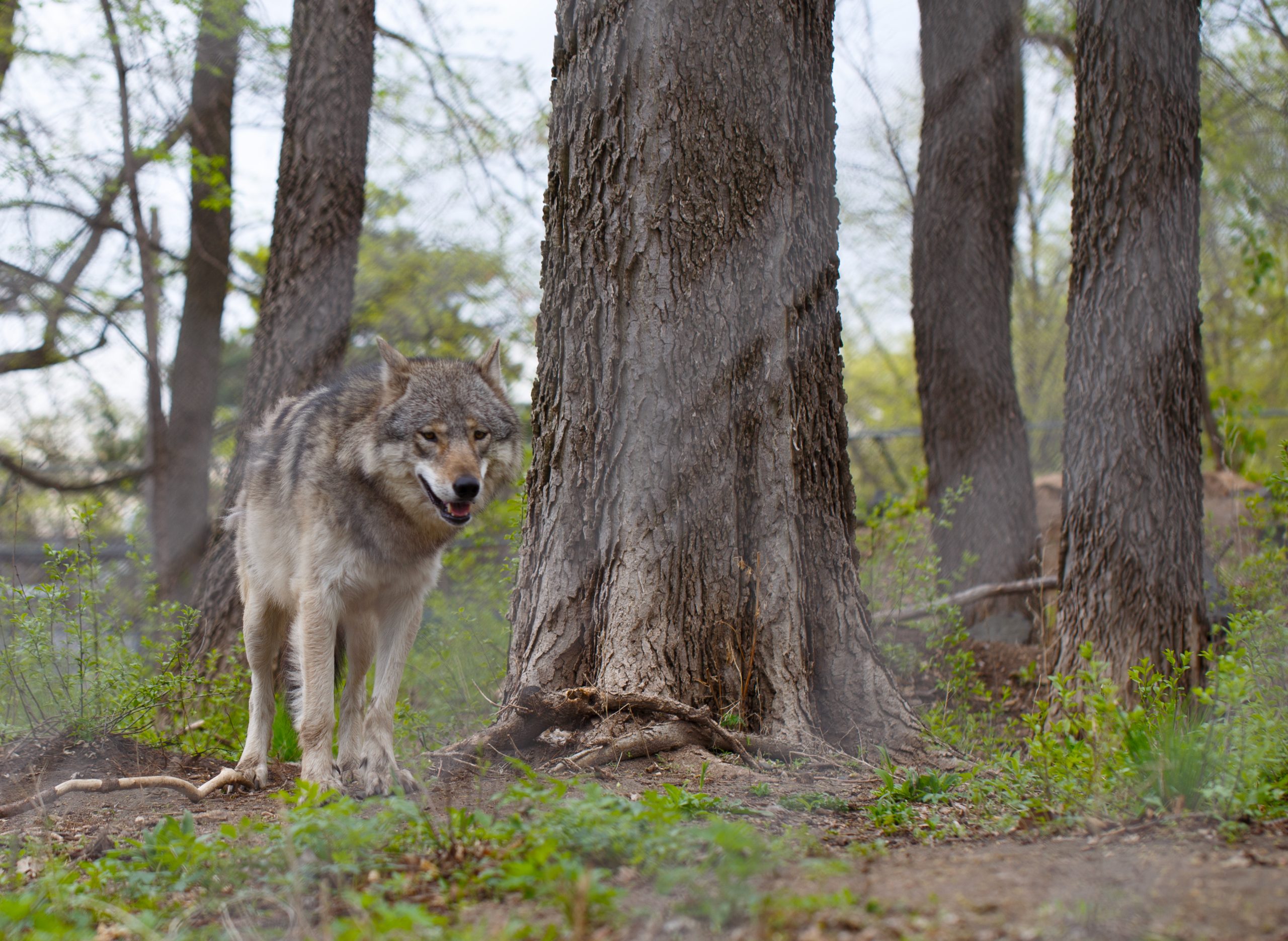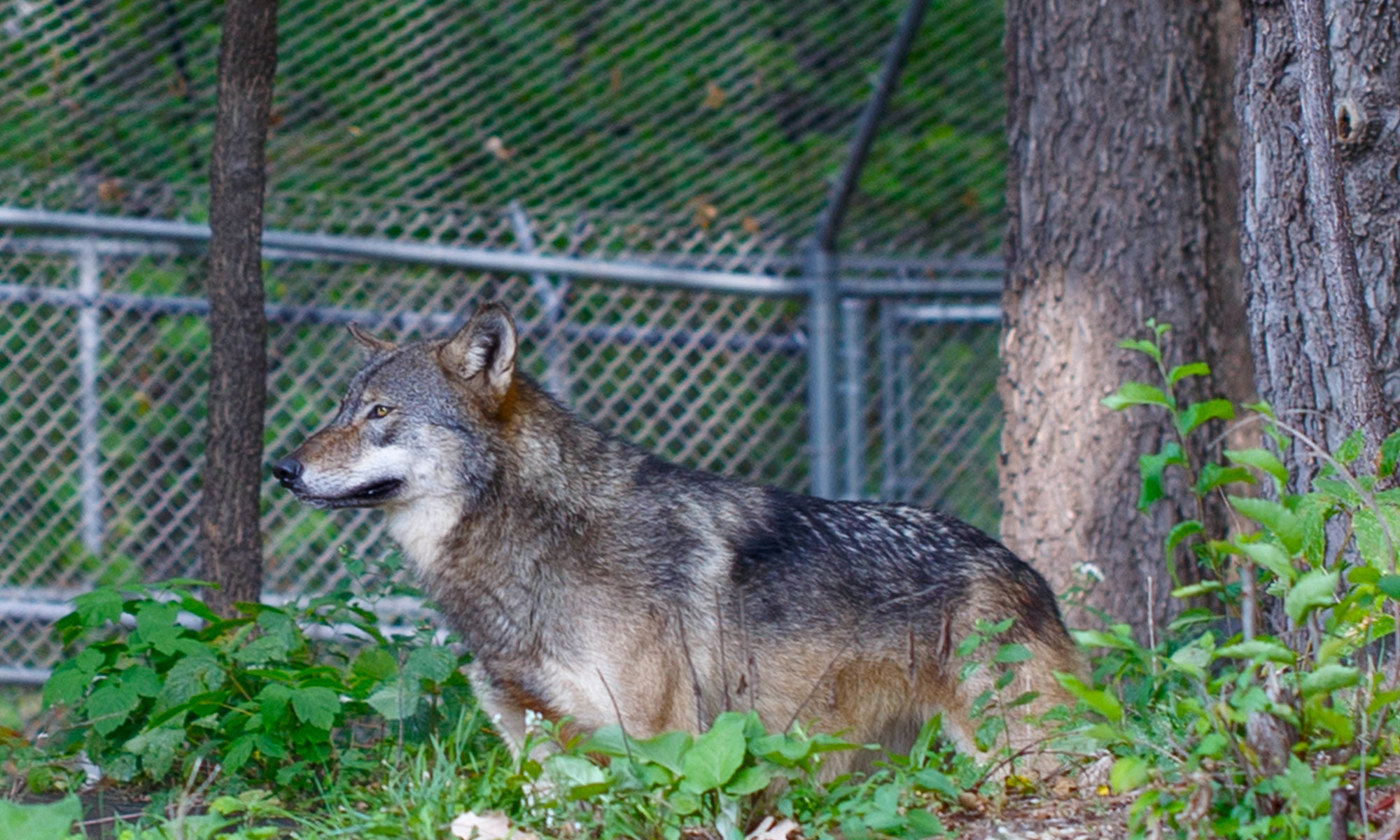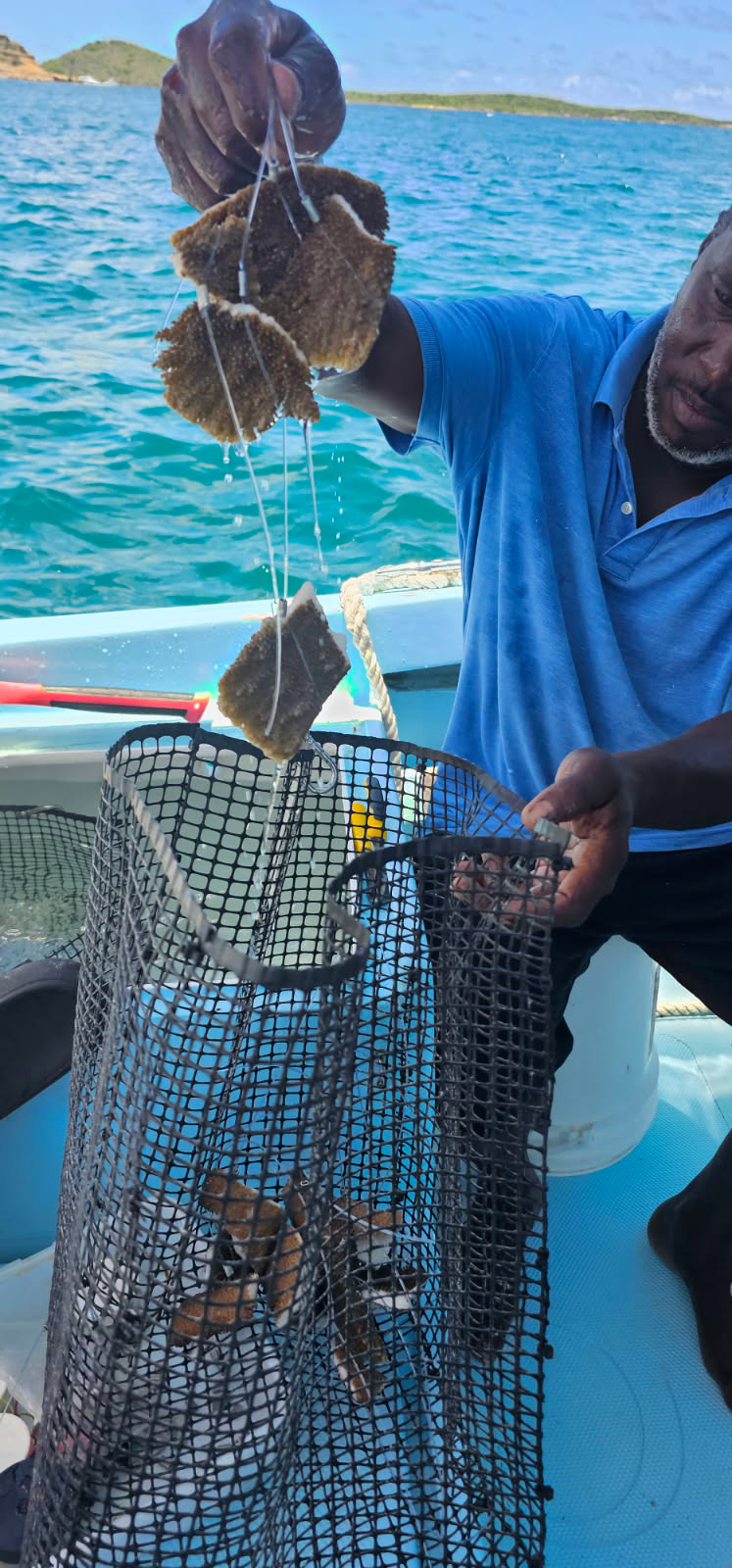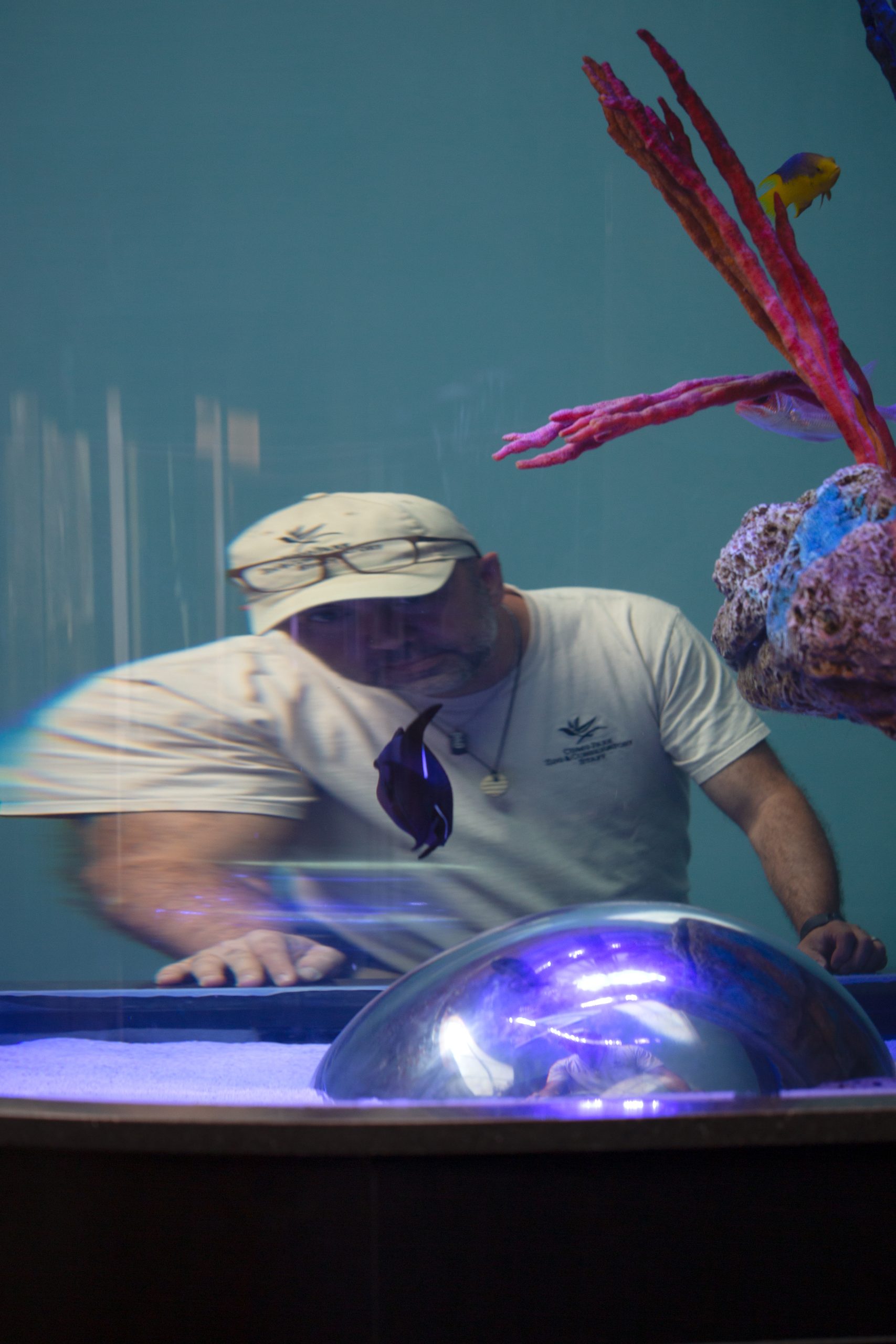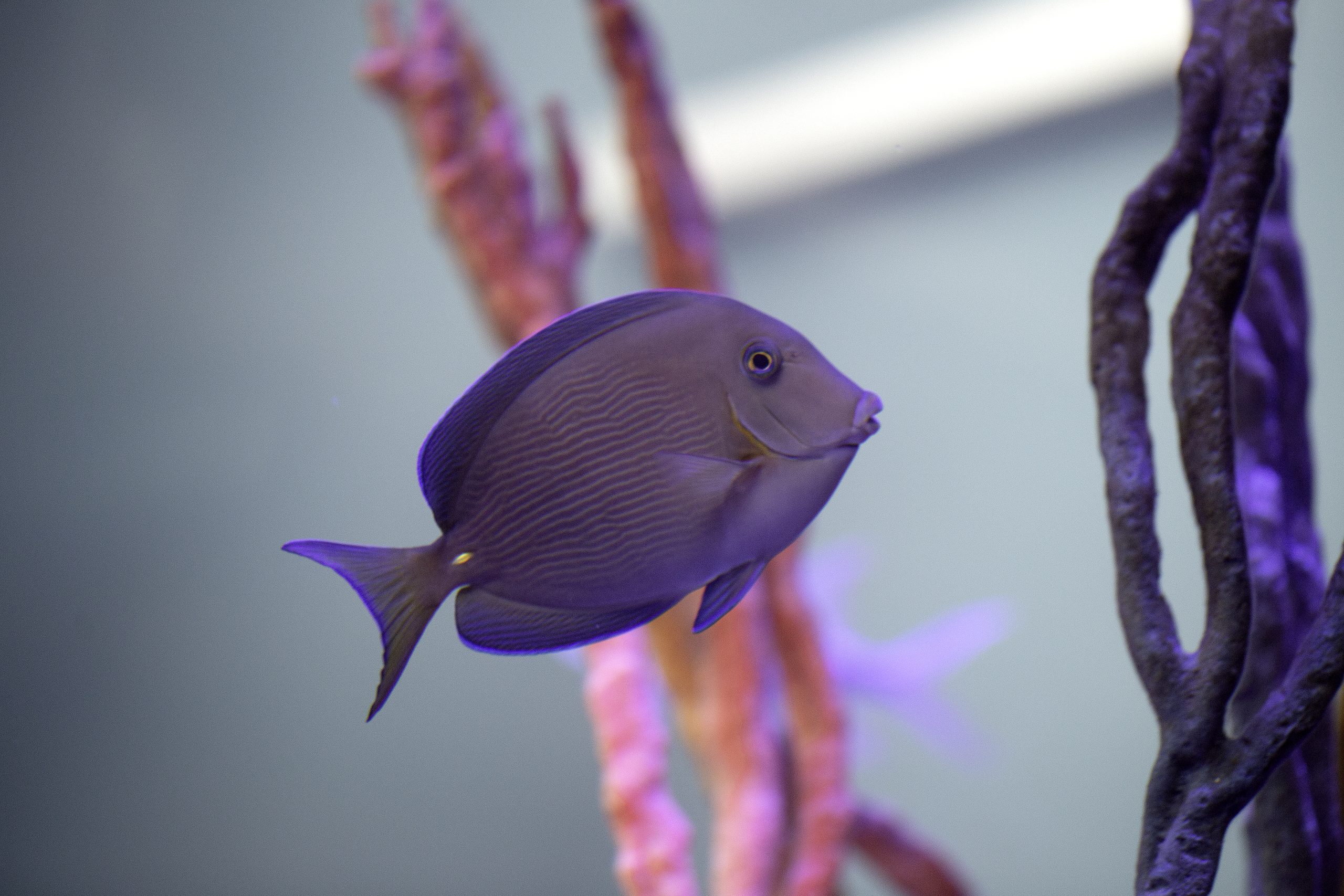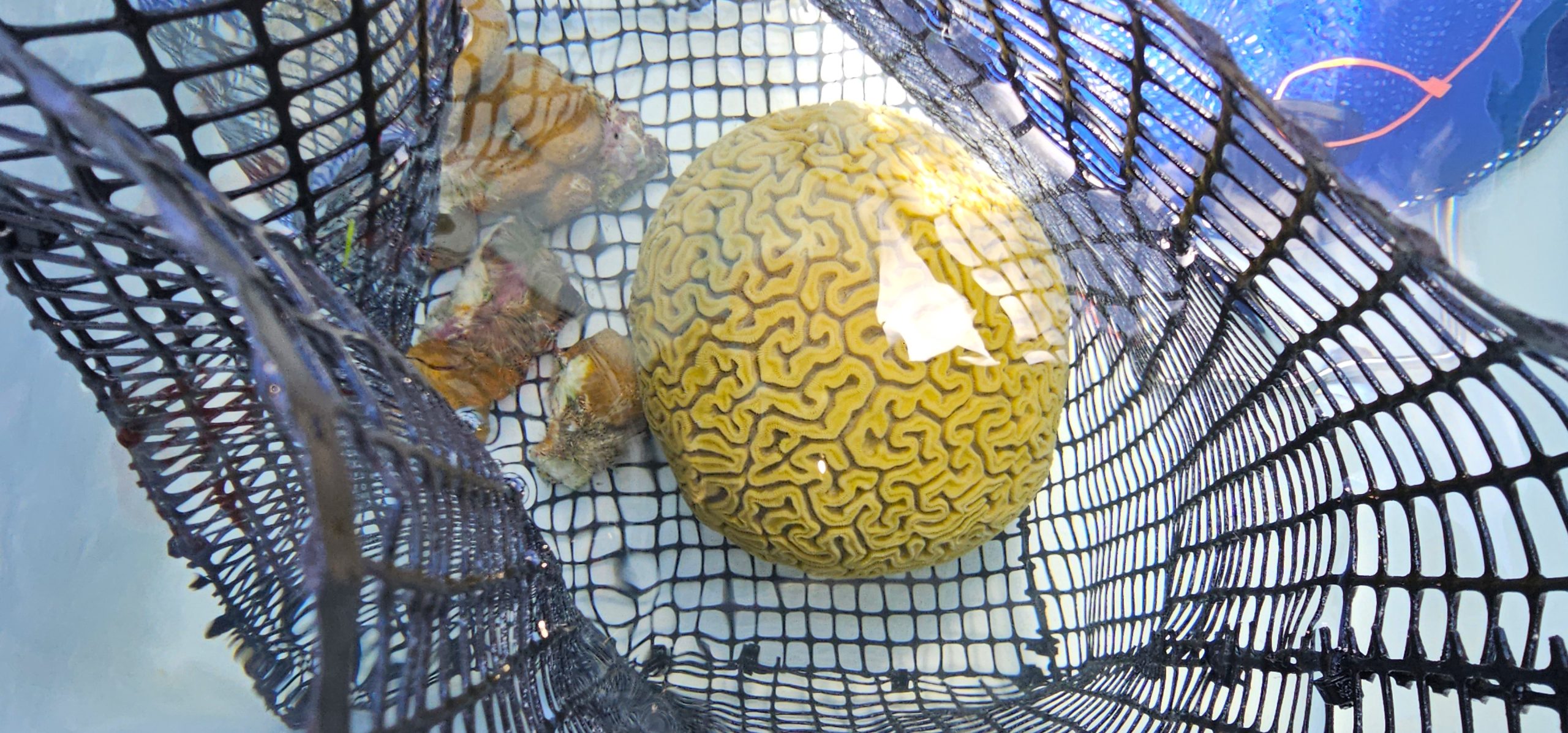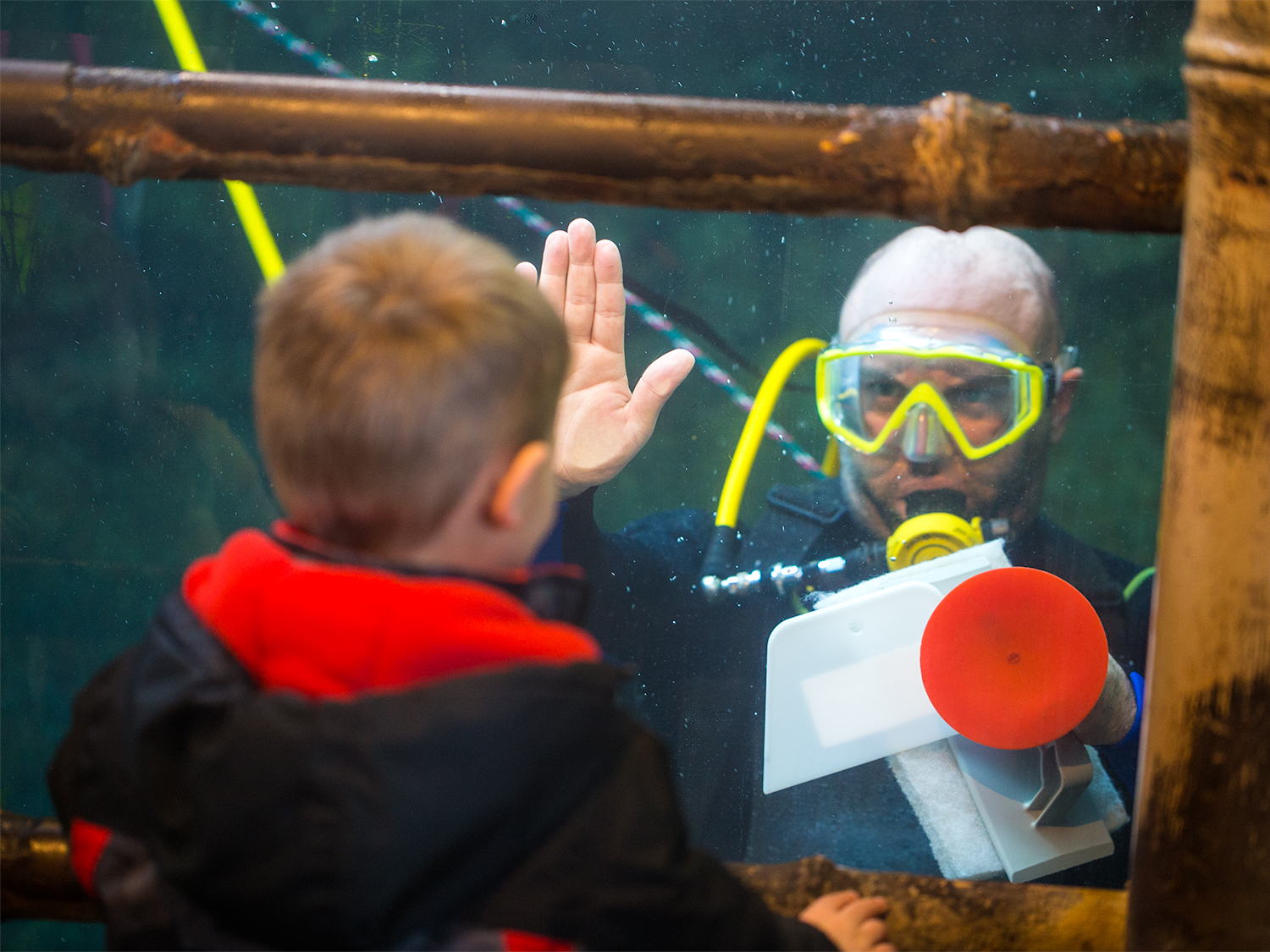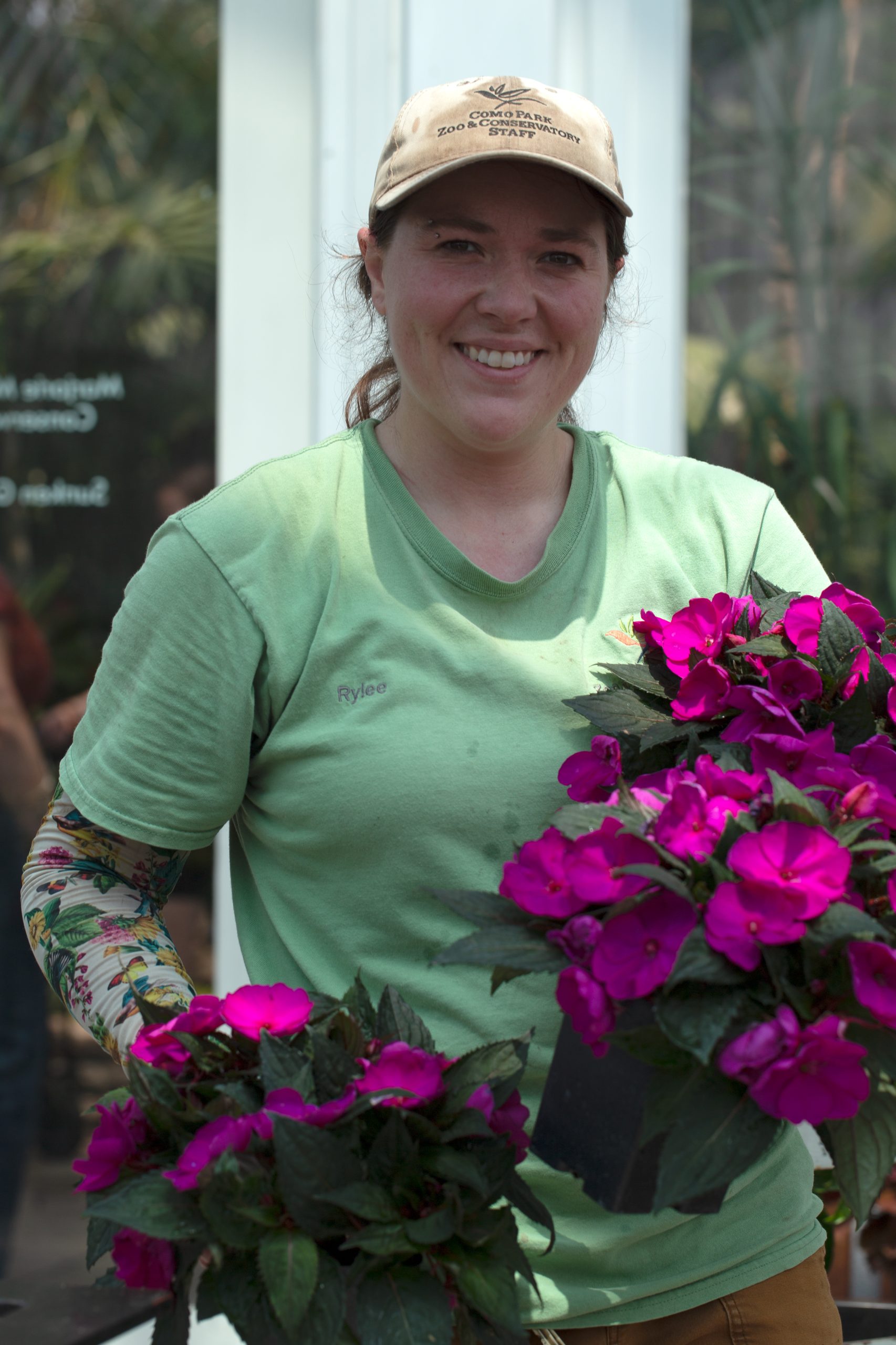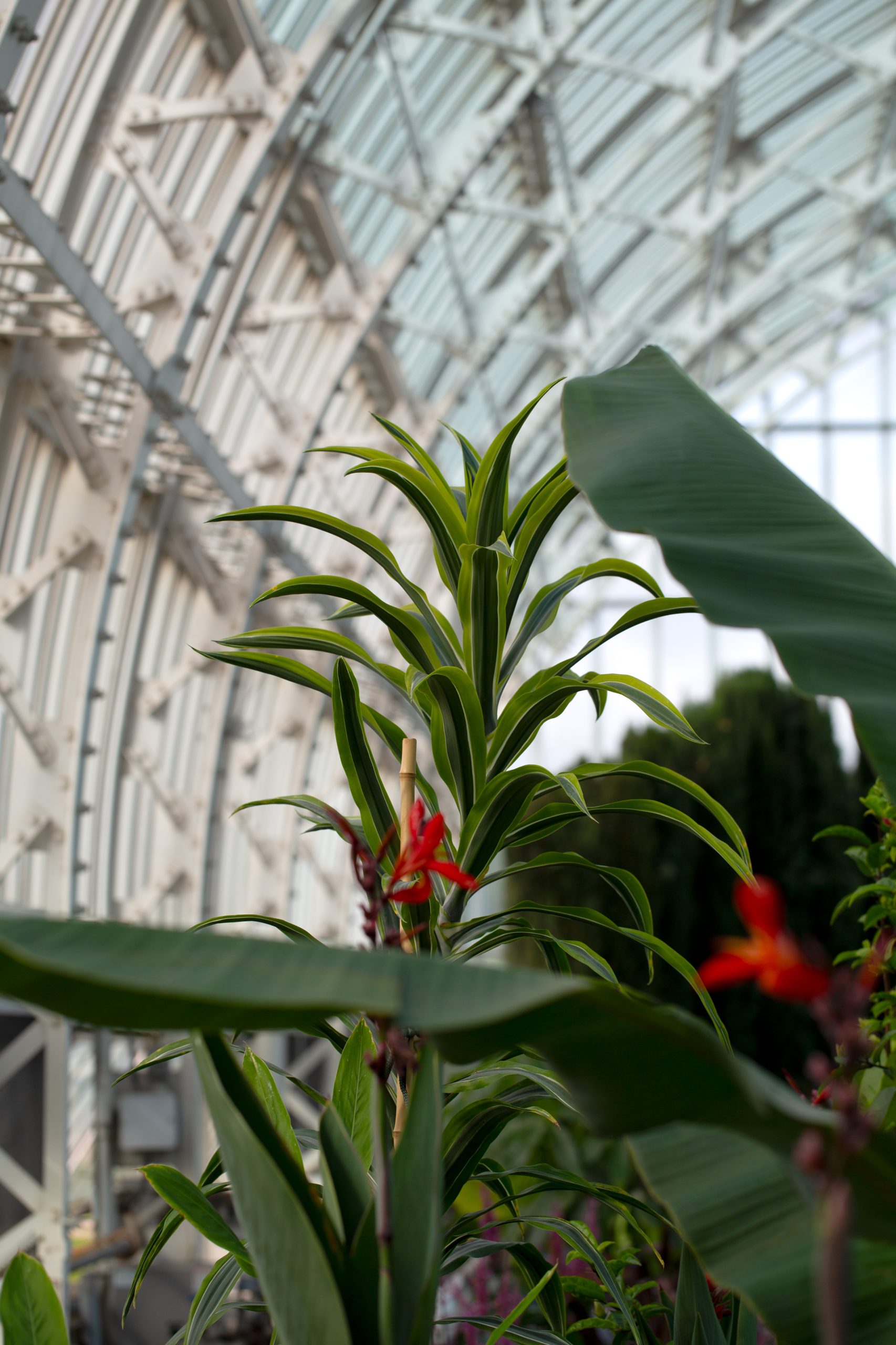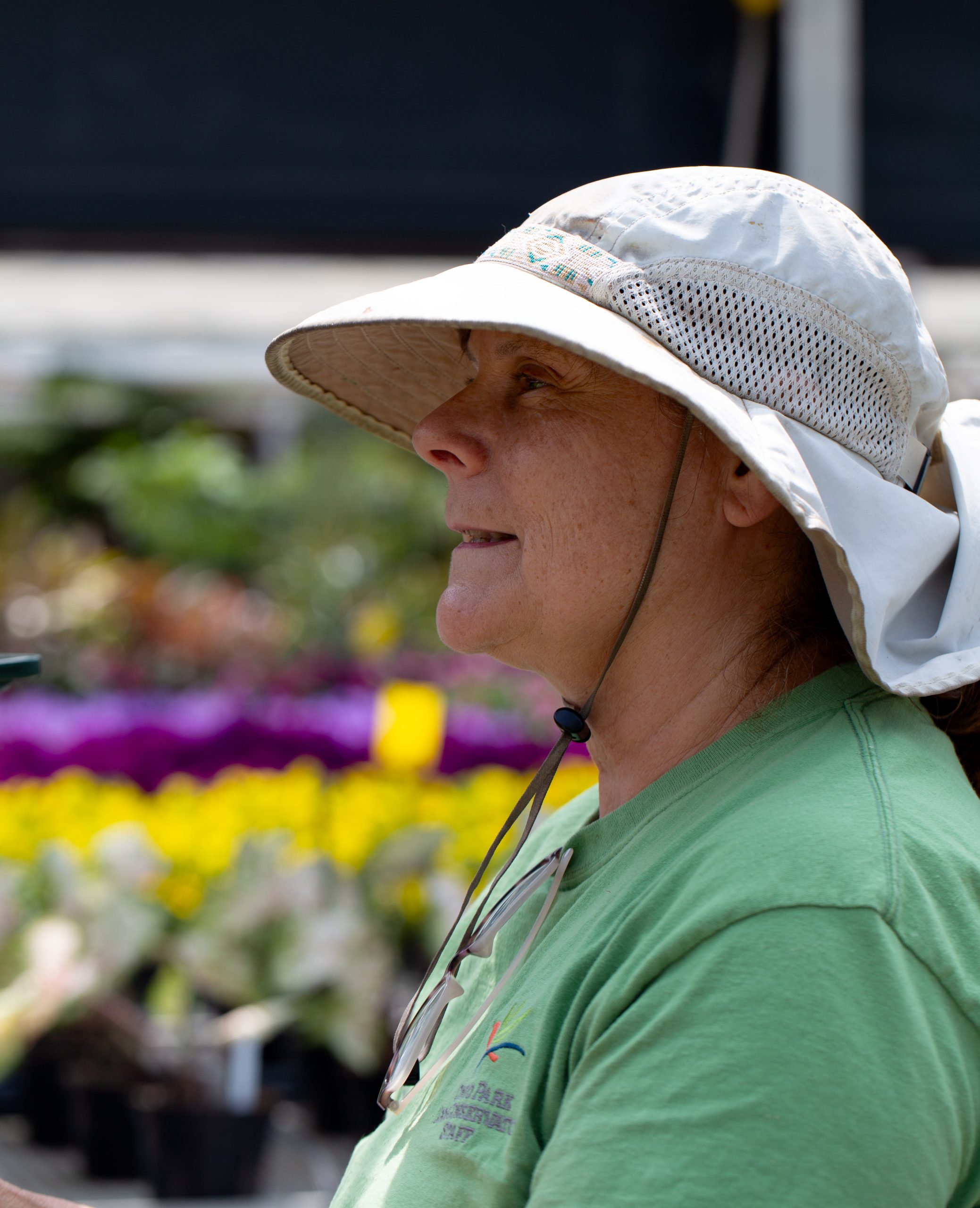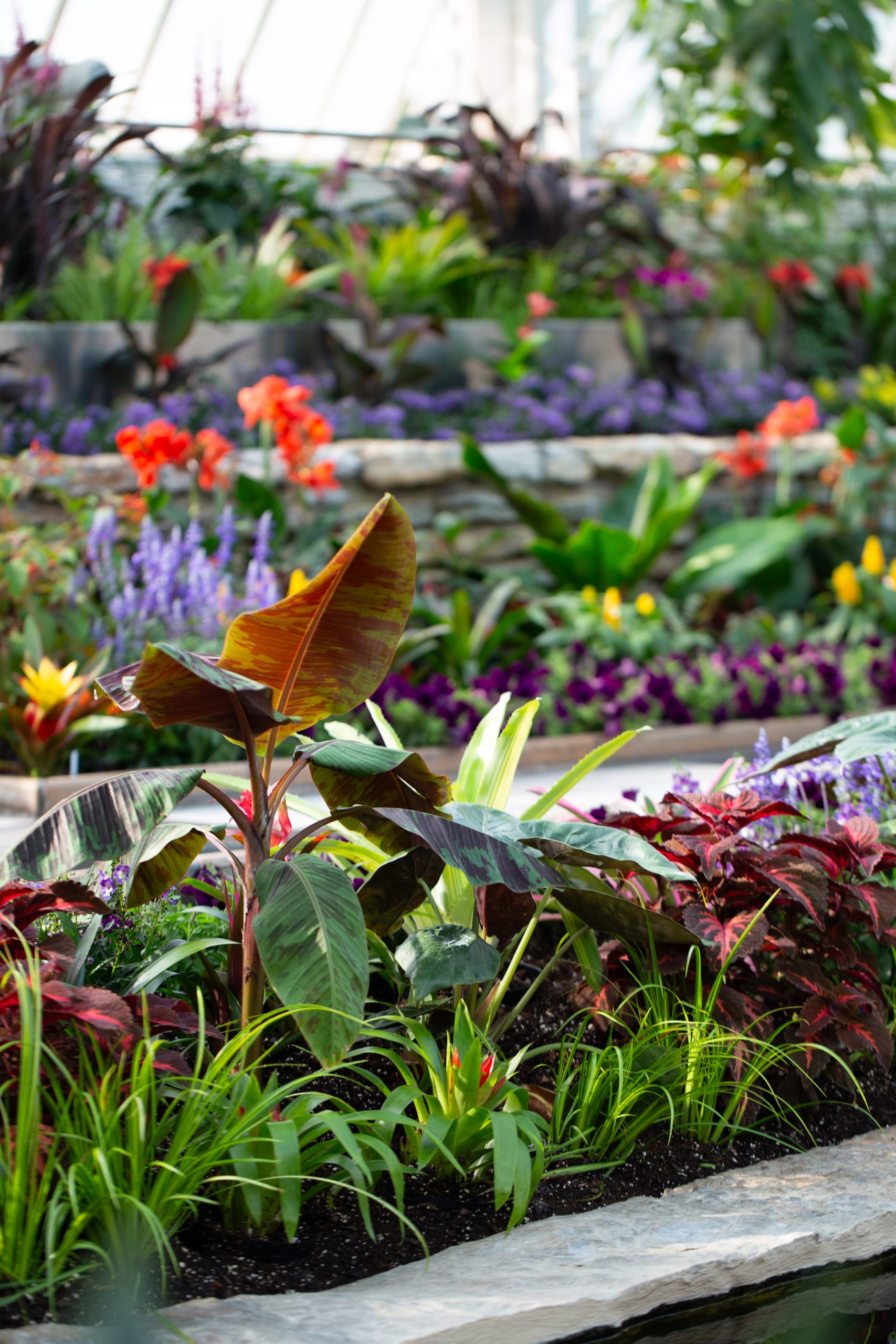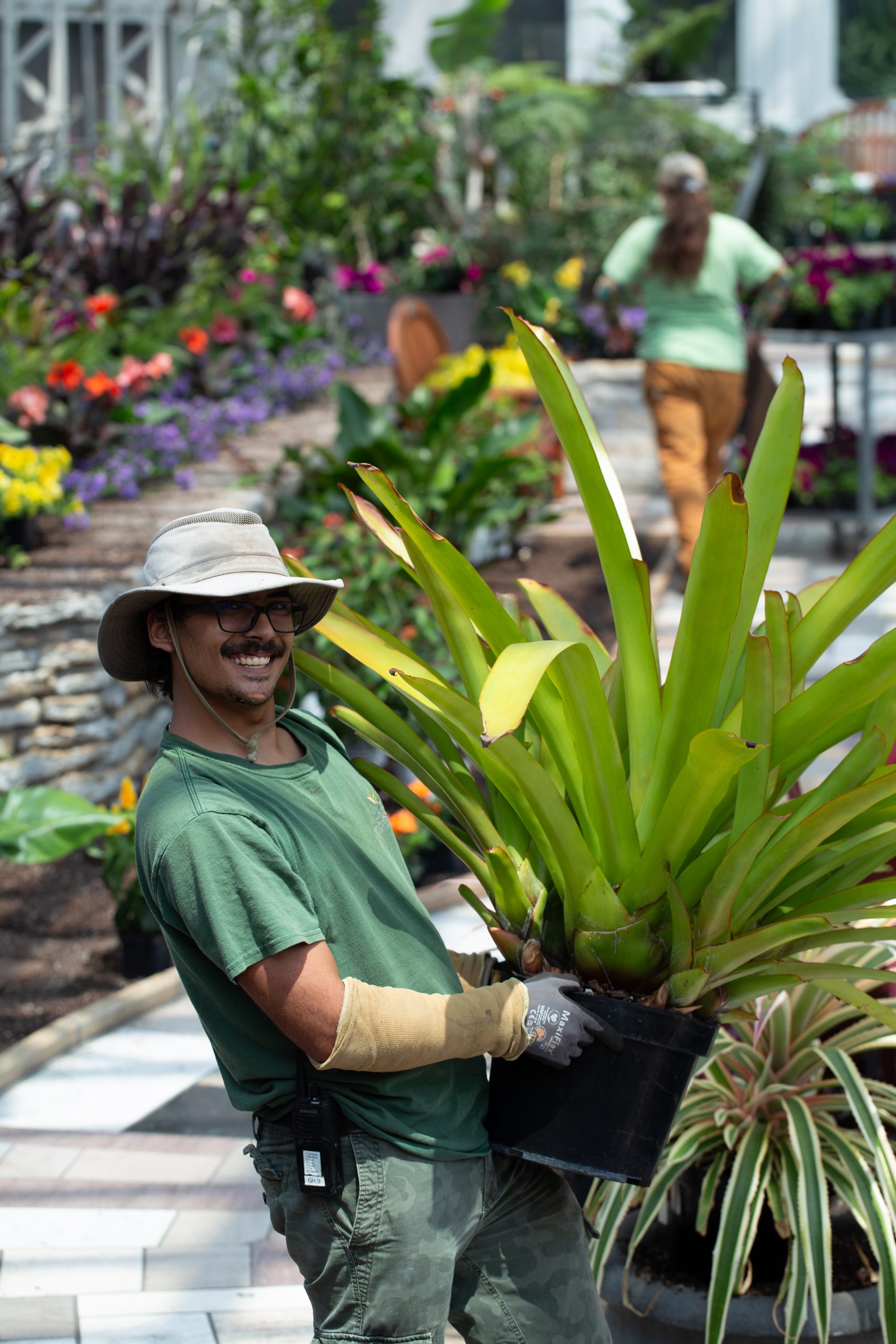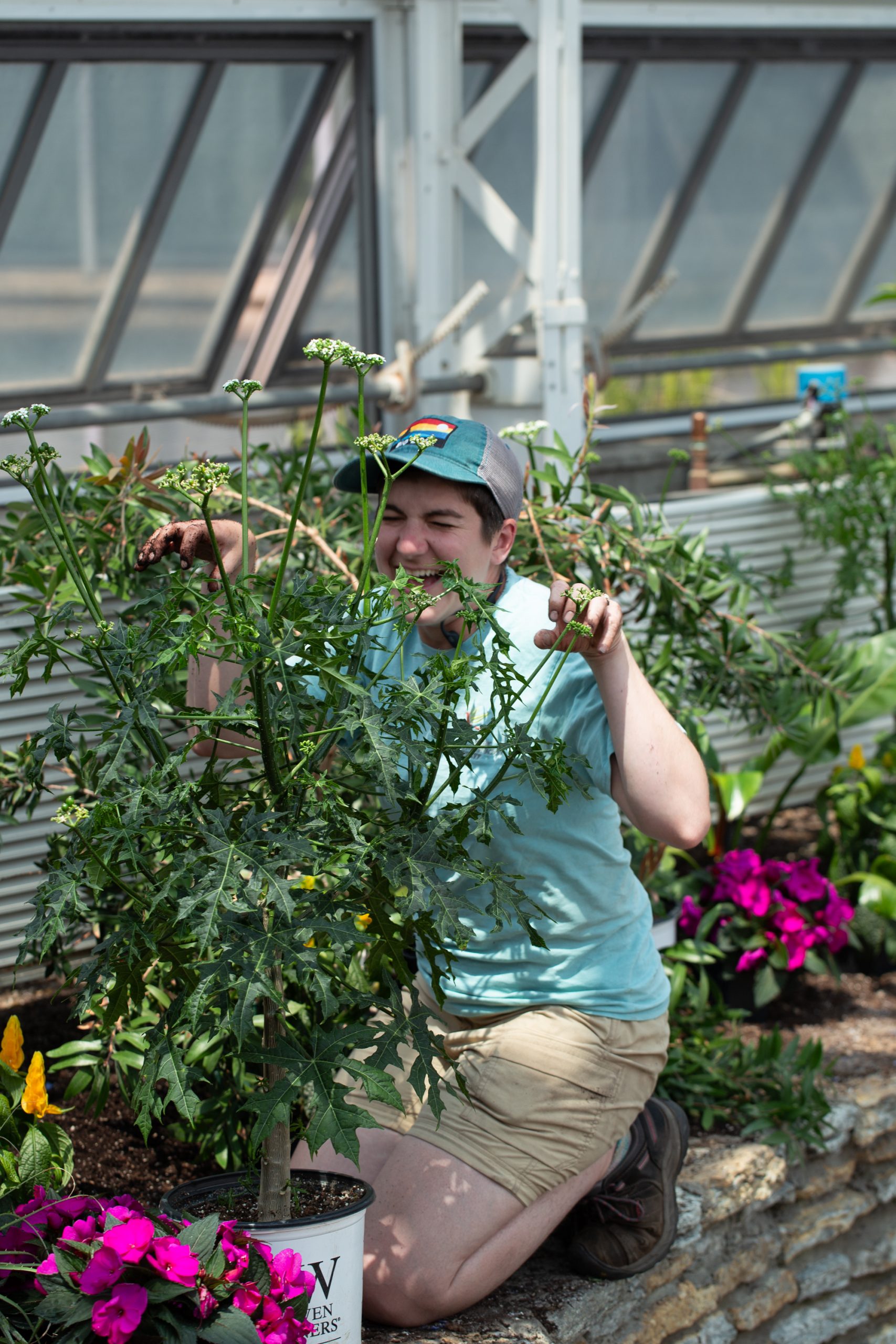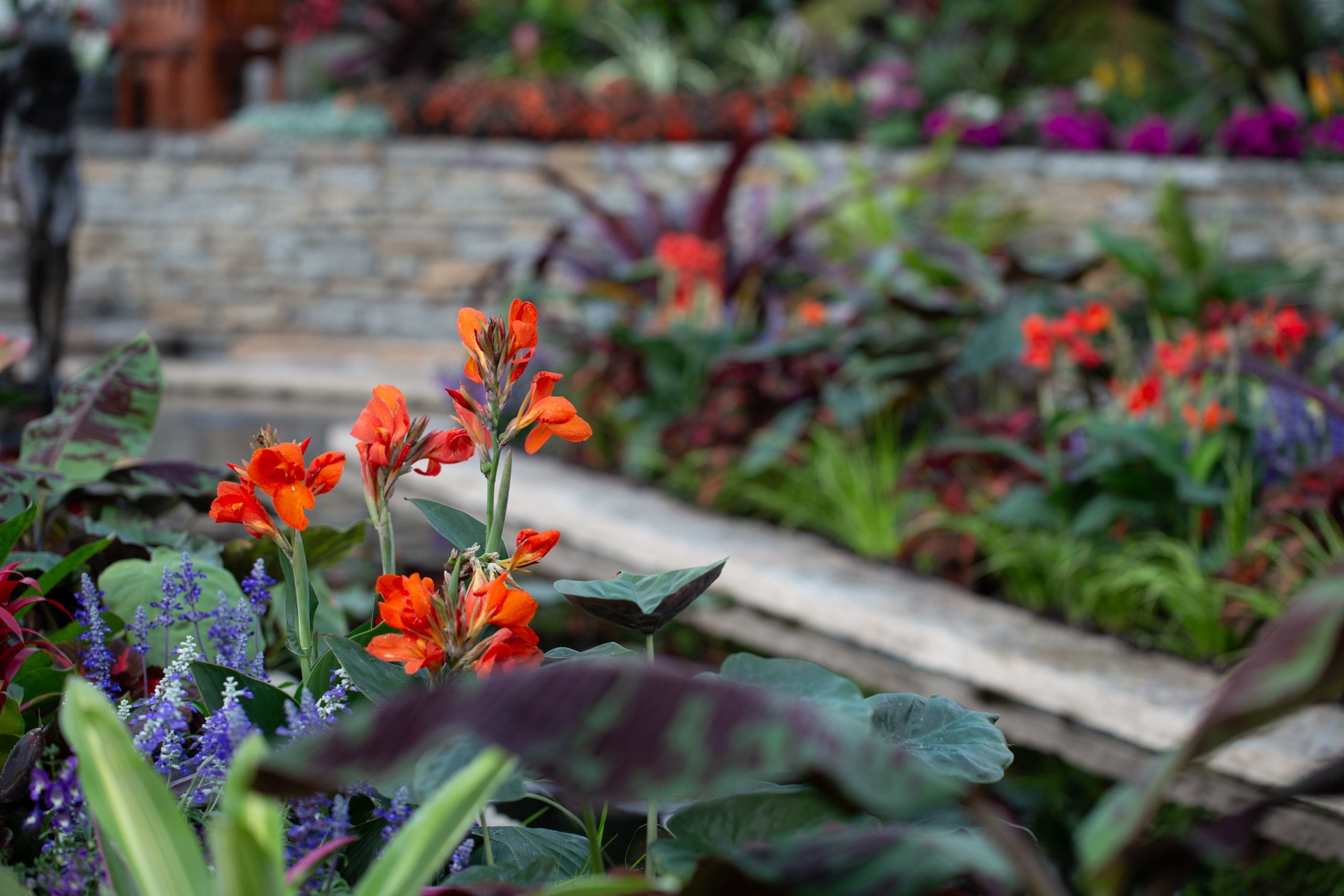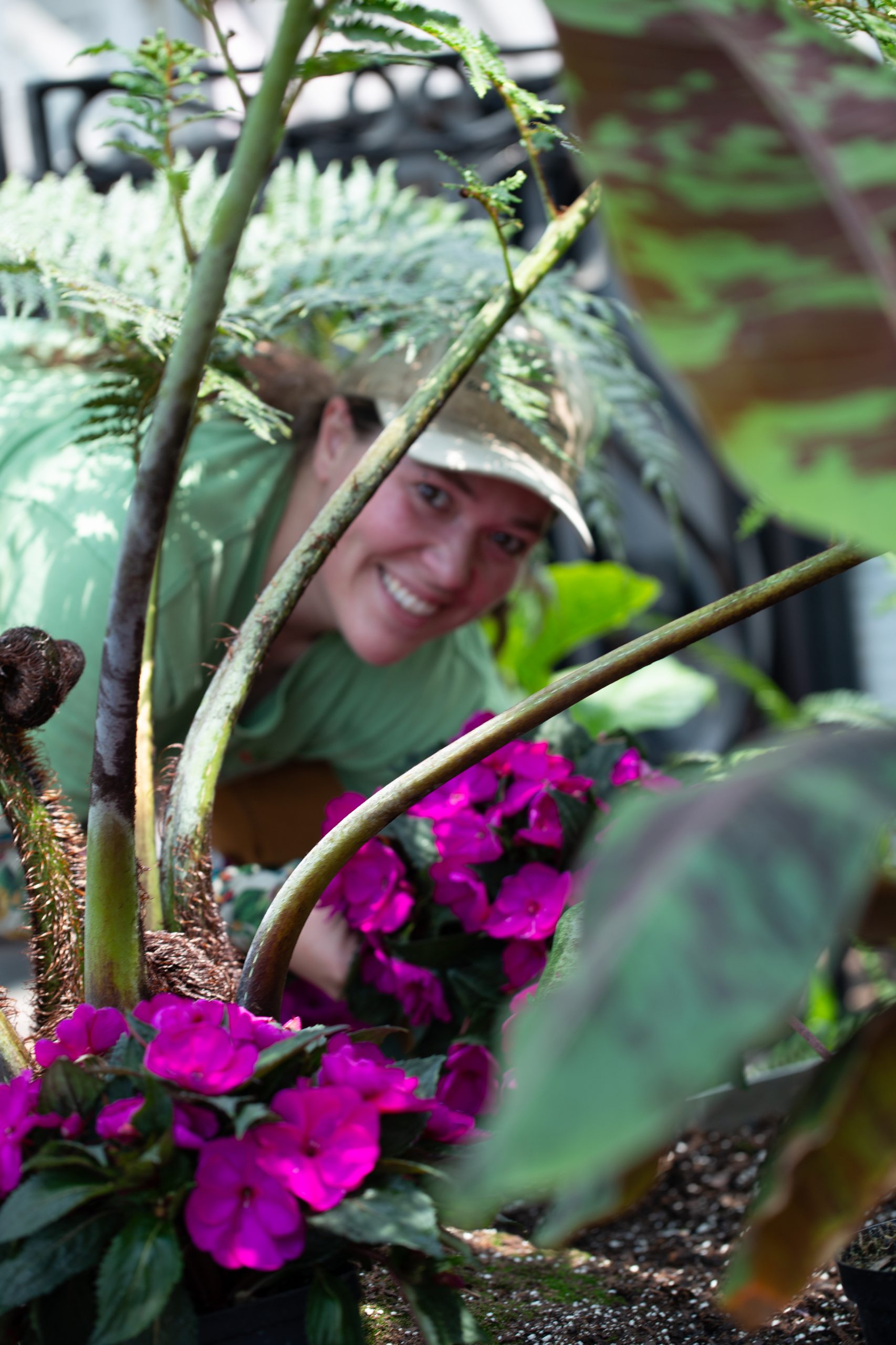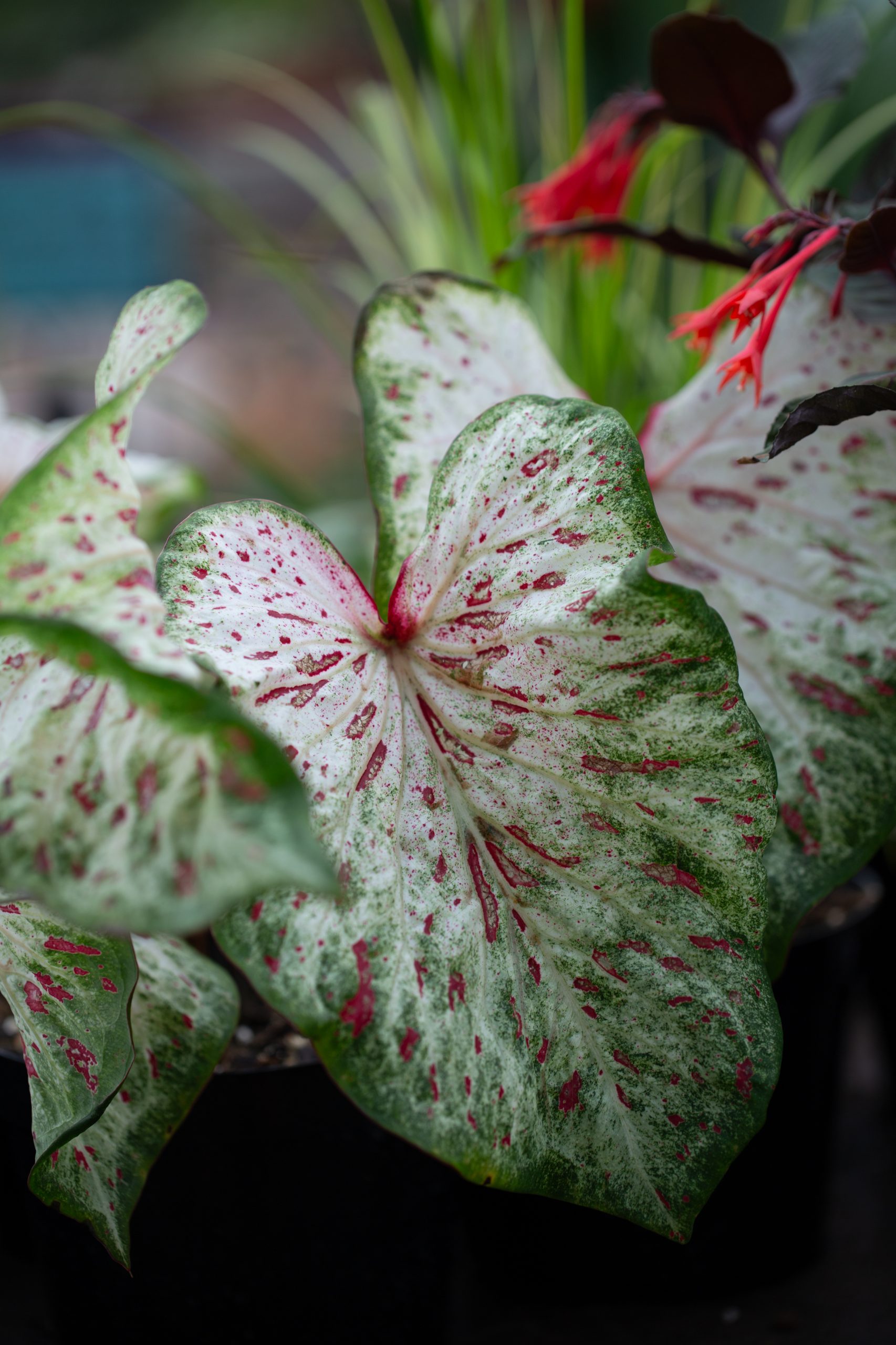Astra the polar bear’s recent arrival at Como Zoo is part of an international effort to increase breeding success for this vulnerable species
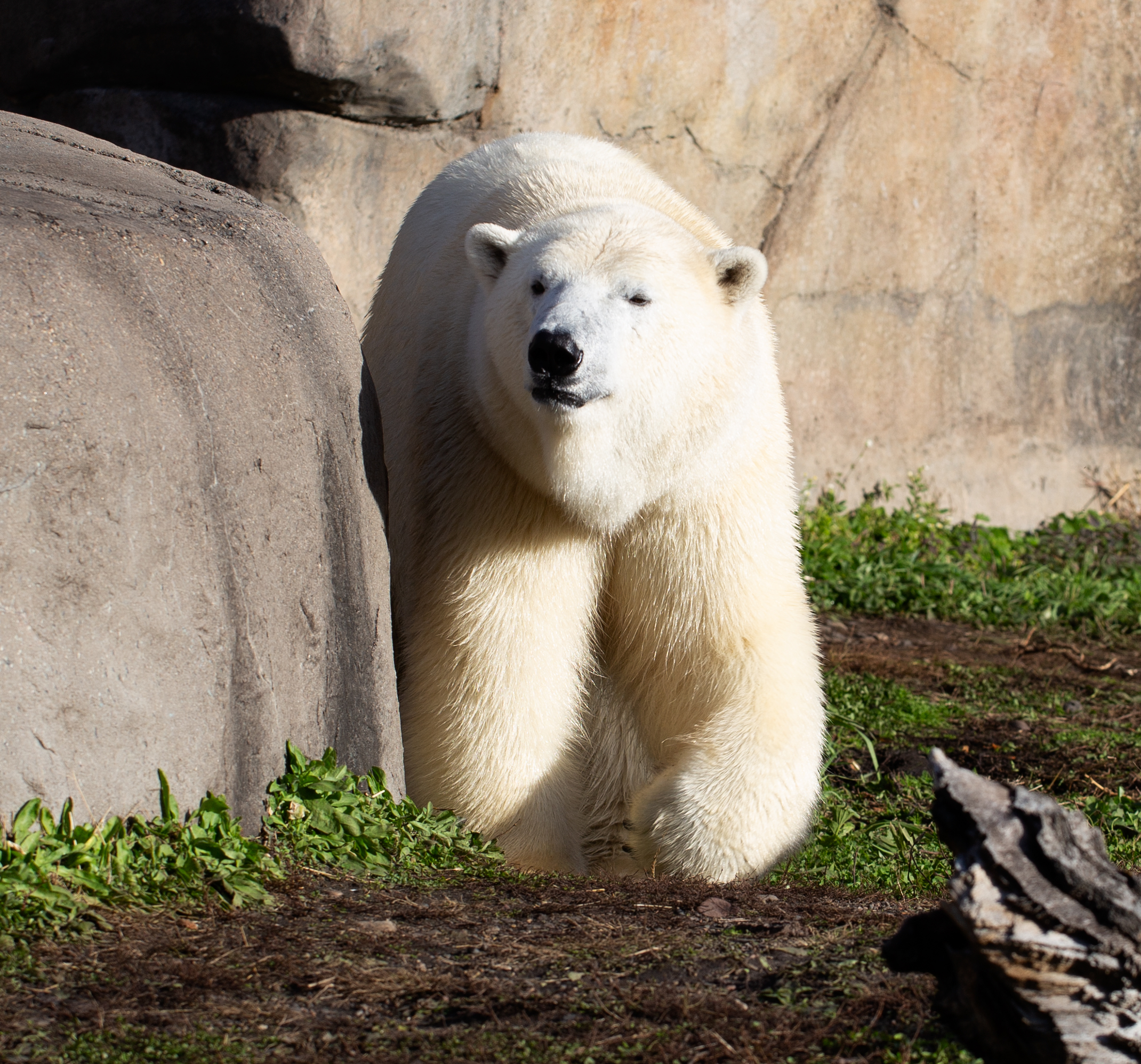
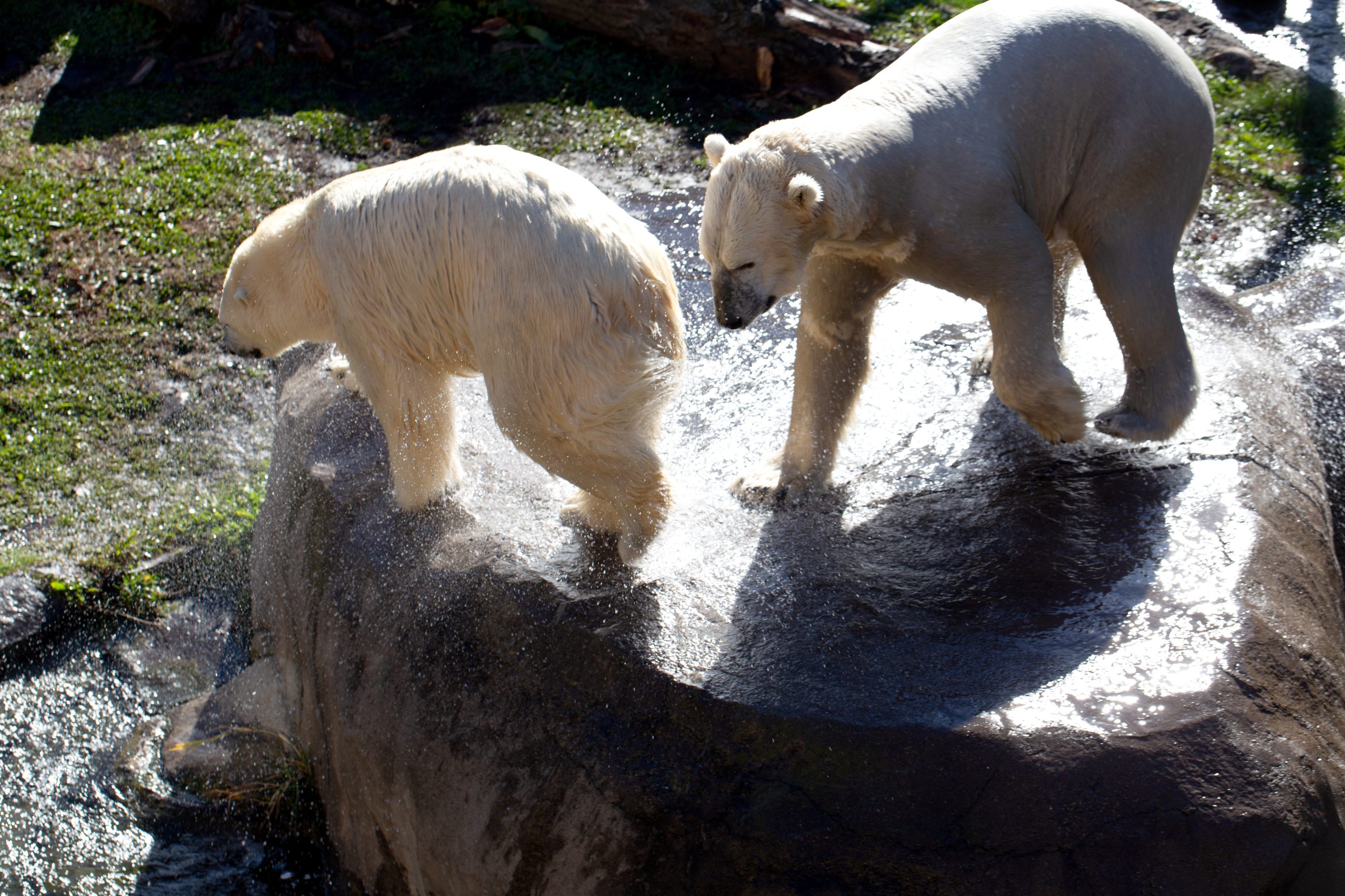
When new animals arrive at Como Zoo, they typically meet their assigned roommates through a process zookeepers call a “Howdy”—a chance to see, hear, and smell the resident animals on the other side of a steel mesh barrier. The initial step before a full-on introduction, these first impressions can give keepers important clues about how animals on both sides of the mesh might be feeling about the meeting.
But when Como Zoo’s two youngest polar bears, Astra and Kulu, had their first howdy this fall, their behavior made it clear they were eager to get even closer. “They seemed to be really wanting to play together,” says aquatics keeper Kelley Dinsmore, part of a behind-the-scenes team that’s been watching the bears’ every move since four-year-old Astra’s (She just turned five on November 17) arrival in October from Tacoma’s Port Defiance Zoo. “They’d be laying at the howdy doors near each other, and trying to pass toys through the mesh, so we had a very good feeling that we could just go ahead and introduce these two, since they seemed to want to be near each other.”
During their first encounter outdoors at Polar Bear Odyssey in early November, Kulu chased Astra around the habitat, eventually following her in a belly flop right into the deep pool. “There was never any aggression,” says keeper Becky Sievers. “They just played, and if he stopped chasing her, she would turn to see if he was still coming. They put on a really good show for everyone.”
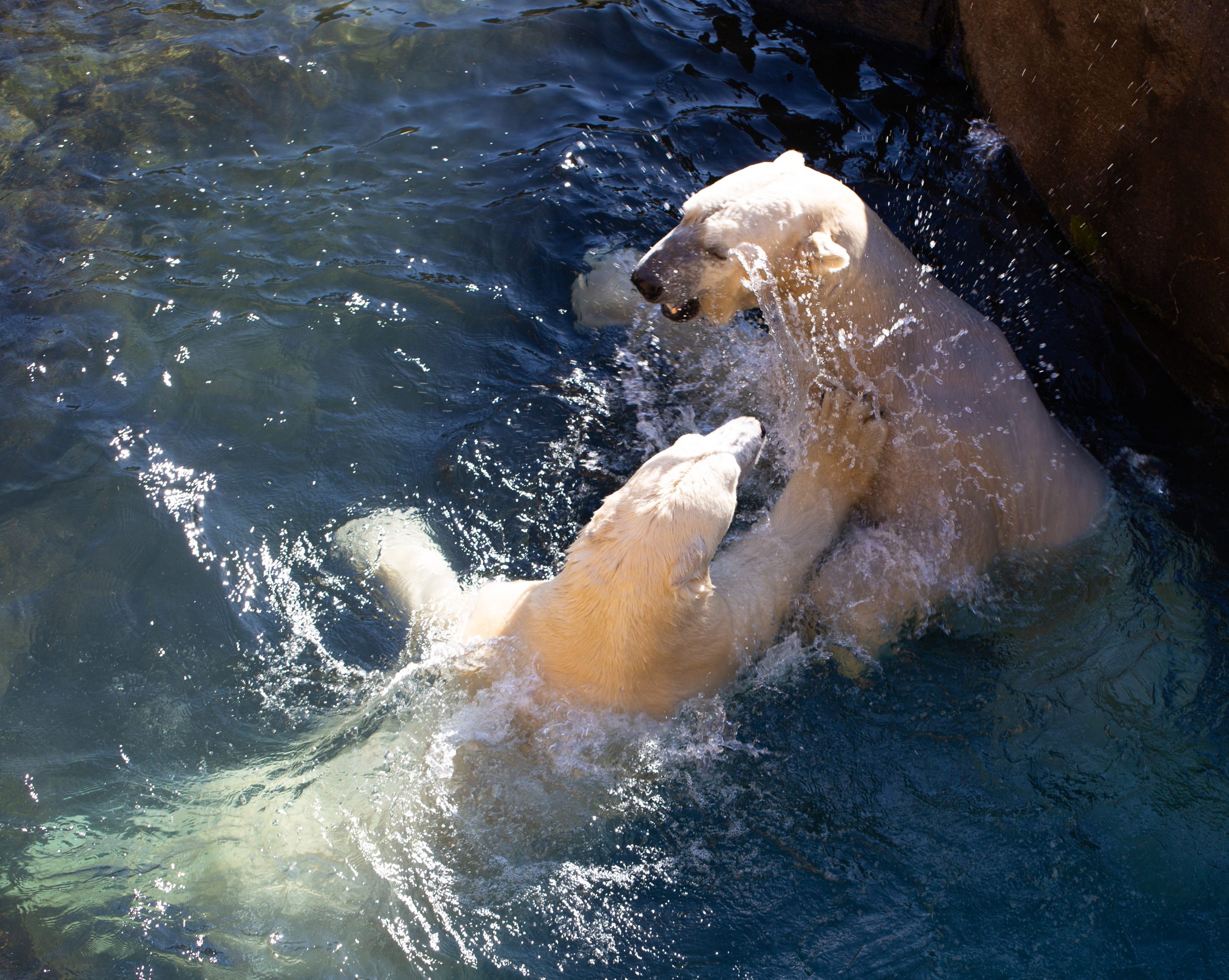
The splashing and frolicking play visitors can now see most days in Polar Bear Odyssey all bodes well for the future success of this new breeding pair, the first such union in Como Zoo’s history.
“Will love be in the air? We are really hoping so,” says senior keeper Allison Jungheim.
She speaks not only for the Como Zoo aquatics keepers who’ve been anticipating this match for months, but also for an international network of conservation experts exploring new ways to boost the population of polar bears. For the last decade, births among the 37 polar bears now in U.S. zoos have been lagging, with about 1.5 cubs born each season. It’s not enough to sustain the aging population, where 16 are now over the age of 20—including Como’s Neil, 29, and Nan, 30, two of the oldest polar bears in North America.


It’s a population that Jungheim knows well in her role as program leader and studbook keeper for North America’s polar bears, where she tracks the genetic health and history of 56 individuals living in partner zoos across Canada and the U.S. A project of the Bear Taxon Advisory Group through the Association of Zoos and Aquariums, the studbook is one of the ways that zoos work together to ensure that managed populations of polar bears are living their best lives. Another is the new Polar Bear Population Alliance (PBPA), a collaborative network launched last November, that’s been making new breeding recommendations across the country, including the new match between Astra and Kulu.
“The Polar Bear Population Alliance is working to make sure that polar bears are going to be here in the future by increasing the number of polar bear cubs born annually to achieve a sustainable population,” says Jungheim, who is both a founding member of the PBPA and serves on the PBPA’s Polar Bear Management Group (PBMG). One of the group’s first priorities is to move reproductive-age females like Astra into optimal breeding spaces like Polar Bear Odyssey. The next is to create additional pairings with other females, preferably with one male for every two females.
“The hope is that having two females will create competition, and get these bears going reproductively forward when breeding season comes around late winter,” she says. “Polar bears that have been housed together during the summer have proven to be more successful, while bears that have a history of contraception—a common practice when the polar bear population was larger—have been less successful.”
While data points like that are helping to determine where the zoo population’s reproductive bears should move in the months ahead, there’s no guarantee that every pairing will be successful. Not only do polar bears reproduce through delayed implantation, new cubs also have a 50 percent mortality rate during their first year. Even so, Como’s keepers are encouraged by the positive and playful behavior they’re observing from Astra and Kulu, though breeding behavior may take some time.
“It may take these two young, innocent bears a little bit of time to get it right, but that’s something we’ve seen with many other animals at Como,” Jungheim says. “Nature always finds a way.”

Your support for Como Friends helps support conservation projects at home and around the world through Conservation Champions, a competitive microgrant program for Como’s professional zookeepers, horticulturists, education specialists, and interpretive staff. Give to the Max for Como Park Zoo and Conservatory, and your gift will go twice as far! Thanks to generous matching gifts from Como Friends’ Board of Directors and longtime supporters Sandy and Dean, every gift you make to Minnesota’s most visited cultural destination will be doubled, dollar for dollar, up to $52,500. Thank you!
With expanding school partnerships, a refreshed curriculum, and a new strategic plan, Como’s education department is rising to meet the needs of our next generation

As teachers will tell you, making the transition back to school can be tough. Even at summer camp, encountering new faces, new friends, and new surroundings can be stressful for many children—not to mention their parents.
That’s why Como’s education department just piloted a new program during Como’s sold-out summer camp season designed to build even better relationships between Como and the nearly 500 families it served through the 12-week session. Through a new staff position, Como Cares Specialist Ruthie Schneider reached out to enrolled families each week to find out if incoming campers could use some extra support to make their summer camp experience a success.
“It’s a way of building a relationship with families, and making parents and campers feel reassured that we have their backs,” says Schneider, a former Como Zoo keeper who leapt at the chance to return to campus this summer after making a career shift into special education. From managing inhalers and EpiPens, to asking parents for their best advice for helping kids on the autism spectrum adjust to new routines, Schneider’s multi-layered position is equal parts educator, counselor, school nurse, and resident problem-solver, supporting Como’s summer camp instructors by tending to kids who may need more time and attention from a trusted adult.
“It’s been a conversation in the camp field for a while, and especially after COVID, that we’ve been seeing more kids showing up at camp who need additional support,” says Bekah Hanes, Como’s Education & Conservation Curator. “In the past, if there was a camper or two who were struggling, it could take the whole class off track. But with this role, we have the resources, and this extra pair of hands, to help make the camp experience more meaningful for everyone. It’s been a complete game changer.”
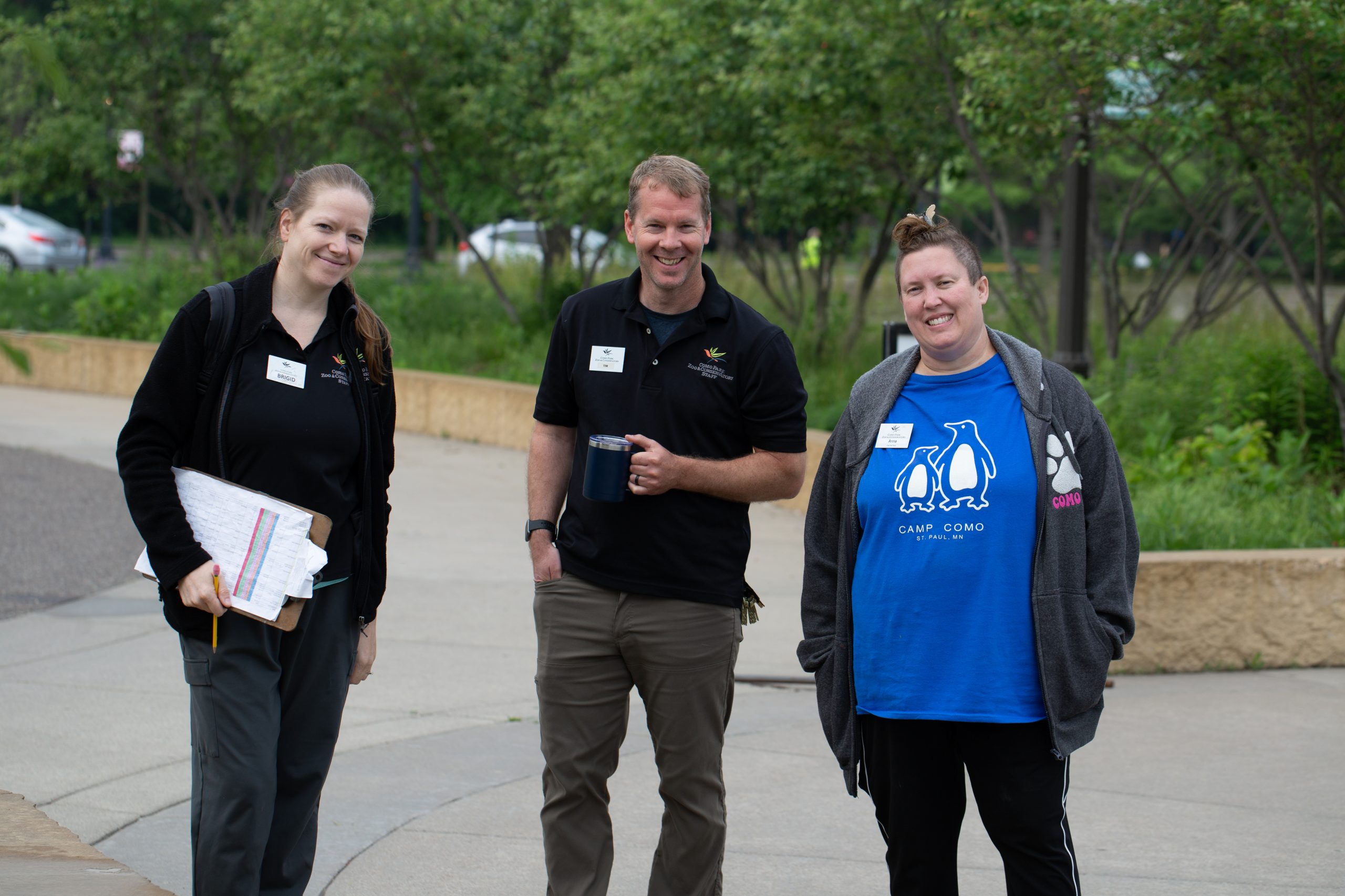
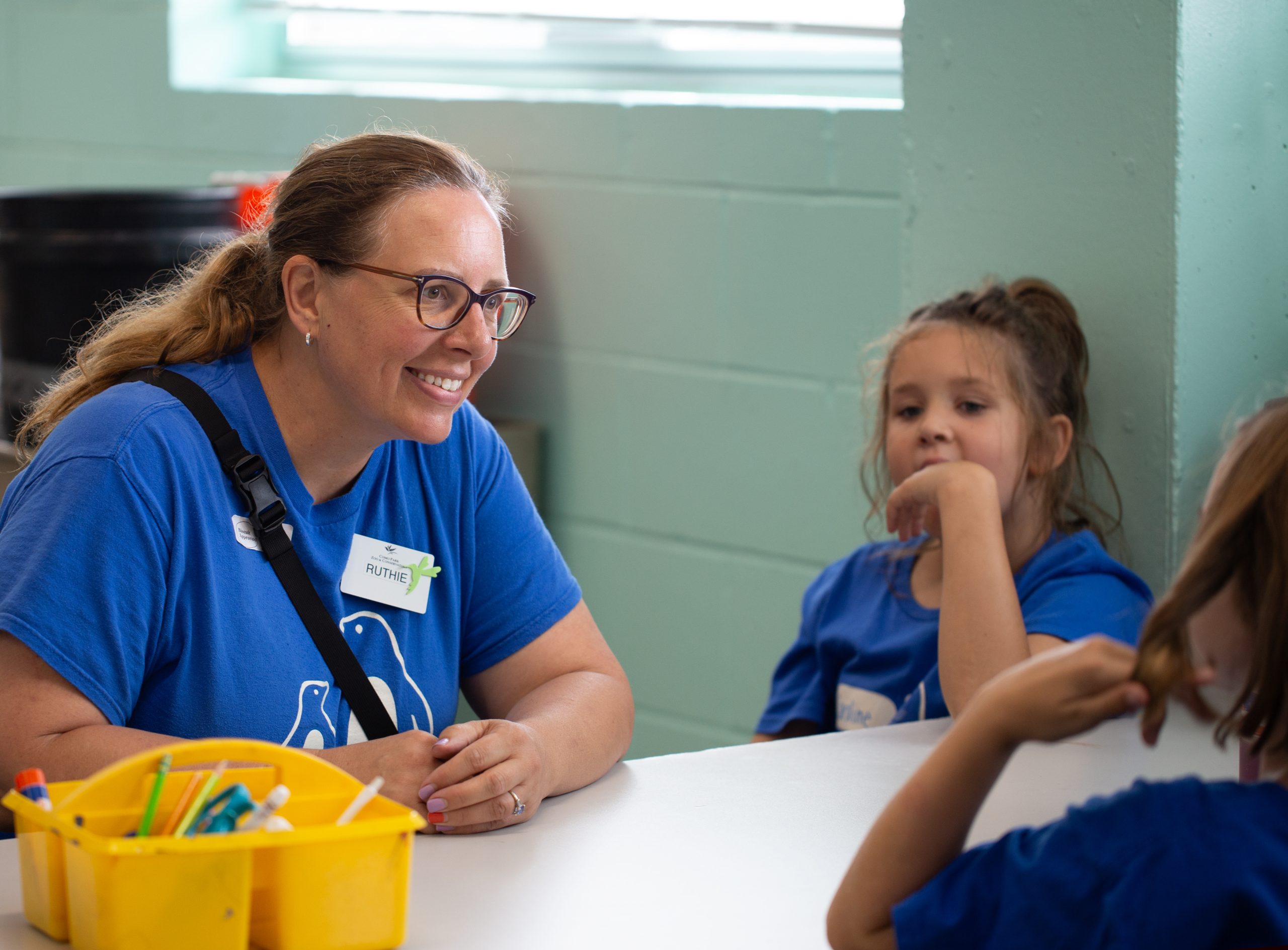
Improving Access and Engagement
The new Como Cares specialist role is just a small piece in a much larger initiative aimed at meeting the growing needs of the more than 700,000 school-age visitors who come to Como each year. Driven by a new strategic plan supported by Como Friends that was based on feedback from parents and community partners and new findings about best practice strategies for promoting conservation education with kids, many of Como’s education offerings are being reimagined to improve accessibility and engagement with kids of all ages and abilities.
For instance, the weekly free Little Explorers program for preschoolers, funded by Minnesota’s Legacy Amendment, has been updated with more opportunities for imaginative play and activities that encourage kids to get to know different animals, plants, and the natural world. “It used to include a lot of activities and laminated sheets where kids had to have a parent helping out,” says Program Specialist Erin Dimond. “Now with more manipulative things like animal figurines and play stations, kids are showing their parents how they want to play and learn.”
Improving access for kids with sensory differences is also part of the plan. Once a month, Como opens an hour early for Sensory Friendly Mornings, allowing youth with autism, anxiety, ADHD, and other conditions and their families extra time to explore Como without the crowds. The current program also includes a social narrative that gives families an idea of what to expect on their visit, and Como is partnering with AuSM and Fraser to implement even more sensory-friendly modifications and strategies. For the deaf and hard of hearing, an engaging and kid-friendly American Sign Language interpreter supports the story-time portion of Little Explorers every Thursday, and travels across the Zoo and Conservatory to interpret public talks throughout the day.
With growing demand for Como’s summer camps, Como Friends and Como Park Zoo & Conservatory also combined forces to continue improving the camp experience, and to make it more accessible for more families. This spring, Como Friends expanded its commitment to summer camp scholarships by more than 50 percent, funding that made it possible to provide a week-long Camp Como experience to about 50 elementary-age campers. At the same time, Como tested out a new staffing model, recruiting veteran classroom teachers to apply for short three- to six-week terms within the seasonal summer camp program. “In the past, we hired college students who were looking for classroom experience,” Hanes says, “but by hiring professional teachers who want a fun summer gig, we’re also getting the benefit of their experience and their great classroom management skills.”
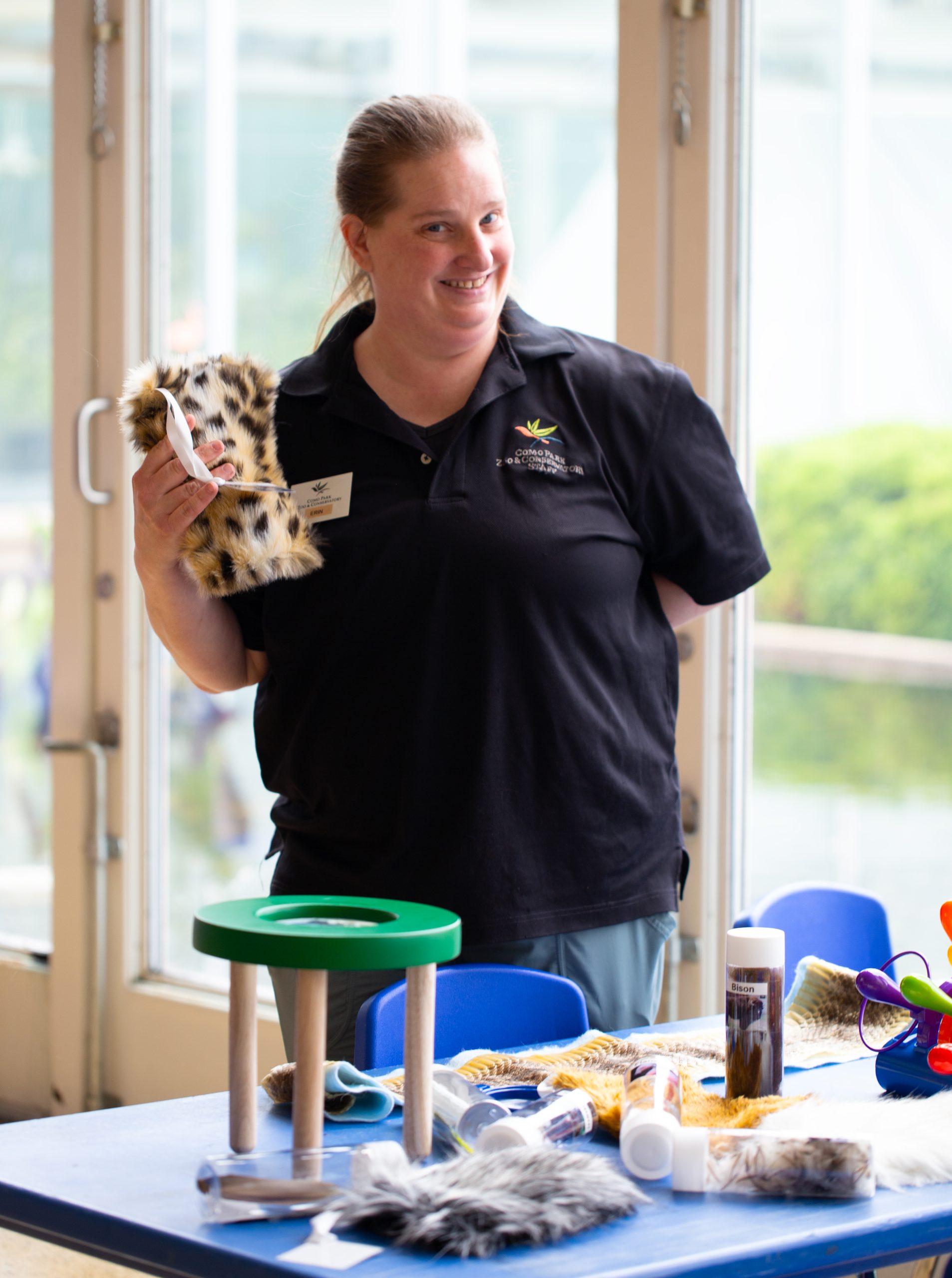

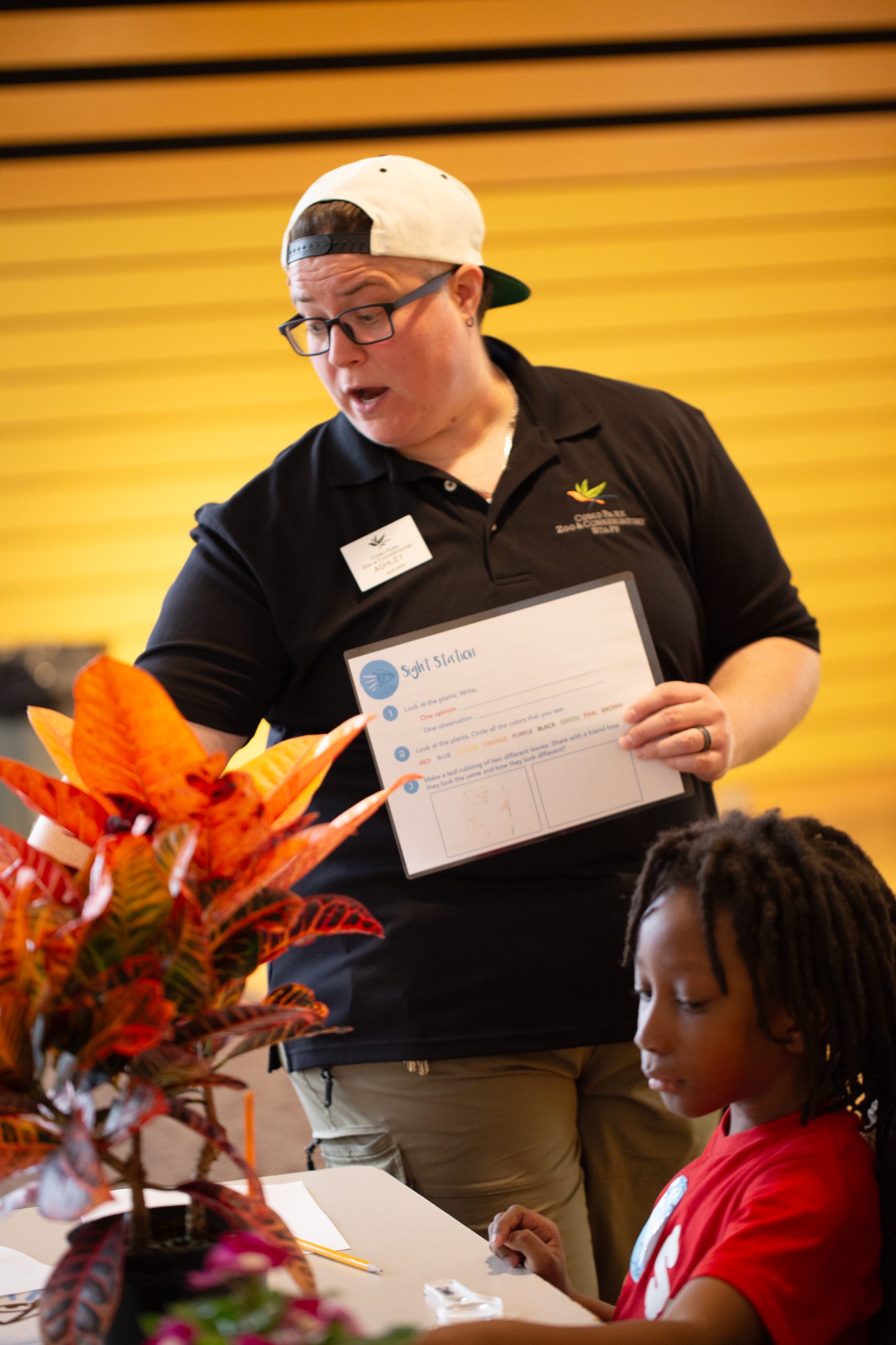
Back-to-School Partnerships
Now that school is back in session, Como’s education department is turning its attention to expanding school partnerships. After a successful pilot program last winter, Como’s popular Residency Program will fire up this fall, offering on-site experiences for third grade classrooms around the Twin Cities, and off-site programs for third graders across the state.
Made possible with funding from Minnesota’s Legacy Amendment, the free on-site program provides for both transportation costs to Como and a multi-day, multi-disciplinary curriculum where Como’s animals and plants become the backdrop for arts, language, and science learning, as well as early experiences with nature. “Even though local schools participate in Residency, many students have never been to Como before,” says Residency Education Specialist Katie Raeker, “That’s why we find ways to not only connect students to nature, but also to Como’s unique and lovable plants and animals. It’s really fun to show them around and to see their faces the first time they see a giraffe, or watch a sea lion swimming in the water.”
To reach outstate classrooms, the Residency Program hits the road, allowing a Como residency specialist to relocate for a week in Greater Minnesota, with a carload of conservation topics, art projects, and other activities for third grade classrooms. Following a pilot season that traveled to such communities as Grand Rapids, Melrose, Hinckley, and Faribault, the program got strong marks from participating classroom teachers. “One thing we’re hearing is that they really appreciate our multi-modal approach with our curriculum,” says Residency Coordinator Madeline McCullough. “There’s movement throughout the day, videos and slideshows, class discussions, and very tactile experiences with biofacts and plants. The curriculum makes them feel supported, and it works to reach many different types of learners.” Another strength of the program: all of Como’s Residency Program educators are former classroom teachers, skilled at shaping lesson plans to fit the needs of participating classrooms.
Closer to home, Como is doubling down on its popular second grade field trip partnership with St. Paul Public Schools, funded by Como Friends. For years, the program has made it possible to invite every second grade classroom in the district to Como with free transportation and a free program called “Plant Detectives” that introduces young learners to collecting data, using their senses, and making observations about the natural world. Starting this fall, the program will expand to include St. Paul’s fourth grade classrooms as well, with a new animal-focused curriculum.
“One of the exciting things about the new fourth grade partnership is that we’ll be highlighting some of our Conservation Champion projects from over the years, showing fourth graders a little bit of the conservation work our own staff has done, and connecting it to the animals that live at Como Zoo,” says Tim Buer, Como’s education coordinator. The station-based class will comprise five conservation themes for fourth graders to explore, through engaging content that highlights first-person experiences like Senior Keeper Jill Erzar’s trips to Africa to support giraffe conservation in the wild and Aquatics Keeper Kelley Dinsmore’s experience rehabilitating injured and orphaned penguins on the coast of South Africa. “We’re using a see, learn, and do model with stations that students can visit, each with a different conservation theme,” Buer says, all while students learn more about the people behind Como’s plants and animals.
While the curriculum is designed to fit the growing needs of fourth grade students, Buer says it’s also meant to teach a critical lesson about Como—that it belongs to the whole community. “Building a sense of ownership and connection at Como is one of our goals, so it’s always been our hope to create a program for older kids,” he says, noting that repeat trips to Como are the key to those relationships. “Return visitors are important at Como, and none are more important than our next generation of St. Paul students.”
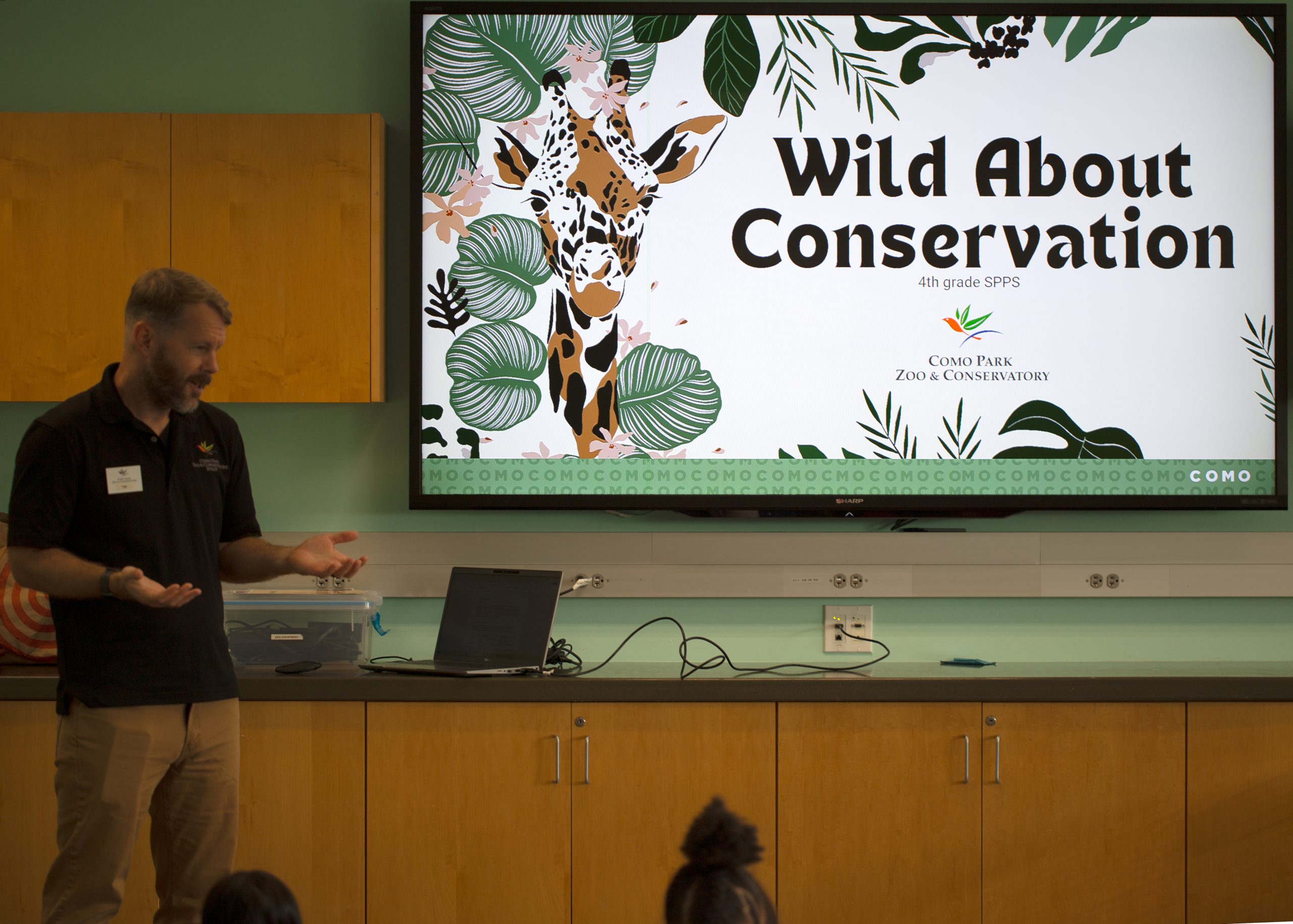

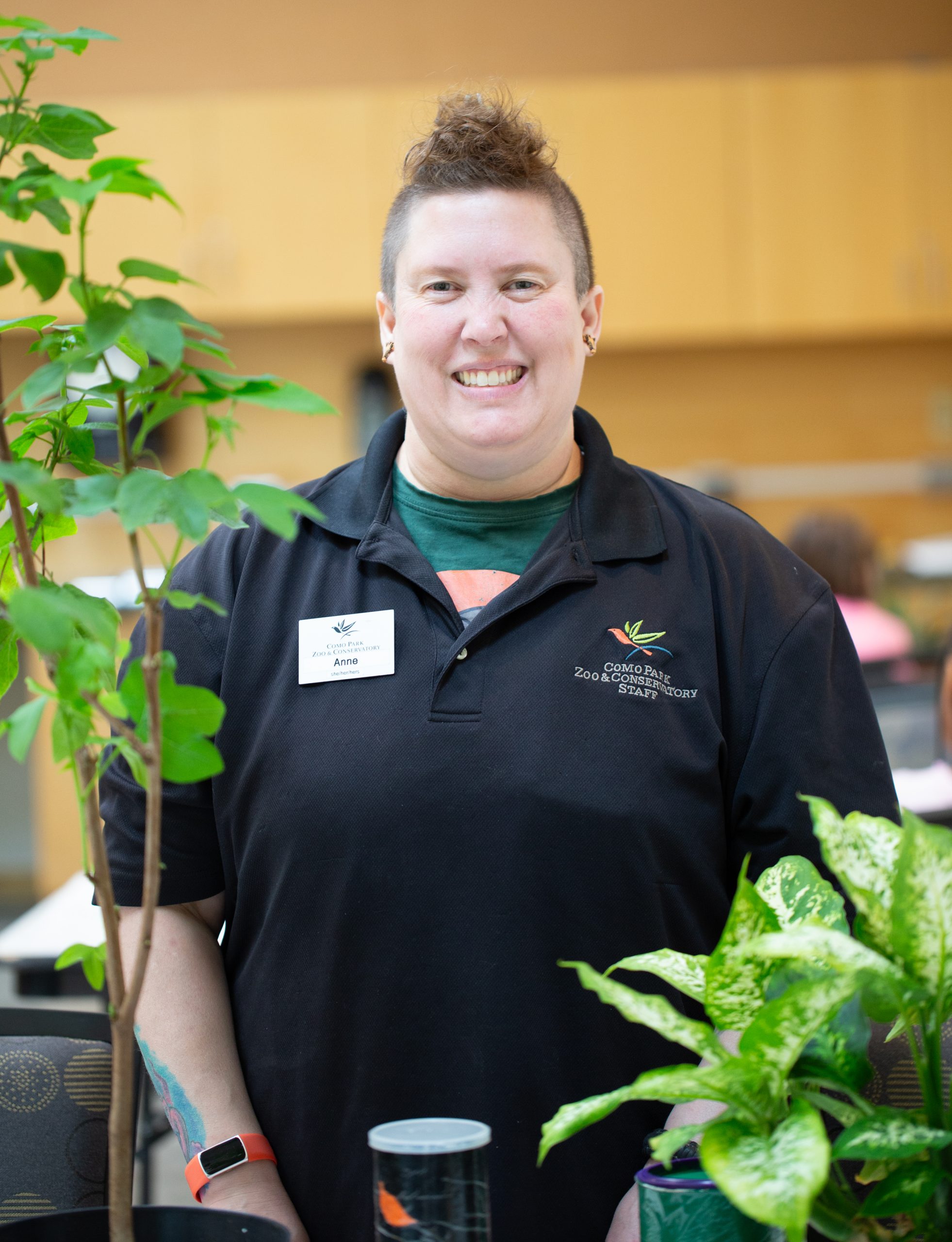

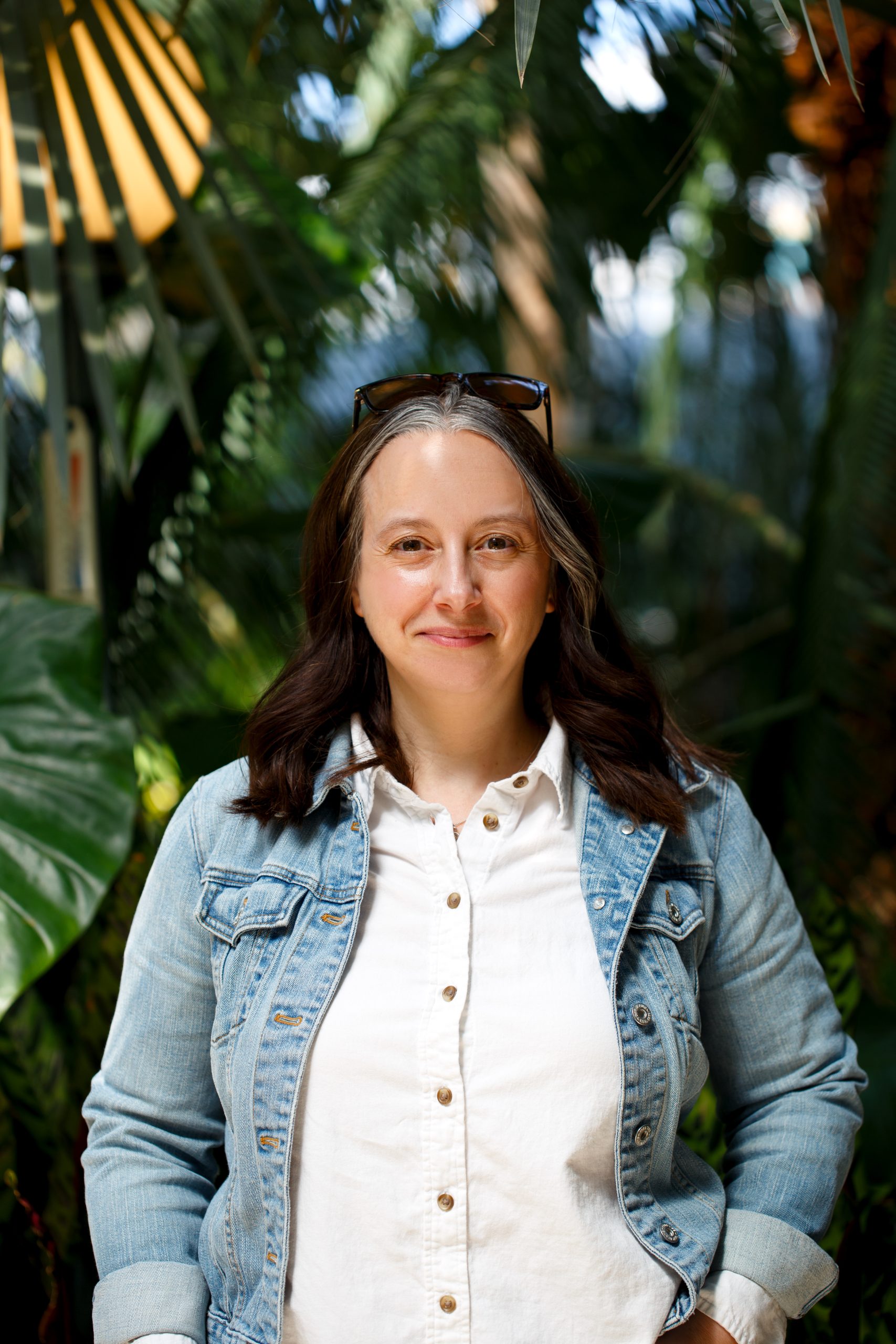

Your support for Como Friends is critical to teaching the next generation the value of conservation. Through summer camp scholarships, school group programs, free admission, and more, your generosity makes it possible to introduce more than 700,000 school-age visitors each year to the wonders of nature. Give to the Max for Como Park Zoo & Conservatory! Thanks to generous matching gifts from Como Friends’ Board of Directors and long-time Como Friends supporters Sandy and Dean, every gift you make to Minnesota’s most visited cultural destination will be doubled, dollar for dollar, up to $52,500. Thank you!
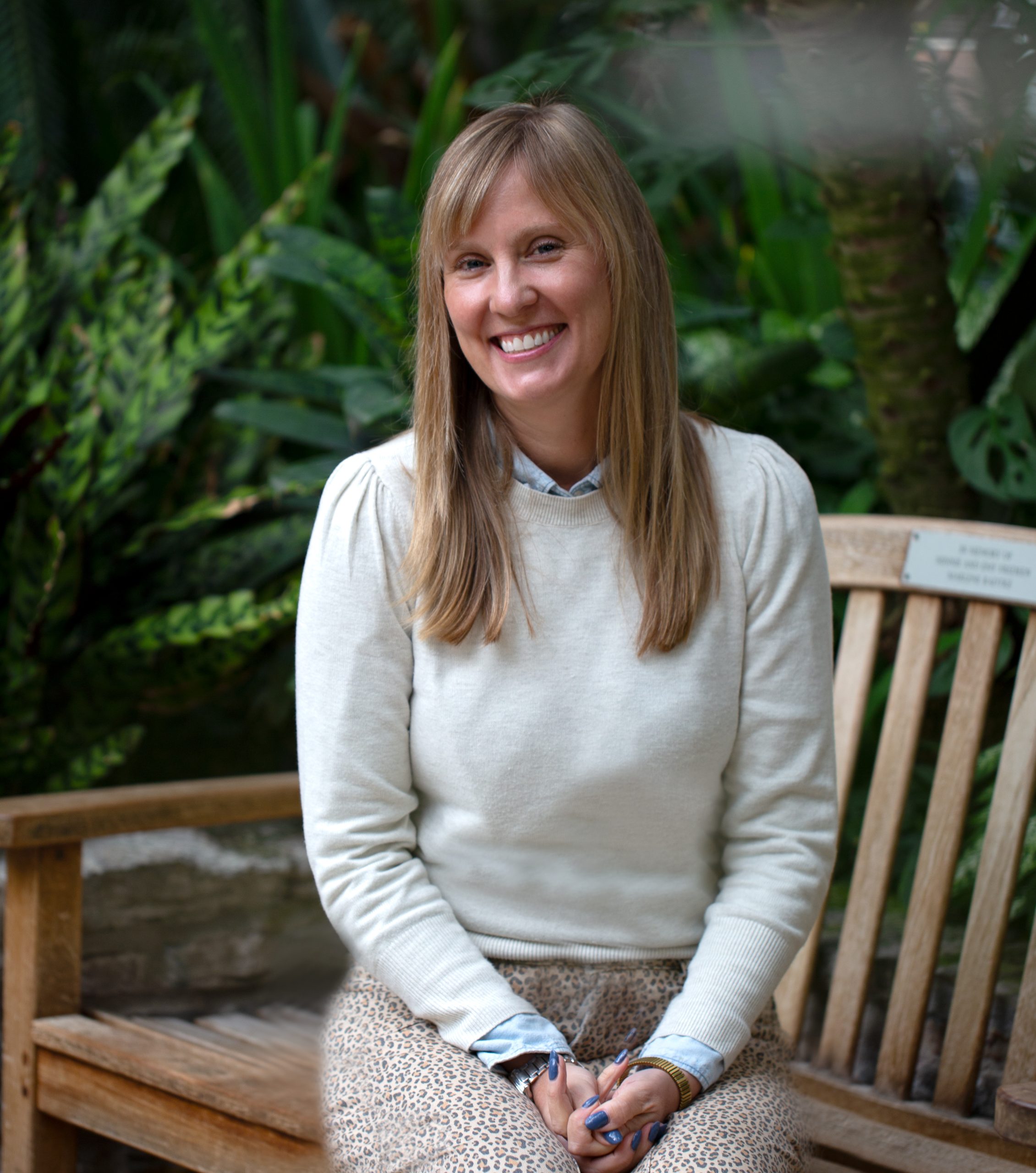
Deputy Parks Director Erica Prosser was filling in as Como’s interim director last summer when the city of St. Paul’s computer systems were hit by a disabling cyberattack. “Being new here, I immediately flashed on ‘Jurassic Park’ and imagined all the animals just wandering away,” she says. “The staff reassured me that can’t happen, thank goodness, but this is a job that comes with many surprises.”
Officially appointed to the campus director position in September, Prosser has made fast work of learning the ropes at Minnesota’s most visited cultural destination, overseeing everything from cross-country polar bear transfers to a comprehensive new strategic plan for conservation. Prosser recently sat down with Como Friends to talk about what it’s like to be responsible for Como Park Zoo & Conservatory, where more than 1,000 animals and nearly 2 million annual visitors cross paths every day.
You’ve worked in a variety of government roles, in the Minneapolis mayor’s office, the Minneapolis Fire Department, and you served on the Metropolitan Airports Commission. How did you find your way into the St. Paul parks, and why does this work excite you?
I would say that my personal mission in my work has been about promoting equity and ending systemic racism, and so one of the things I loved about the parks and my job as deputy director has been overseeing the Right Track program [which has become a pipeline for career development opportunities for youth from cost-burdened households in St. Paul]. Here at Como, we’ve created a new apprentice program that’s creating paid work opportunities in zookeeping and horticulture for young people who might not be able to afford taking on an unpaid internship. I’m really passionate about youth and workforce development, and the parks are a great place to support both. I also love that Como is free, because it helps us to serve such a diverse audience. Mayor Melvin Carter would often say that he wants this to be “Saint Paul for all,” and in the Parks and Recreation Department, we’ve been working hard to break down barriers to our programming. I’m constantly thinking about ways to reach new communities who might not be familiar with what Como offers.
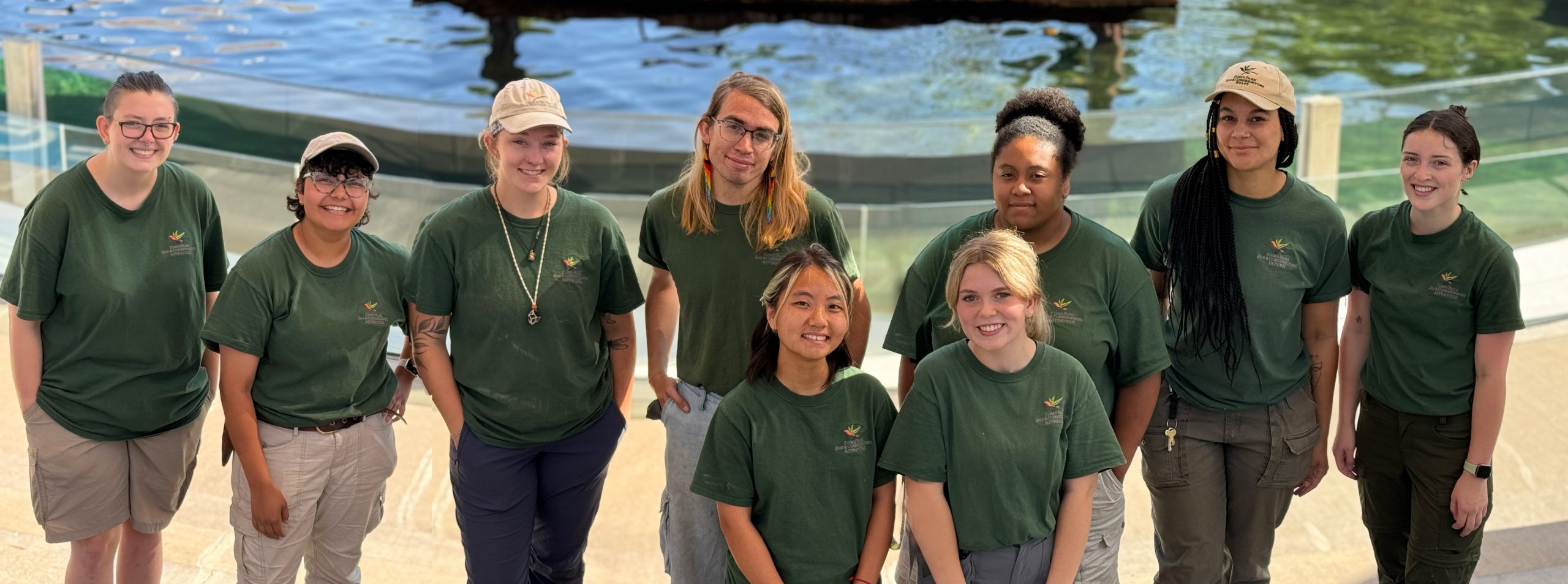
Did you come to Como as a kid?
I lived in Chicago until I was in sixth grade, so the Brookfield Zoo and Lincoln Park Zoo were my childhood zoos. I’m afraid it’s not a great story, but the first time I came to Como on a field trip, I cried the whole bus ride home because I was upset about the polar bear, doing that repetitive swimming. Of course, many years later, when I came back as a parent with my two kids, Como had become a completely different place with a state-of-the-art habitat in Polar Bear Odyssey, and exceptional keepers like Allison Jungheim, the polar bear studbook keeper, who is recognized as an expert in humane polar bear care. These major improvements have elevated animal care to such an extent that Como has become a valuable education destination, teaching the public about conservation, and now even helping to sustain vulnerable species like polar bears, and doing everything we can to help protect them in the future.
Your coworkers have noticed that you’ve been creating an impressive botanical collection in your office. Is the Marjorie McNeely Conservatory inspiring you?
Absolutely! I love looking into the greenhouses and seeing all of these growing things. One of the most memorable and meaningful things about Como is coming to the Conservatory with a family member who was suffering from severe depression. We made it a regular thing for a while, coming to visit all these green living things, feeling the humidity, and taking in all of the good smells in the Sunken Garden, in the Palm Dome. It became part of a healing journey, and that’s why the Conservatory has a very special place in my heart. I think it does for a lot of people.
What discoveries about Como have surprised you the most since you started this job?
Seeing people stand in line for hours when Frederick the corpse flower was blooming was a big surprise. It taught me that not only do our animals have personalities, but the plants have personalities, too—and fan clubs!
Another big learning experience for me was when Sago, a Hoffmann’s two-toed sloth, gave birth right on exhibit. That’s when I found out there’s no urine pregnancy test for sloths, so guests were the first ones to see it, record it, and post it so it went viral. We leaned into it because the whole thing was really cool, but a few weeks later, the baby died, and it was just heartbreaking. The circle of life is real in a zoo, and when an animal like Clover the giraffe dies, the impact is enormous. These animals are like longtime coworkers to our zookeepers, and they’ve often been caring for them even longer than their own children. These are huge losses.
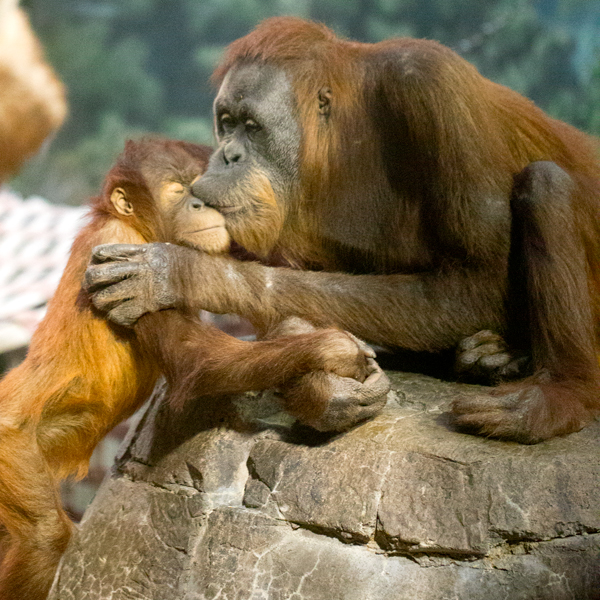
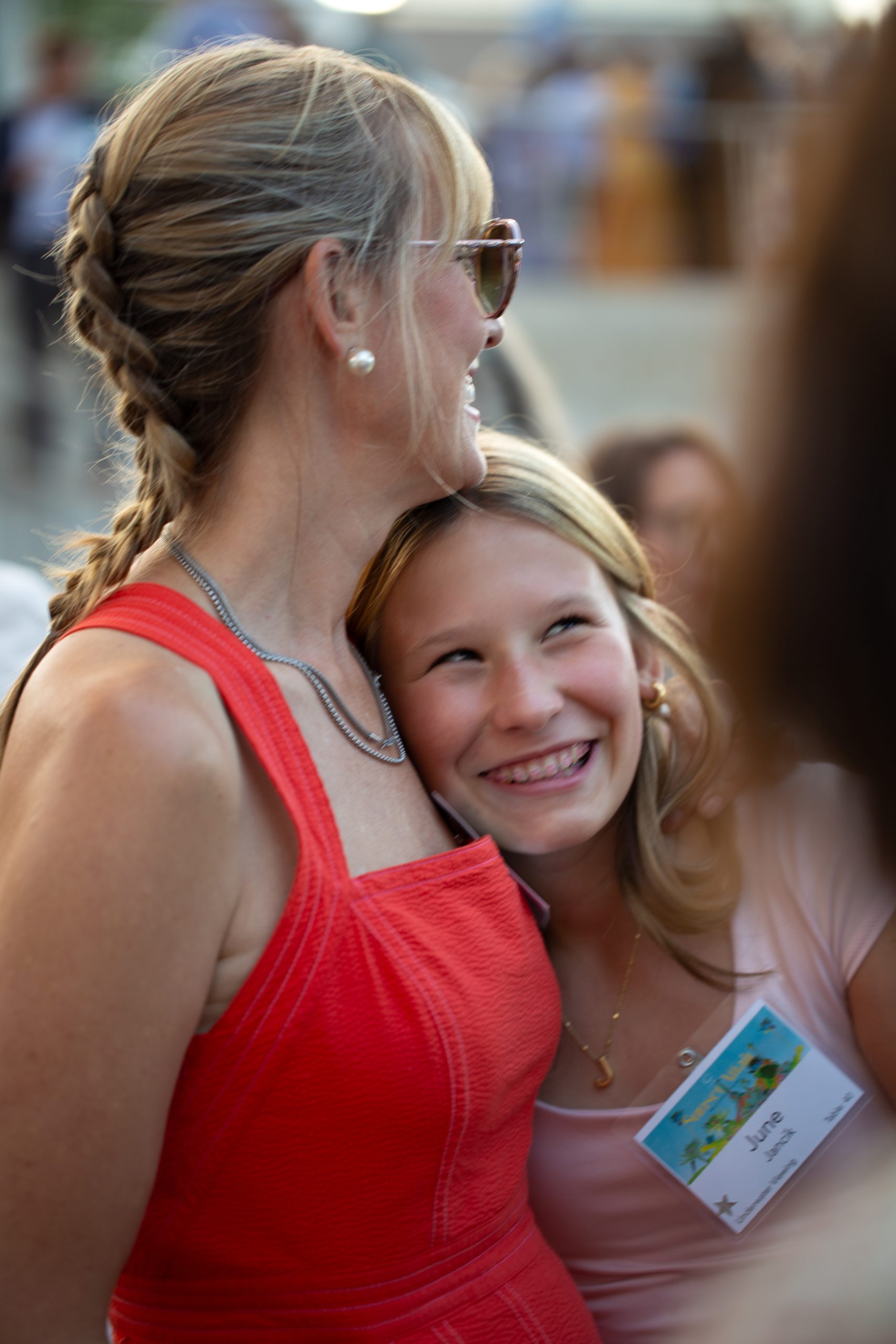
What are you looking forward to for Como?
Creating a new campus plan to guide improvements and programs for the future. Our infrastructure is aging while animal care standards are only increasing, so I’m really looking forward to imagining and designing what this place could look like and feel like in the future. I’m also really excited about working with Katie Hill, Como Friends’ new president, who also loves to brainstorm. With the work we’ve done creating the education strategic plan and the conservation strategic plan, it feels like we have all of the layers in place to do this work really well.
We know you’re a fan of Parks and Rec, and regularly get cast as Leslie Knope in the St. Paul Parks’ annual Halloween post. What do you have in common with her?
Saint Paul as a whole, and the Park and Rec Department in specific, is such a family. A large percentage of our workforce was born in Saint Paul, and still lives in Saint Paul, which creates this additional sense of responsibility for stewarding things as well as we can for this community. I love Leslie Knope, and like her, I feel like every day on this job is different, with new things to learn all the time. Do the orangutans have their flu shots? How many school buses just pulled in for field trips? Do we have room for a few hundred new carnivorous plants? Some days it can be a little crazy, but I guess that’s why it’s called a zoo.
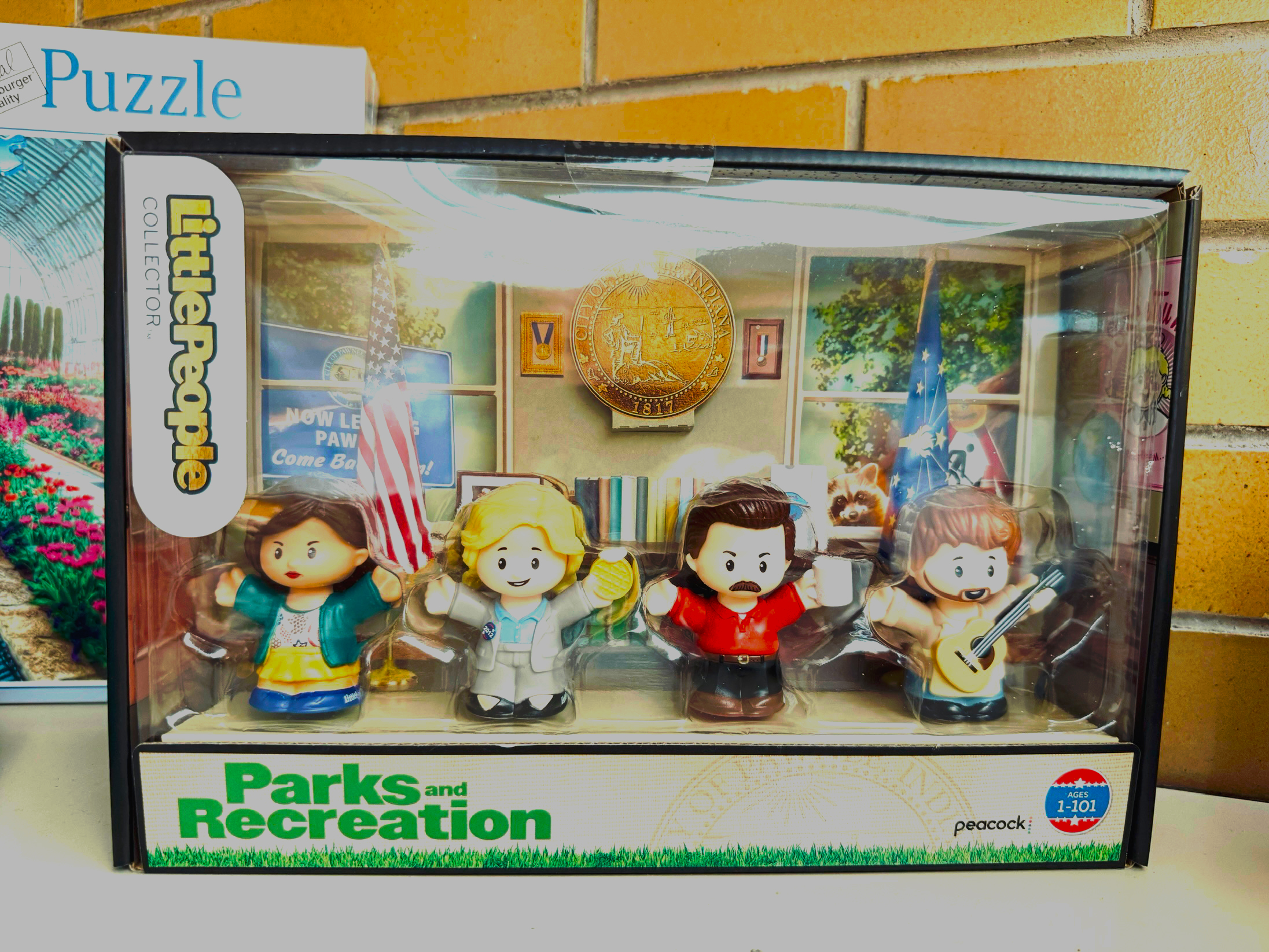
A Warm Welcome and a Wide Reach
“As a long-time volunteer, I love to share stories about each of Como’s animals with visitors. It is one of the connections that makes giving to Como so joyful for us.”–Como volunteer Sandy
A natural oasis where everyone is welcome, Como Park Zoo & Conservatory connects our community to the living wonders of the world. From face-to-face encounters with the wild and precious animals of Como Zoo, to inspiring educational experiences, to corners of quiet beauty throughout the gardens of the Marjorie McNeely Conservatory, every visit to Como stirs the senses and the soul.
Thanks to your support for Como Friends, Como’s reach extends far beyond the gates, bringing great education programs to kids in outstate Minnesota, and connecting Como’s committed zookeepers and horticulturists to conservation efforts around the world.
Gifts of every size make a big difference at Como, investing in critical breeding programs that protect vulnerable species, cutting-edge veterinary care for animals of all stripes, and fresh new curriculum that inspires and empowers the next generation to take on some of the toughest challenges of environmental stewardship. Here’s a look:
- $5 covers a sack of sweet potatoes, a favorite treat for Como Zoo’s polar bears
- $10 provides the suggested donation for a parent and two kids, protecting Como’s commitment to free admission for everyone
- $25 helps plant 10 bulbs that will burst into bloom in time for the Marjorie McNeely Conservatory’s spring flower show
- $50 pays for a flu shot for one of Como Zoo’s troop of orangutans
- $100 provides a crunchy crate of romaine lettuce for Como’s herd of giraffes
- $150 covers one-way transportation to bring a Como education specialist to outstate Minnesota through Como’s popular Residency Program
- $250 helps Como Friends offer a week-long summer camp scholarship for a family in need
Thanks to generous matching gifts from Como Friends’ Board of Directors and long-time Como Friends supporters Sandy and Dean, every gift you make to Minnesota’s most visited cultural destination will be doubled, dollar for dollar, up to $52,750.
Be a part of Como’s century-long tradition of community support by donating today!
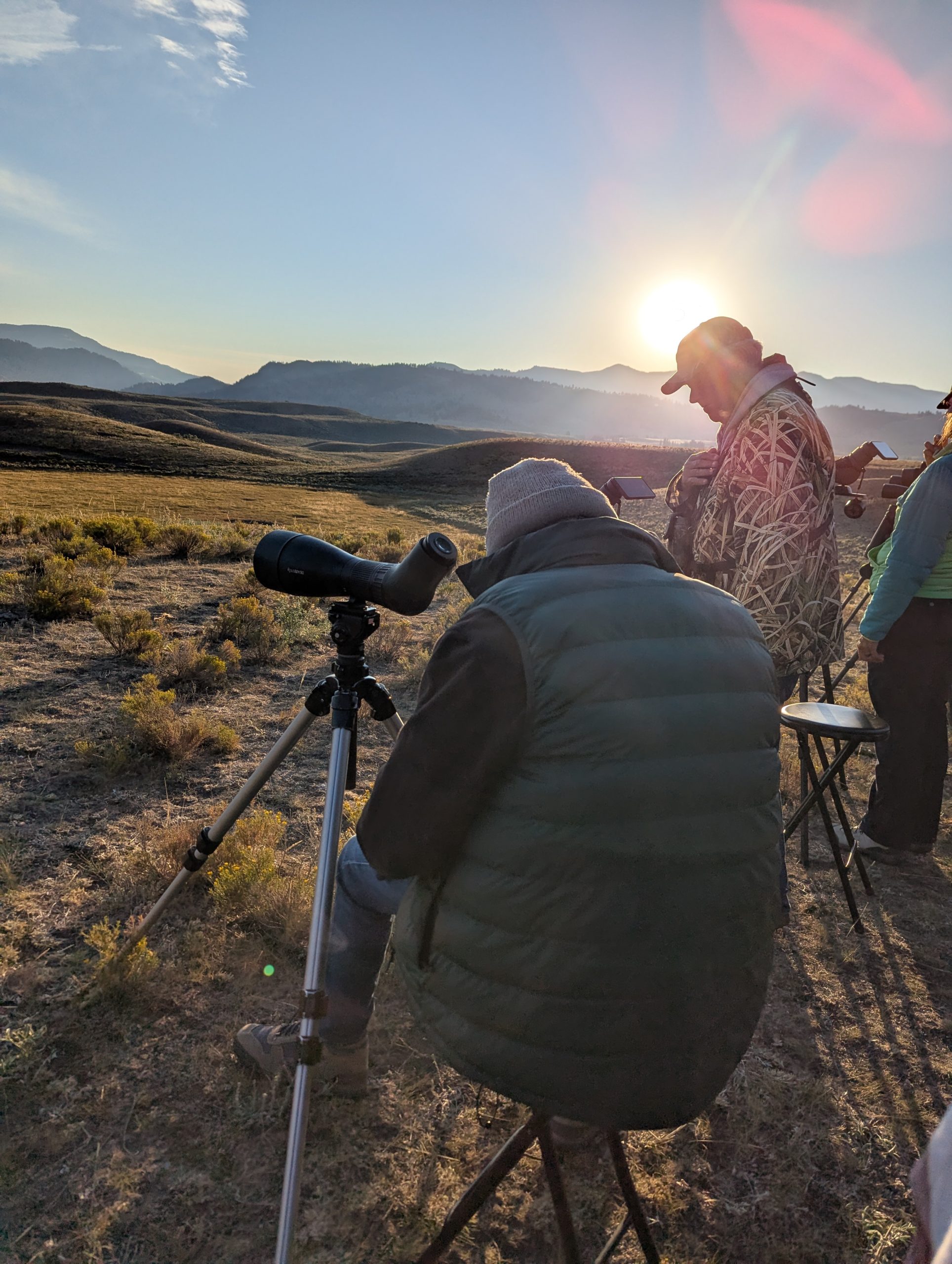
As Como’s education coordinator, Tim Buer is very well acquainted with Como Zoo’s resident wolves, Nicky and Cerberus. But on a recent trip to Yellowstone National Park, Buer developed a whole new appreciation for the species, even while observing them through a scope from nearly a mile away.
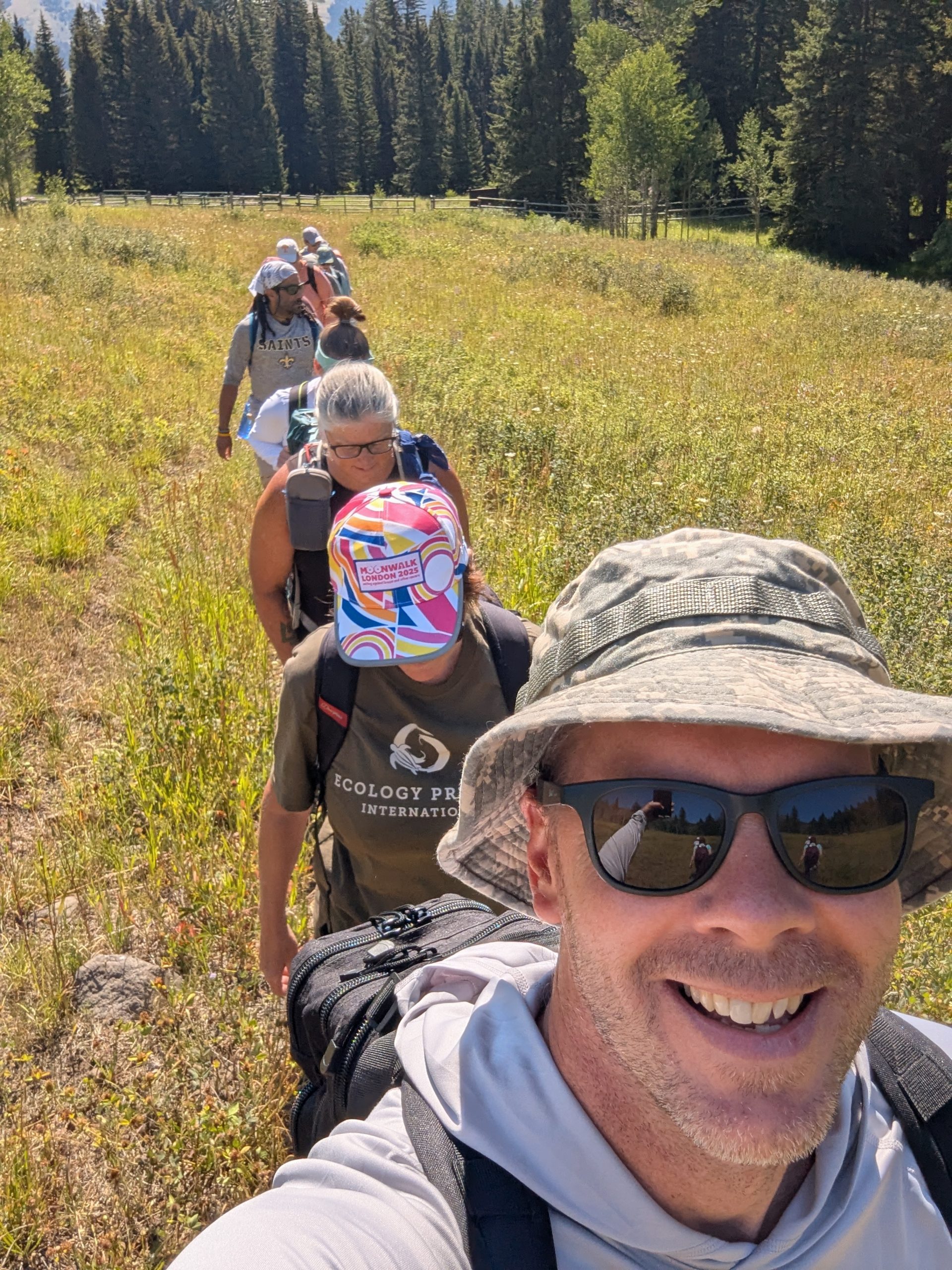
“We’re lucky to have a pretty stable wolf population in Minnesota, but seeing them in the wild in Yellowstone, where they’ve made a successful return, was just really exciting,” he says.
Rising before dawn to watch as some of Yellowstone’s wolves started their day was one of the highlights of a week-long professional development trip made possible by Como Friends’ Conservation Champions program. With help from the competitive microgrant program, Buer was able to join a cohort of 13 other educators from around the country in an immersive conservation experience led by Ecology Project International, a nonprofit that brings students and scientists together on field research projects around the world. Sleeping in tents in and around Yellowstone’s Northern Range, the group collected a range of data to support scientists in the field, from gathering fecal samples from the Lamar Valley’s roaming herds of bison, to observing wild wolf behavior alongside Rick McIntyre, a retired park ranger who’s become a world-renowned wolf conservation expert.
“That was probably the highlight of the whole trip for me, learning from a researcher who’s been in Yellowstone for the duration and who could talk about what the reintroduction of wolves has meant,” Buer says. “For me, one of the most interesting things was hearing how much the loss of wolves a generation ago affected everything in the ecosystem, driving up the elk population, that would then chew down all of the aspen trees. Now with only about a hundred wolves in the park, it’s helped to bring elk back to their normal capacity, and made everything more stable. After eight decades of decline, aspen trees are flourishing again, thanks to wolves keeping elk herds over grazing in check. Their return has reshaped the landscape, showing how one species can restore balance to an entire ecosystem.
“Another fascinating thing we learned was the positive economic impact that those wolves have,” he continues. “It’s estimated that one wolf brings in about $82 million in revenue for the park each year.”

Facts like these are very likely to find their way into Como’s conservation education curriculum, including the new Fourth Grade Field Trip partnership launching later this fall. Following the success of Como’s long-running Second Grade Field Trip program with the St. Paul Public School District, this new offering highlights a series of Conservation Champions projects from over the years, Buer says, showing fourth graders a little bit of the conservation work our own staff has done, and connecting it to the animals that live at Como Zoo.”
The station-based class highlights first-person experiences like senior keeper Jill Erzar’s trips to Africa to support giraffe conservation in the wild and aquatics keeper Kelley Dinsmore’s experience rehabilitating injured and orphaned penguins on the coast of South Africa. “We’re using a see, learn, and do model with stations that students can visit, each with a different conservation theme,” Buer says, all while students learn more about the people behind Como’s plants and animals.
While Buer is still unpacking everything he learned about the extraordinary animals of Yellowstone, he says he looks forward to working some of his experiences and discoveries into Como’s conservation curriculum in the months ahead.
“Yellowstone has a very storied history, and there’s a lot that’s known about it, but also a lot that people probably don’t know about it,” he says. “I really look forward to sharing some of these conservation stories with our students.”
With help from a Conservation Champions grant, Como horticulturists are calling attention to one of Minnesota’s most valuable and vulnerable ecosystems.
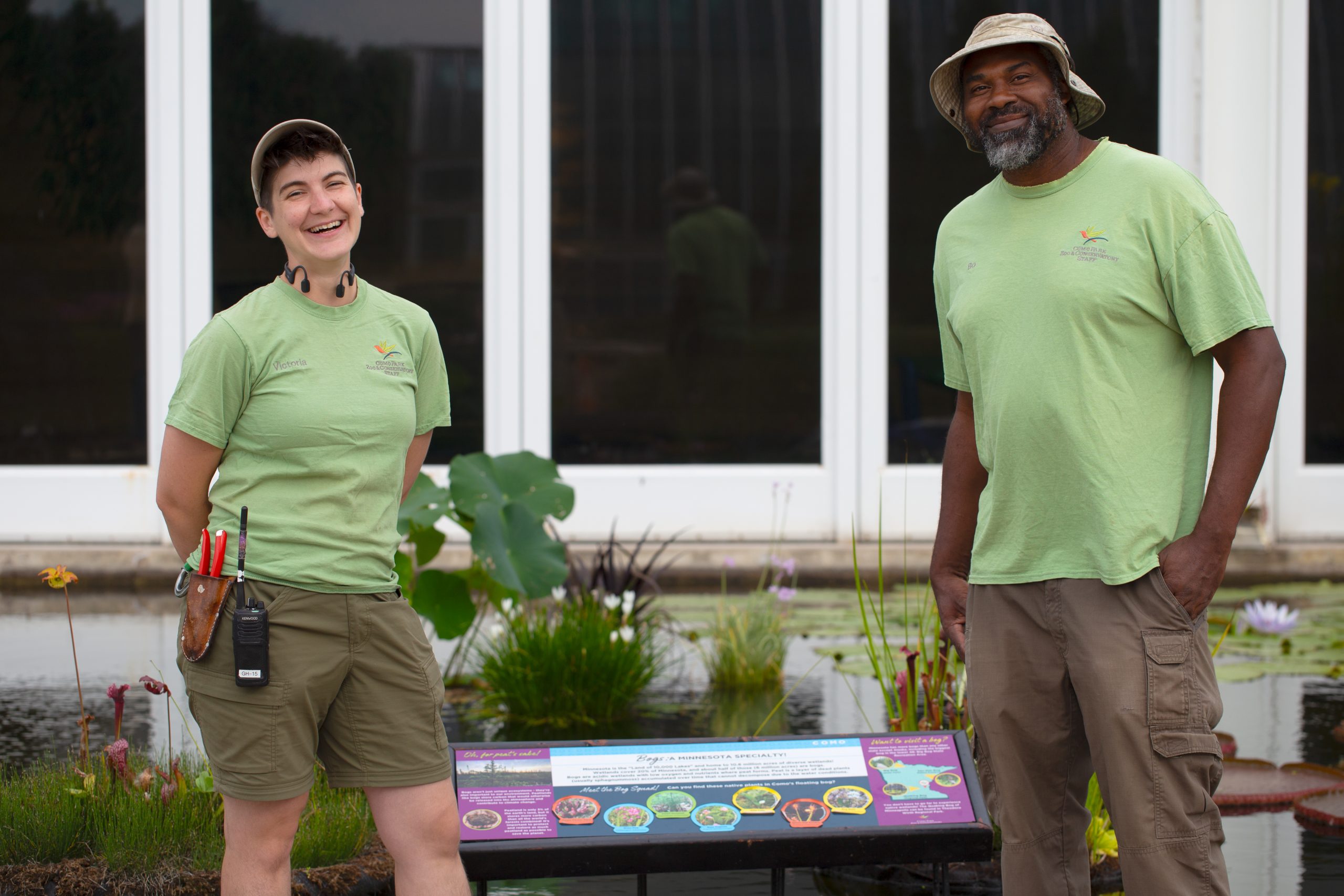
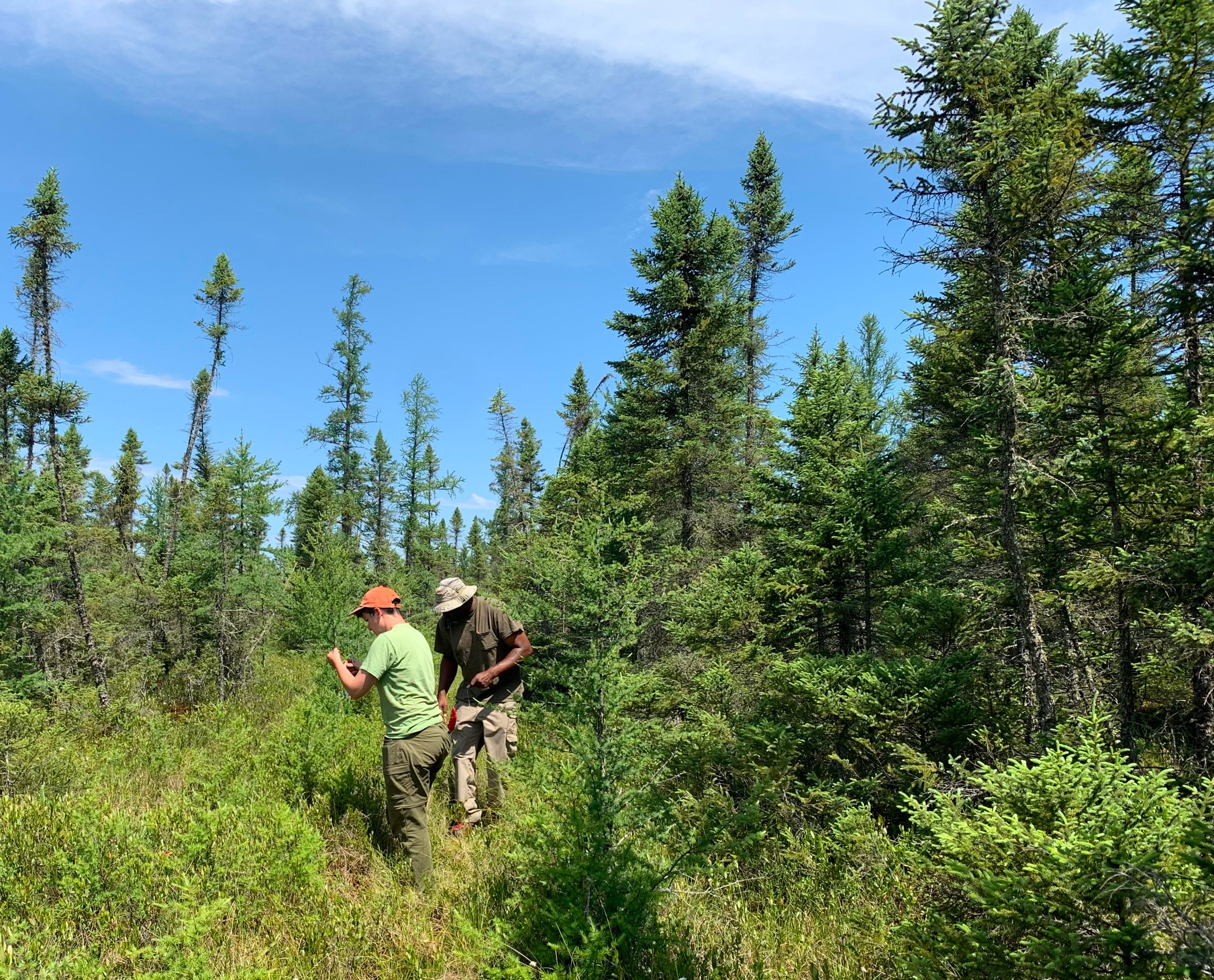
With its glossy leaves and deep red and purple coloring, the pitcher plant is one of Minnesota’s most captivating natives. So captivating, in fact, that when insects are drawn into its invitingly vase-like body, they soon discover there’s no way out. Tiny, down-drafting hairs inside the plant make it impossible for prey to find purchase before being drowned and digested by this carnivorous plant.
Native to Minnesota’s peatlands, pitcher plants are just one of the fascinating featured players in a trio of “mini bogs” floating this season in the Marjorie McNeely Conservatory’s Water Gardens. Created by Como horticulturists Bo Akinkuotu and Victoria Housewright, these miniature peatlands—and new interpretive signage nearby—are part of a larger Como Friends’ Conservation Champions project designed to call attention to the beauty, diversity, and environmental benefits of the region’s expansive bogs.
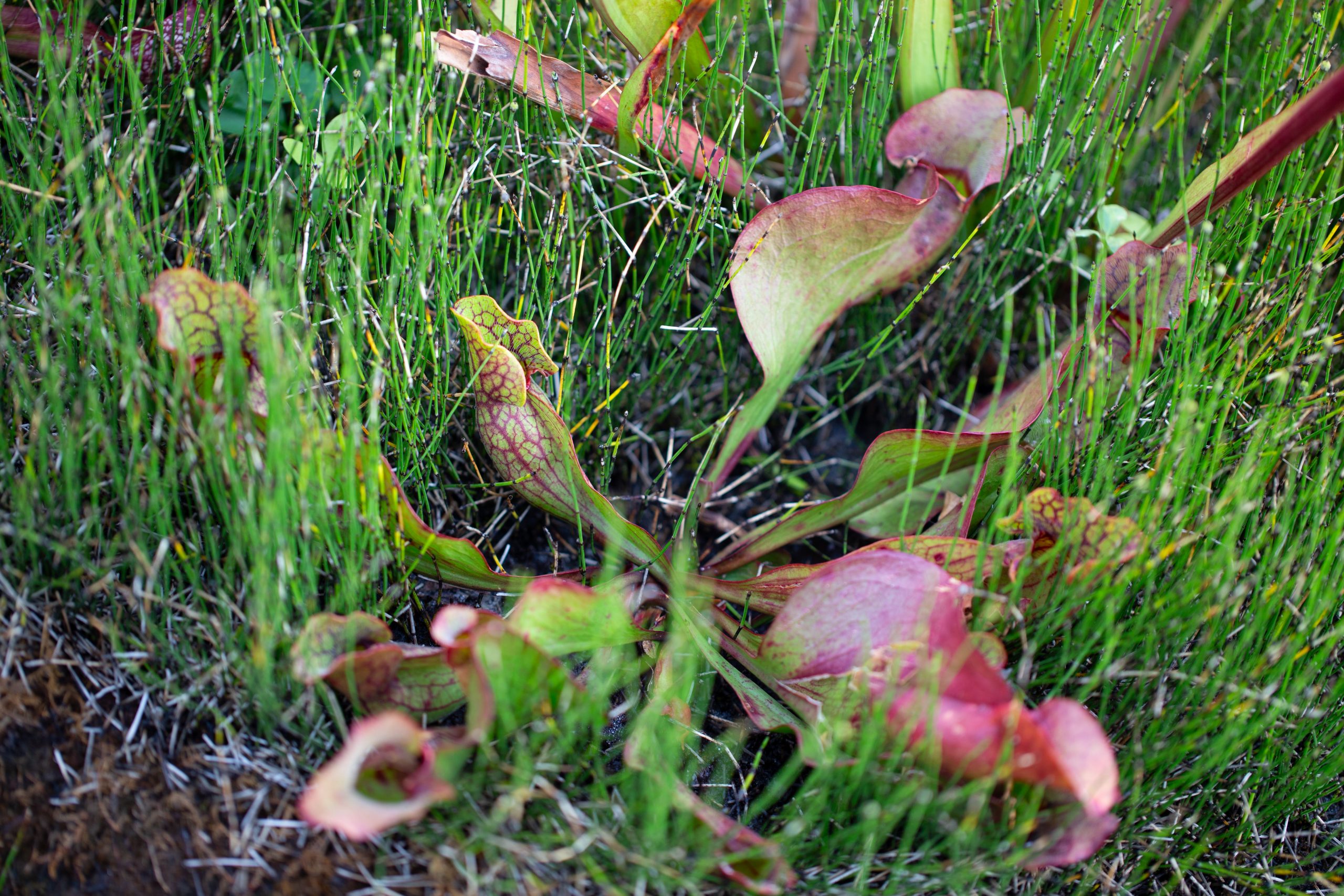
“Minnesota actually has more bogland than any state outside of Alaska, covering nearly six million acres,” says Housewright. Forged more than 10,000 years ago with the retreat of the last glaciers, these swampy wetlands are “so acidic that plant matter can’t decompose, and instead, builds and builds over time, creating layers and layers of peat. After thousands of years, bogs now capture twice as much carbon as all the world’s forests, but if we lose them, it would be like a carbon bomb going off. That’s why it’s so important that we conserve them.”
A Growing Partnership
One of the best places to see this unique ecosystem is in northern Minnesota’s Sax-Zim Bog, a three-hundred square mile peatland about an hour’s drive northwest of Duluth. Well known to birders who flock there to see northern owls, warblers, finches, and other boreal birds, the bog is just as impressive for its diverse plant life, which includes more than 750 species of wildflowers and terrestrial plants, trees, shrubs, grasses, mosses, and ferns.
“Bogs are having a moment and this is definitely one to see, so we came up with the idea of building a partnership with the Friends of the Sax-Zim Bog, a support organization like Como Friends,” says Housewright. Together, Housewright and Akinkuotu wrote a Conservation Champions request proposing a donation to help the organization buy additional land to conserve, as well as the opportunity to bring home a sampling of the bog’s most interesting plants to expand Como’s educational collections. “We wanted it to be a partnership. They’re the ones with the expertise and resources to protect and preserve the bog,” she says, “and here at Como we have nearly two million annual visitors that we can help get excited not just about this incredible ecosystem, but also about why conserving bogs matters so much for climate change.”
All Sax-Zim Bog photographs taken by Naturalist Kelly Beaster
Wild Collecting for Como
In June, the pair traveled north to work with a naturalist at Sax-Zim Bog who helped them to identify and wild collect some of the peatland’s most notable species, like pitcher plants and sundews, leatherleaf and bog bean, pink lady’s slippers and heart-leaved twayblade. To minimize impact on other plants, the pair took only tiny samples and cuttings. “You can’t really dig in an environment as soggy as that—instead you’re just gently untangling roots from one plant to the next,” Akinkuotu explains.
The team took home nearly 60 individual plants that are now taking root behind the scenes in Como’s 30,000-square-foot greenhouse. Once established, Akinkuotu says he’s looking forward to incorporating more of these bog beauties beyond the Water Garden, where the “mini bogs” have already been a big hit with visitors—and with volunteer ducks who’ve been caught nestling in the moss, grasses, and pitcher plants.
“Even at this scale, you can see these mini bogs creating their own little biomes. We come out here to care for them every day and discover new spiders that have started webbing, more and more bugs that are attracted to these plants, and little tadpoles and frogs that will actually move in,” he says. “By bringing a little more attention to the Sax-Zim Bog, we want people to see how special these places are—and to know that conservation isn’t just something that happens far away. It’s right here at home.”
Bog plants in order of appearance: bog bean, bog rosemary, pitcher plant, bog laurel, star flower, Labrador tea, sundew, lantern sedge, cotton grass

Your support for Como Friends helps support conservation projects at home and around the world through Conservation Champions, a competitive microgrant program for Como’s professional zookeepers, horticulturists, education specialists, and interpretive staff. Give to the Max for Como Park Zoo & Conservatory! Thanks to generous matching gifts from Como Friends’ Board of Directors and long-time Como Friends supporters Sandy and Dean, every gift you make to Minnesota’s most visited cultural destination will be doubled, dollar for dollar, up to $52,500. Thank you!
Como’s teen Nature Walk volunteers make conservation look cool


Once again, the Nature Walk station focused on climate adaptations proved the most popular, setting a new record for interactions with more than 325 visitors in just a few hours.
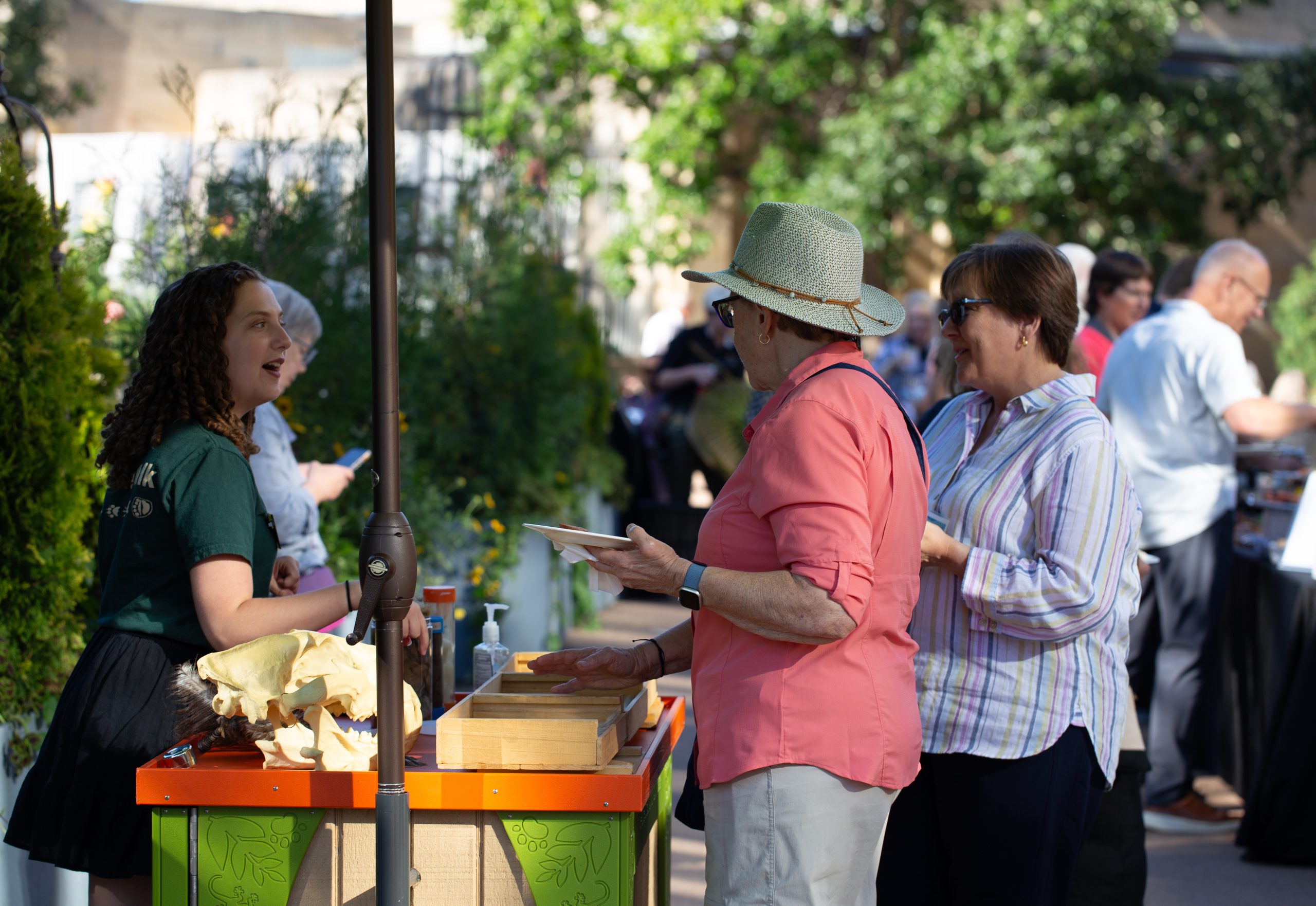
When it comes to teaching young visitors about the value of conservation, Como’s teen Nature Walk volunteers don’t even try to look cool. For years, this selective teen volunteer program has attracted adolescents who are passionate about plants and animals, and who don’t try to hide it.
“It’s a program that’s always attracted nature nerds, and teenagers who are really engaged by the environment, and happy to share what they’ve learned,” says Maddie Becker, Nature Walk Assistant. “In the larger culture, we sometimes tell older kids that enthusiasm is weird, but in this program, it’s what makes these teenagers so effective. Seeing older kids be excited about nature teaches younger visitors that it’s okay to be excited, too.”
Nature Walk just concluded its 2025 summer season, recruiting 45 conservation-minded teens between the ages of 13 and 17, and teaching them how to share and interpret what they’ve learned about Como’s plants and animals at interactive stations around campus. This year, Nature Walk volunteers helped to bring Como a little closer to about 150,000 visitors who spent time learning at one of several stations arrayed around Como Park Zoo & Conservatory Tuesdays, Wednesdays, and Thursdays. While younger kids are the target audience for the conservation role-modeling program, Becker reports that older visitors are also big fans of their infectious enthusiasm, engaging materials, and touchable bio-facts, updated with recent grants from Como Friends.
As part of the program, Nature Walk volunteers receive training about how to engage visitors of different ages, tips for handling the challenges that can come up on Como’s busy campus, and coaching about career paths ahead in conservation. But Becker says they don’t need much additional prodding to start connecting with Como visitors during the busy summer months.
“We’re giving them the space to demonstrate competency, which is so important for teenagers who can often feel overlooked, or like no one is listening to them,” Becker says. “This year, we’ve really tried to open things up more to their ideas and their suggestions, which are always so valuable. They’re so capable, and so good at connecting.”
Know a kid who’d be a great nerd for nature? Check out Como’s call for Nature Walk applications, which comes out again February 2026.
While Como Zoo’s Nicky and Cerberus are easy to spot, wild wolves can be elusive during the summer months. Not only does heavy summer foliage make them harder to see, but wolves are most active at dawn and dusk, saving their energy when the sun is at its peak.

If you’ve been camping in the north woods this summer, chances are good you’ve heard the eerie call of the gray wolf echoing in the distance. But it’s rare to actually see a wolf during the summer months—a fact that’s left gaps in our understanding of wolf behavior and ecology.
So what exactly do wolves do during the summer?
That’s the question driving the researchers with the Voyageurs Wolf Project, a University of Minnesota initiative aimed at creating a deeper understanding of the summer ecology of wolves in northern Minnesota’s Greater Voyageurs Ecosystem. Voyageurs Wolf Project is a research organization whose work contributes to wolf conservation. It’s a topic that’s also fascinated Tieran Rosefield, a former Como Zoo attendant turned temporary hoofstock keeper, who just earned a Conservation Champions grant from Como Friends to help support this nonprofit initiative.
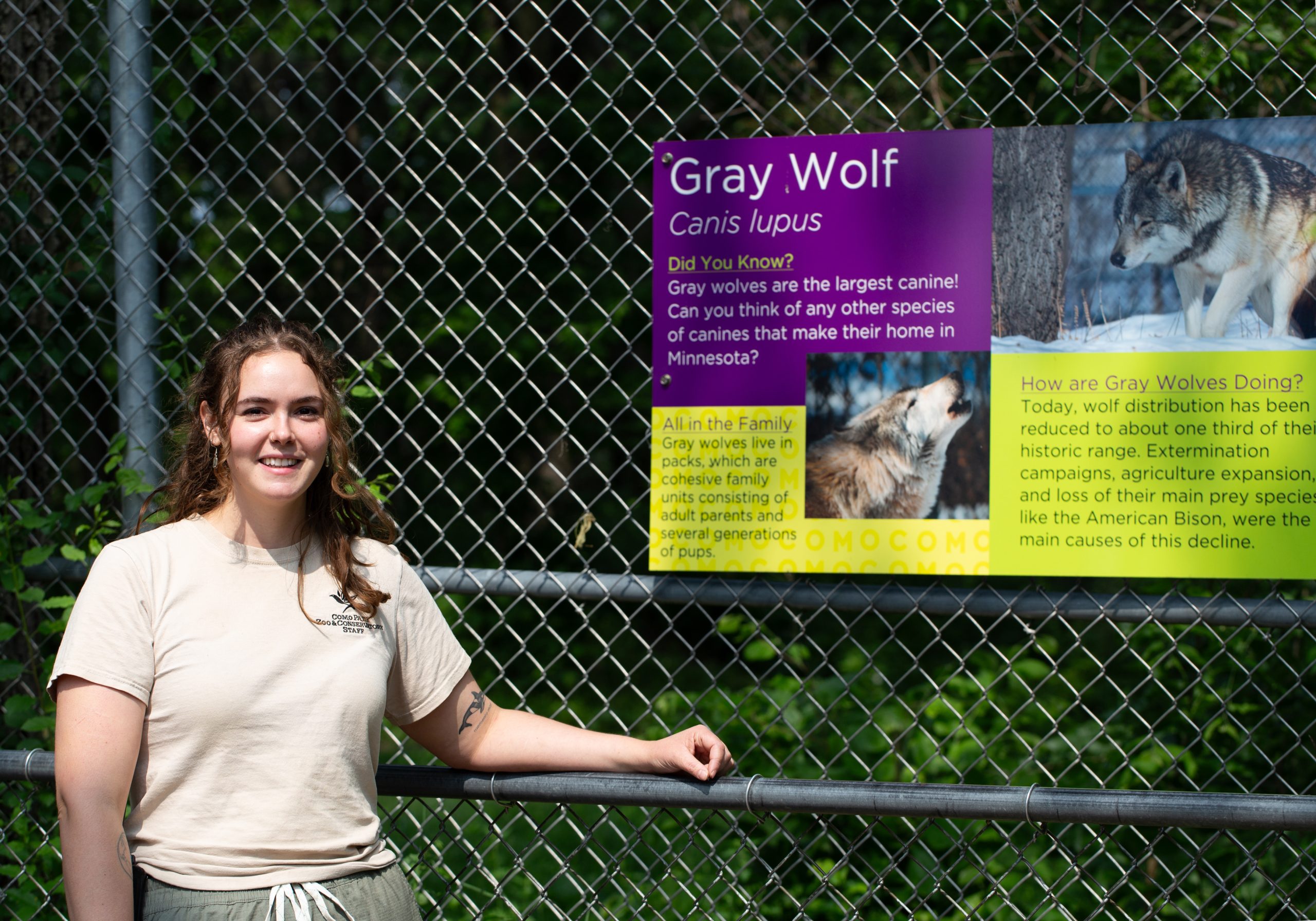
“I’ve been a big fan of the Voyageurs Wolf Project and their research, and their mission to understand wolf populations and behaviors aligns with the conservation work that Como Zoo and Como Friends want to support,” says Rosefield. “As a keystone species, learning more about wolves and protecting wolves helps preserve entire ecosystems, from native plant communities to smaller animals like frogs, insects, and birds.”
As part of her pitch to Como Friends’ selective microgrant program, Rosefield suggested a contribution to support the Voyageurs Wolf Project’s nonprofit operations, combined with new interpretive signage at Como Zoo’s wolf habitat to teach visitors more about why wolf conservation matters. Though wolves sometimes get a bad rap, from fairytales to farmers concerned about predation, recent findings from the reintroduction of wolves to Yellowstone National Park and other habitats show that wolves help many other species thrive, from boosting beaver populations, to protecting trees from over-browsing.
Raising public awareness about wolves and other conservation stories is also part of Como’s growing commitment to empathy-focused education, a campus-wide strategy aimed at deepening connections between Como’s visitors and animal ambassadors. Through Como’s growing partnership with Advancing Conservation through Empathy (ACE) for Wildlife, a nationwide learning network, Como’s education programs and interpretive signage are being updated to reflect the growing body of research that shows that fostering empathy with animals and plants is a powerful tool in building life-long conservation behaviors. Como Friends’ funding, as well as special projects like Conservation Champions, has helped to drive the initiative, which will continue this year with updated signage for polar bears and other animals.
To cap off her Conservation Champions project, Rosefield also created a new keeper talk to highlight what’s happening with Como Zoo’s animal ambassadors, Nicky and Cerberus, and to share new findings from the Voyageurs Wolf Project and other wolf conservation efforts. “I feel like wolves are a little underappreciated, and so I wanted to call attention to this really important species,” she says. “Wolves are highly contended all over the world, and that is why I wanted to bring attention to this incredible species. I also wanted to bring attention to the work done by the Voyageurs Wolf Project, because their research can provide the framework for our care here at Como as well as conservation efforts in Minnesota. I would love to see what else they can do with a little help from Como.”
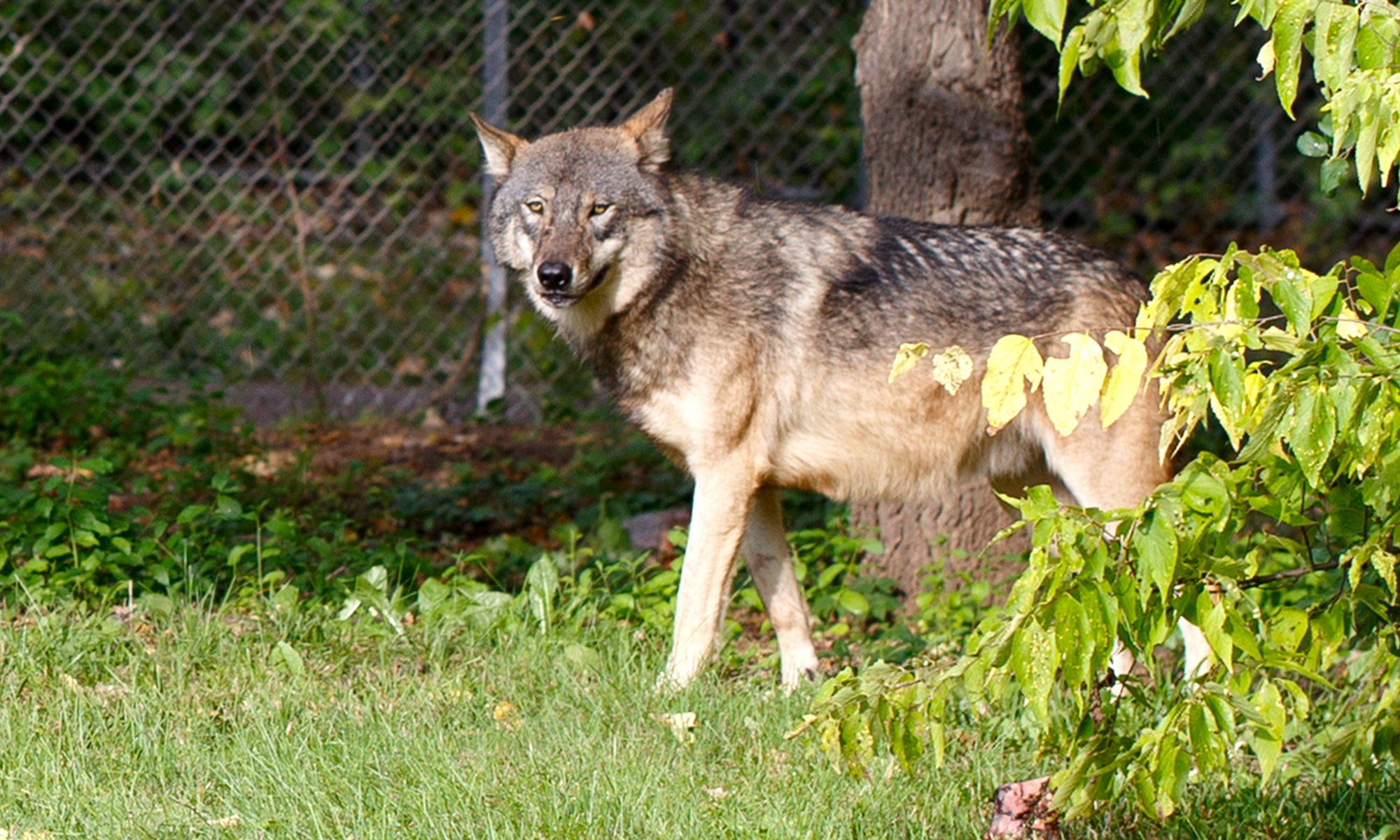
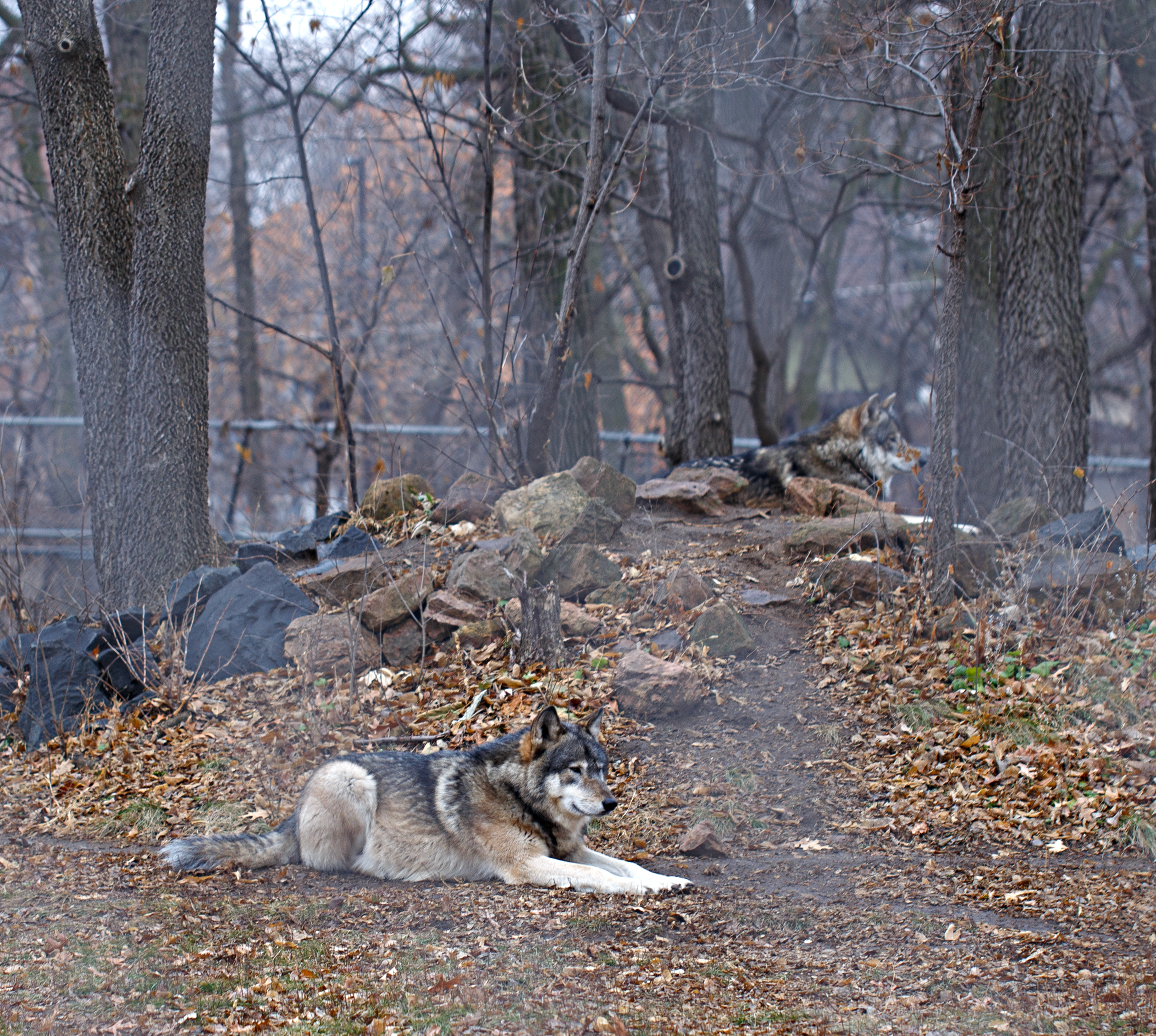
Your gifts to Como Friends support Conservation Champions, a program that encourages Como’s professional horticulture and zookeeping staff to participate in field conservation and restoration projects around the world. Thank you!
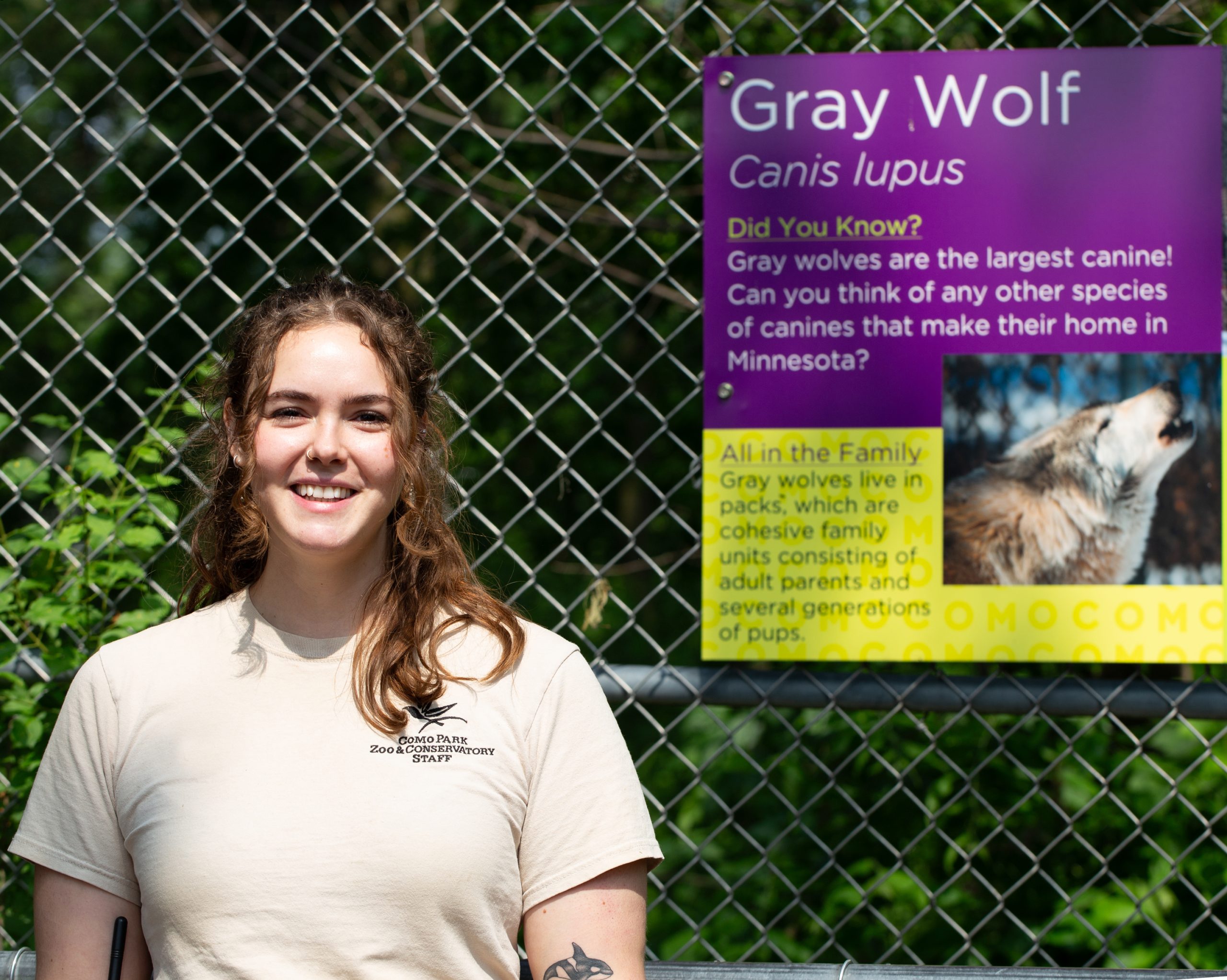
Como Zoo’s life support specialist EJ Smith traveled to the Caribbean to support a promising project to rebuild the vanishing coral reefs
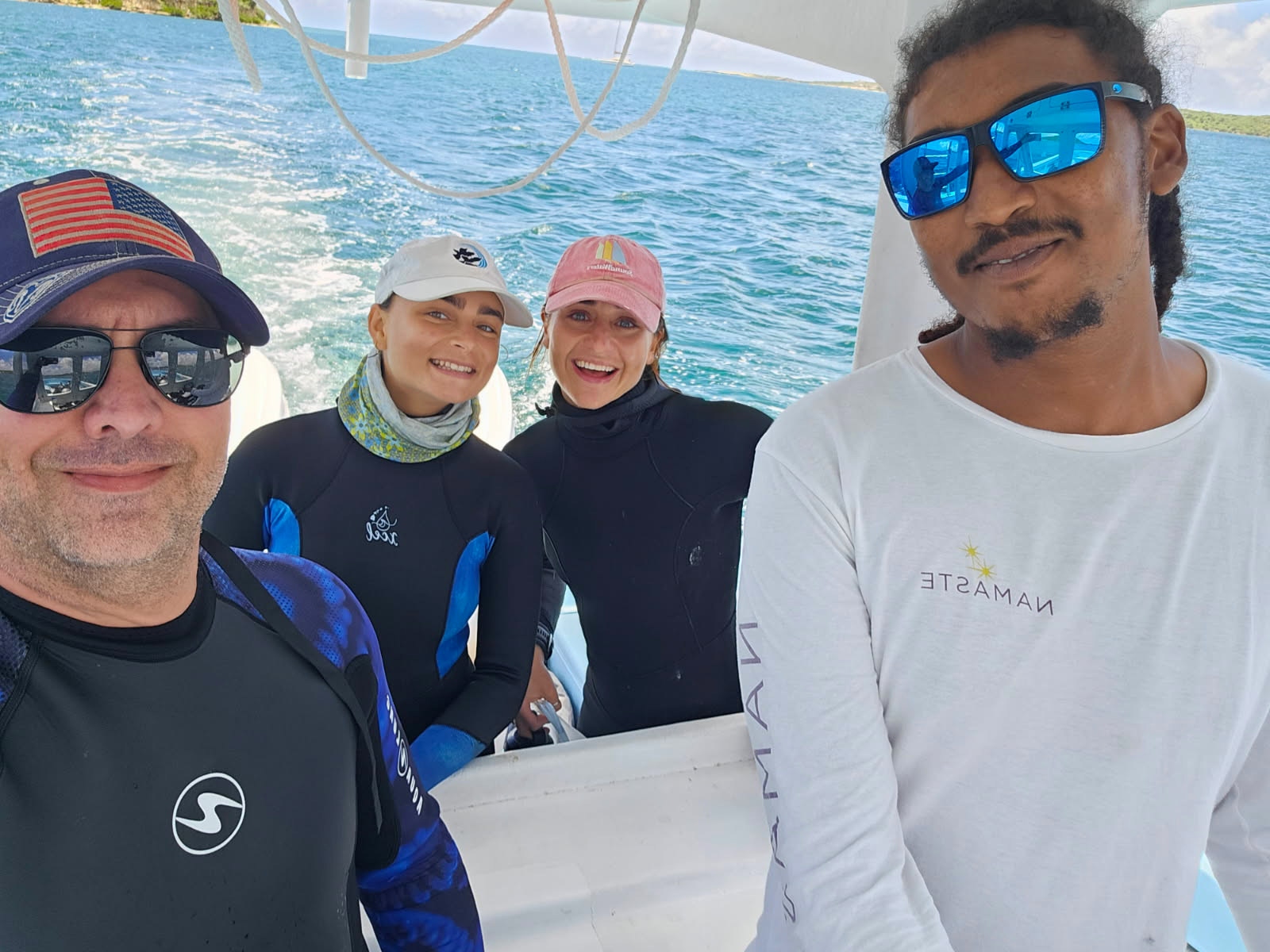
Vivid with color and teeming with life, coral reefs are among the most amazing ecosystems on the planet, accounting for just one percent of the ocean floor’s surface, yet supporting nearly a quarter of all marine species.
But with growing greenhouse gas emissions, rising sea temperatures, ocean acidification, and a host of other factors, reefs around the world are in danger of dying out. While more than half of the world’s living coral has been lost since 1950, scientists predict more than 90 percent could disappear by 2050.
While the challenges are daunting, Como Zoo life support specialist EJ Smith recently found some cause for hope in the Caribbean where a new conservation group called the Elkhorn Marine Conservancy is working on a solution. With the help of a Como Friends Conservation Champions grant, Smith spent three weeks at the EMC’s sites in Antigua and Barbuda helping the small nonprofit with a promising approach to reef restoration.
“To help these reefs rebound, they’re working to create coral nurseries,” Smith explains. “They’ll look for healthy, [stress resistant] coral colonies out on the reefs, and take small chunks of them back to the nursery where they’re broken into micro fragments. Corals grow at an incredibly slow pace, but these micro fragments are found to grow faster in small colonies, speeding up that process of coral growth.” Corals are cultivated on ropes and coral “trees” made of PVC piping that can then be replanted onto degraded reefs. EMC’s nurseries are currently fostering 14 species of reef-building corals, many of which are critically endangered.

Growing at rates of just millimeters a year, coral barrier reefs can take more than 100,000 years to form. Groups like the Elkhorn Marine Conservancy are making coral nurseries from micro fragments of healthy coral to help speed the process of renewal.
An expert diver, Smith is responsible for all of Como’s aquatic habitats, ensuring water quality for dozens of species, from polar bears to pacus, and regularly diving into Como Zoo’s aquatic habitats to troubleshoot. “I once did the math and figured that professionally and recreationally, I’ve spent about two months of my life submerged in the water,” he says. “But diving with [EMC’s staff] was like working with superheroes. Some of these folks had such amazing physical capabilities they could hold their breath for minutes at a time. It was just astounding.”
The water chemistry skills Smith has honed at Como Zoo are valuable to EMC’s work, and their plans to expand their coral nursery operations. To deepen the connections between conservation efforts in the Caribbean and at Como Zoo, Smith’s colleague Asher Berg, Como Zoo’s Aquatics Keeper, will be taking a Conservation Champions trip of his own this fall to support the renewal of coral near Antigua’s Green Island, York Island, and Cades Reef.
With a new tank of coral beds coming soon to the Aquatics Building, Smith says he’s looking forward to sharing his insights about coral conservation in upcoming keeper talks. While the health of the world’s coral hangs in the balance, Smith says he finds hope in the visit he made to Antigua’s St. Andrew’s School, where he talked with elementary school students about his work in life support, and how coral restoration can benefit the local economy, food chain, and climate resilience.
“This next generation of island people are already tied to conservation, because their lives really are impacted by the health of the reefs,” he says. “To hear these kids talk about how they want to work in conservation, or maintaining fish stocks, or protecting the reefs when they grow up was really heartwarming, to be honest. It makes you hopeful that conservation projects like this are making an impact.”


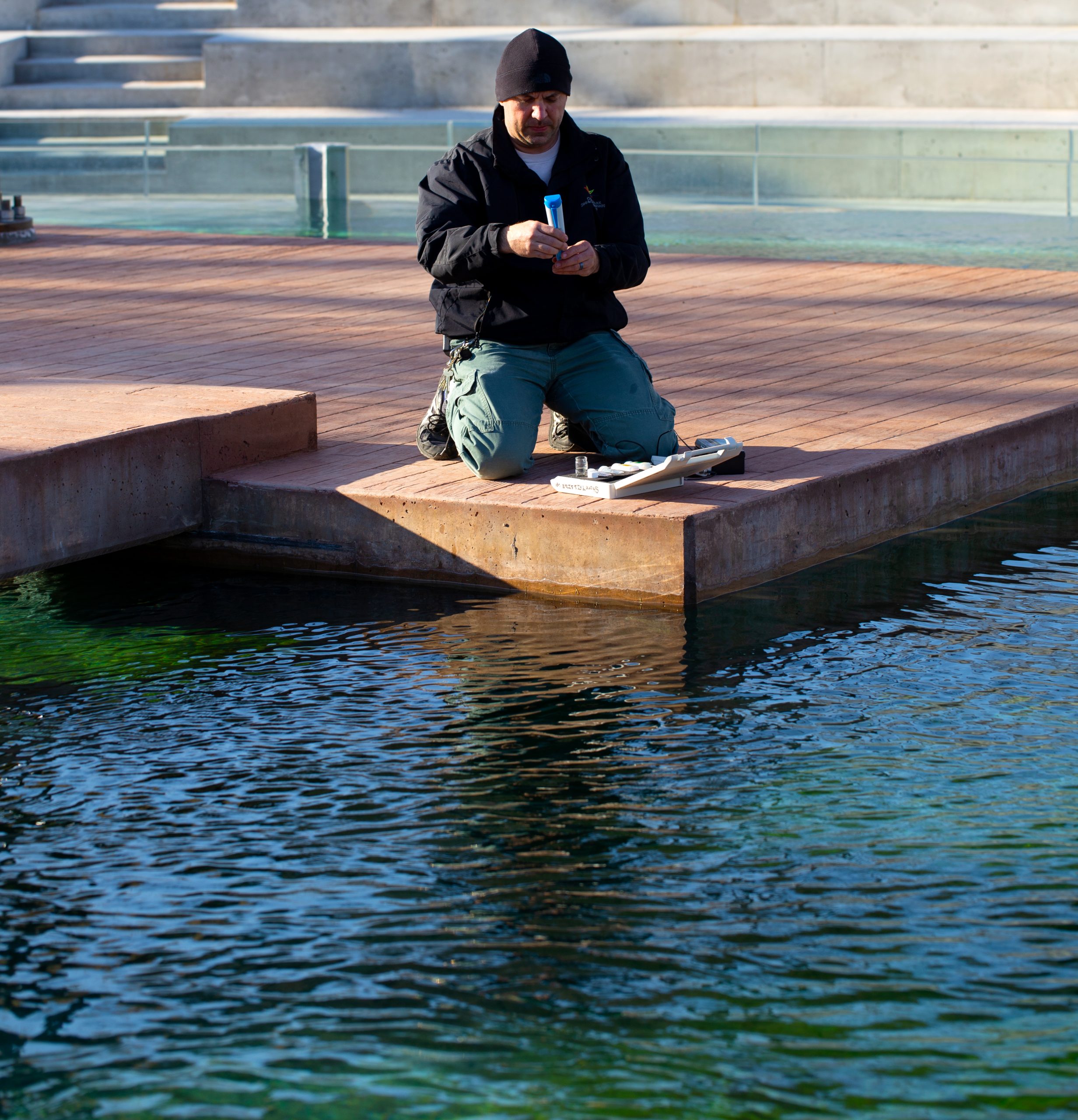
Your gifts to Como Friends support Conservation Champions, a program that encourages Como’s professional horticulture and zookeeping staff to participate in field conservation and restoration projects around the world. Thank you!
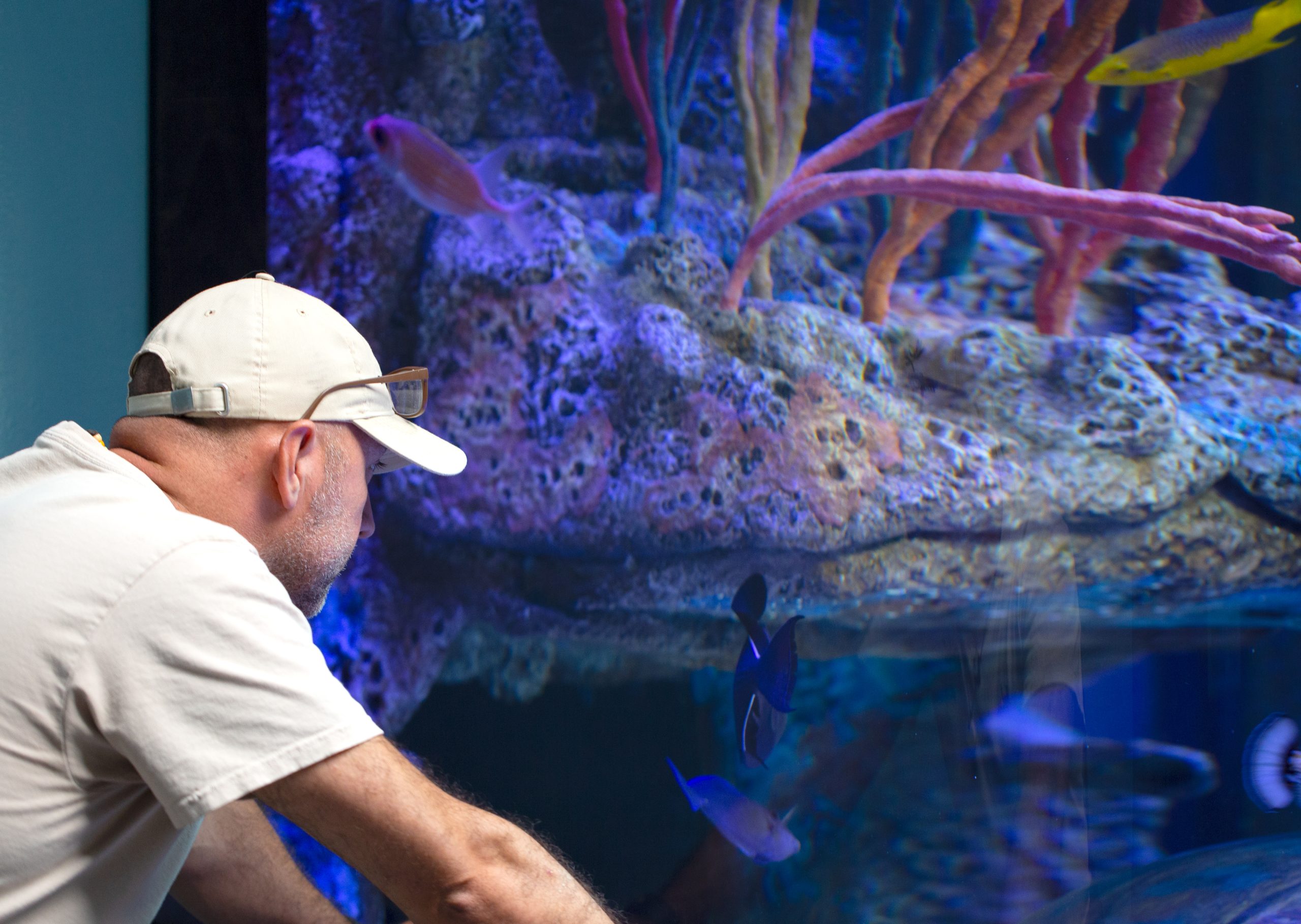
One of the Marjorie McNeely Conservatory’s most interesting plant collections plays the starring role in this season’s Summer Flower Show
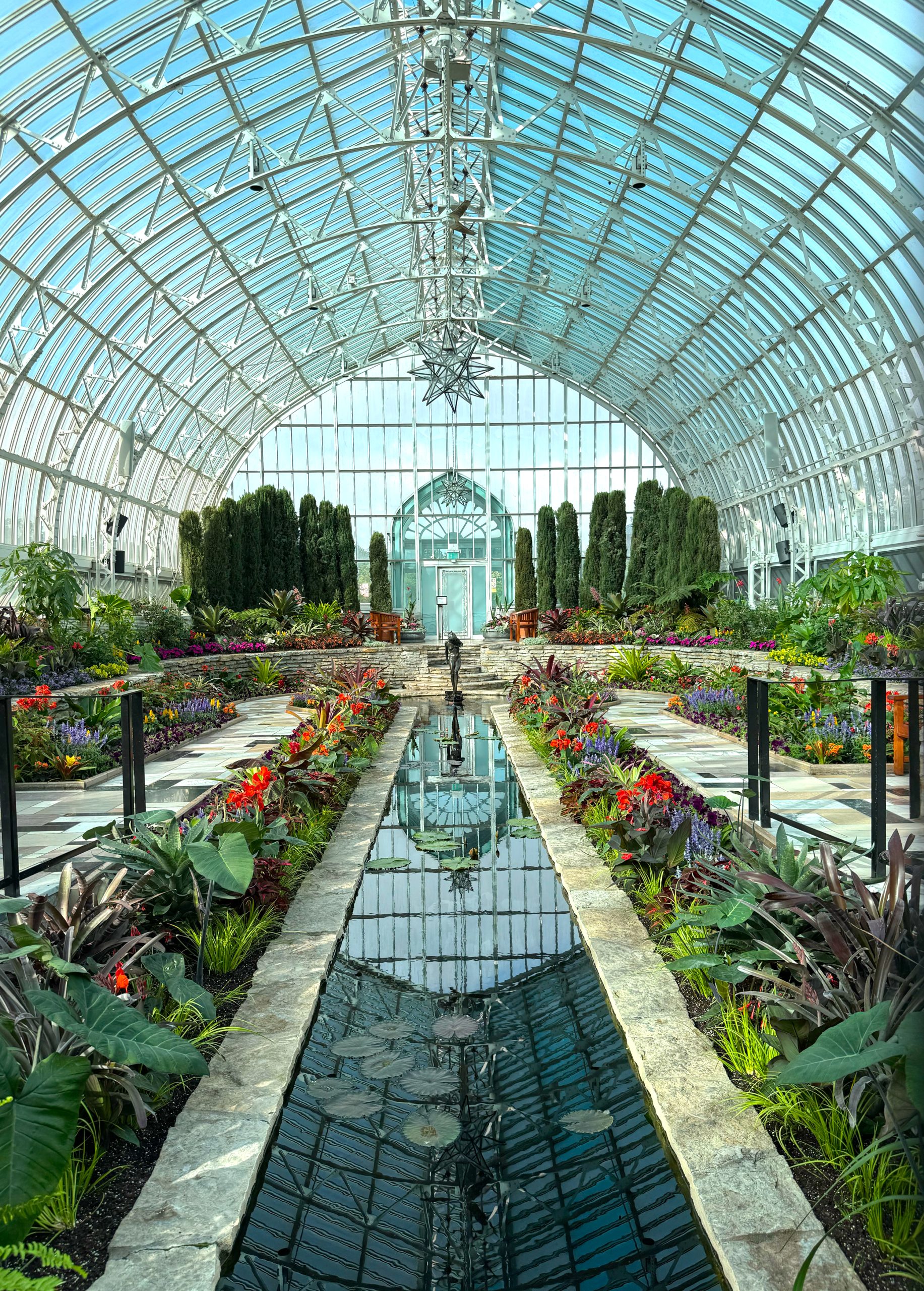
The Summer Flower Show at the Marjorie McNeely Conservatory typically features hundreds of tropical annuals that require warm temperatures, lots of water, and frequent swap-outs as they bloom and fade.
But this season, Como’s horticultural team decided to highlight a plant species that’s a little more sustainable, but no less sensational—the bromeliad.
“We’ve never used the Sunken Garden as a showcase room for a plant collection before, but we have such a variety of bromeliads currently,” says Como Senior Horticulturist Ariel Dressler. “We always want to put plants in a place where they’ll thrive and be happy, and since the Summer Flower Show is our longest show of the year, we know our bromeliads will do well. They’re such a charismatic plant that to see them in mass is a real treat.”
In fact, bromeliads have long been a favorite for Como visitors, who recently bestowed the “Cutest Plant” award on a tiny pineapple bromeliad. With a collection first launched in 1975, The Marjorie McNeely Conservatory currently has 638 living bromeliads in its collection, from 350 different species, the best of which are often displayed in the understory of the historic Palm Dome.
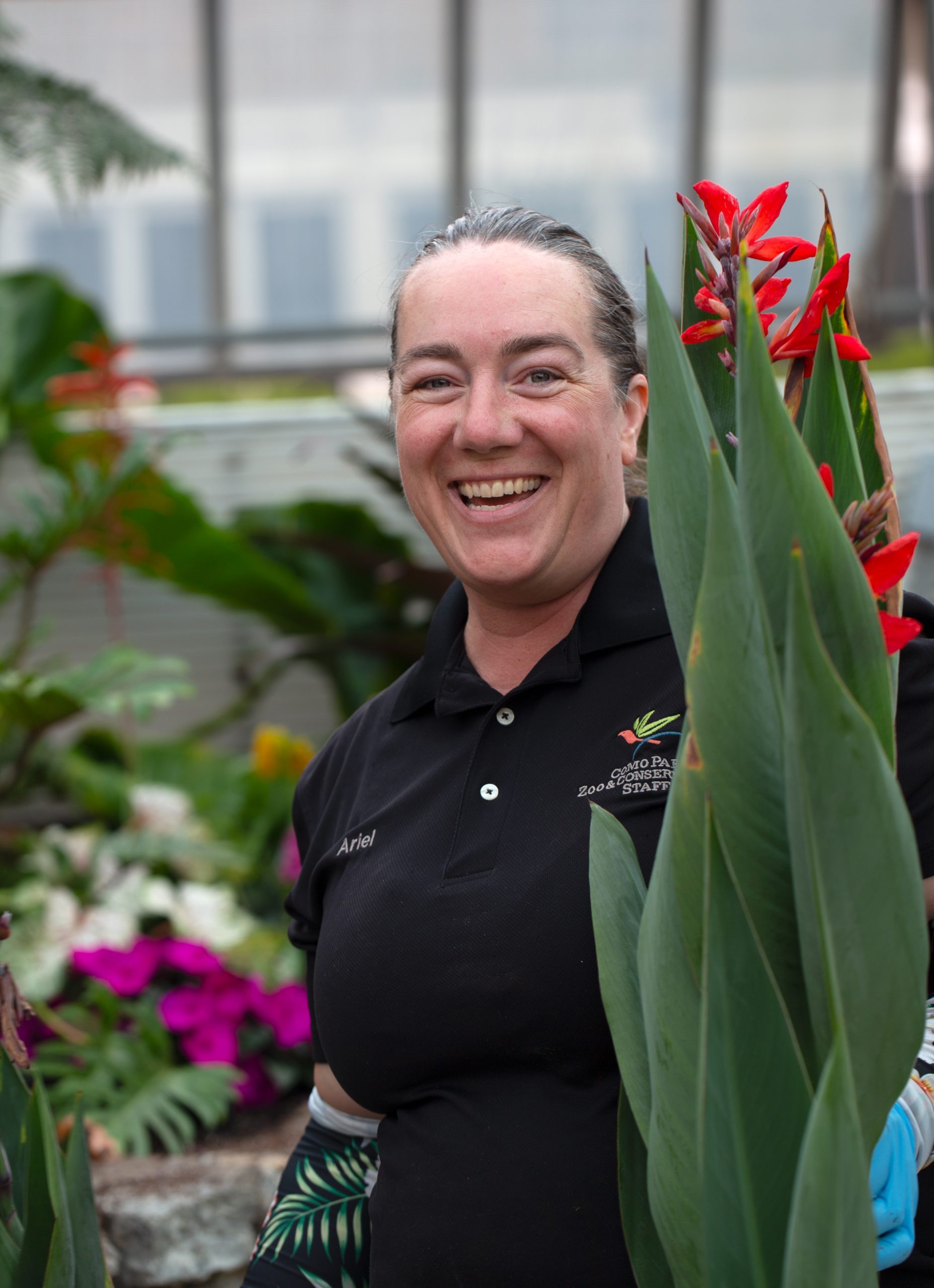
With more than 2,700 known species, the diversity of bromeliads is part of their wide appeal. Unlike other plants, bromeliads only use their roots for balance—all the water and nutrients they need are delivered through their leaves. And while many bromeliads only bloom once in their lifetimes, the mother plant can produce many new offshoots, known as “pups.”
To create the sheer number of plants needed for the Summer Flower Show display, horticulturist Diane Rafats, and a dedicated team of volunteers, propagated hundreds of bromeliad “pups” from Como’s own collection, timing their care and life cycle to ensure they were ready to bloom in time for the show, which runs from June 13 to September 14. Meanwhile, horticulturist Rylee Werden went about taking cuttings from Tropical Encounters and the North Garden to amass the hundreds of tropical accent plants that are also part of the display. Horticulturists worked to acclimate the plants to the unique conditions of the Sunken Garden prior to their June debut.
“Taking divisions of plants requires a little recovery period, because sometimes plants can be a little dramatic or wilty,” says Werden. “We also give them a little bit of shade and cooler temperatures as they move their way into the Sunken Garden, where it’s going to be hot, but not quite as humid as in a misting tropical greenhouse. Our goal is to get them through that drama phase before they go into the show and are ready for that bright sun and heat.”
While visitors have been amazed by the unique vibe the bromeliads bring to Minnesota’s most beautiful room, Rafats reports that they’re more accessible than they look. “Their leaves can be sharp, so you do have to be careful, but otherwise, they make great houseplants.”
Speaking of houseplants—our conservatory-grown bromeliads will be available for purchase at Garden Safari Gifts in the Visitor Center, both during and after the Summer Flower Show!
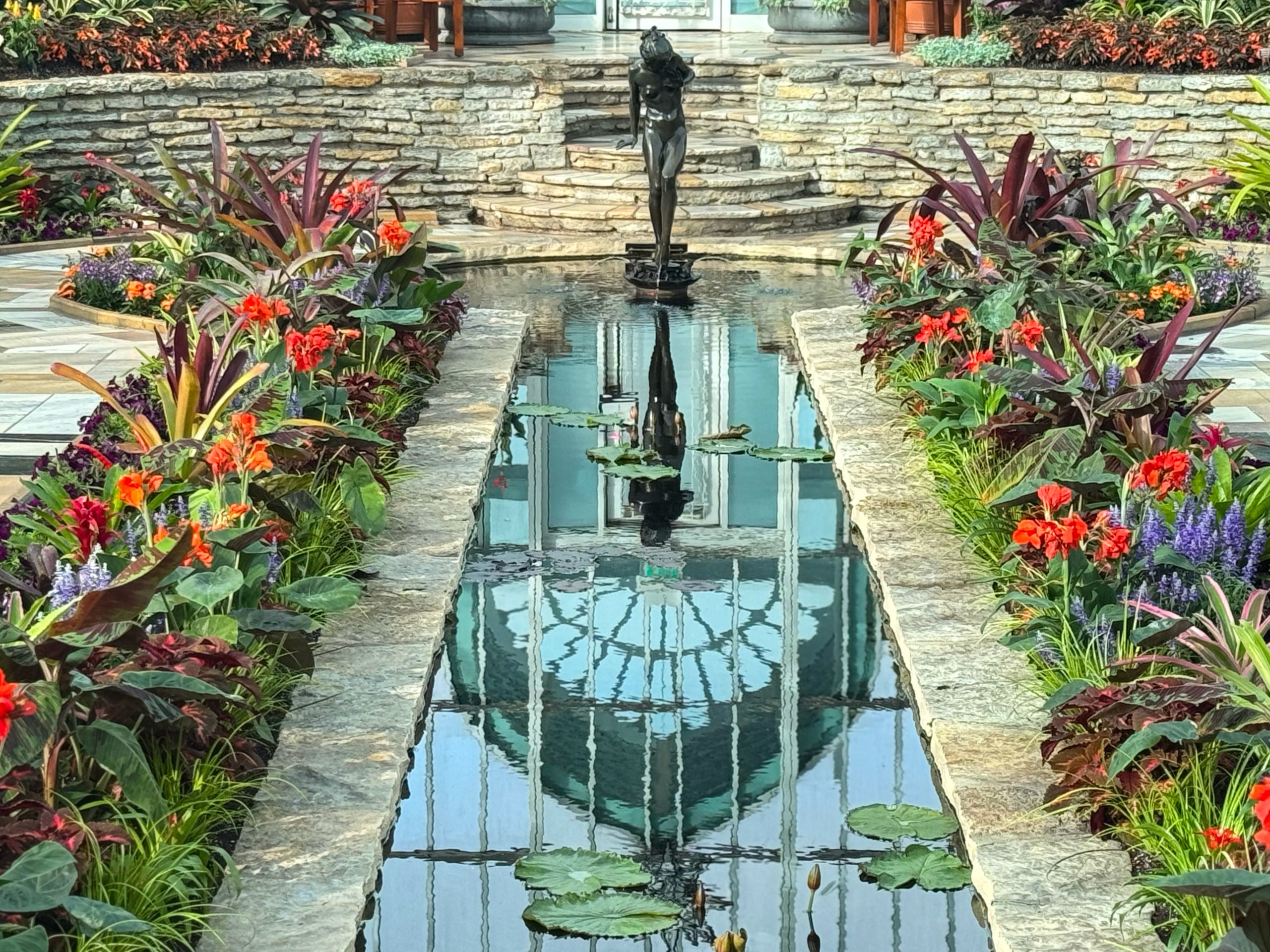

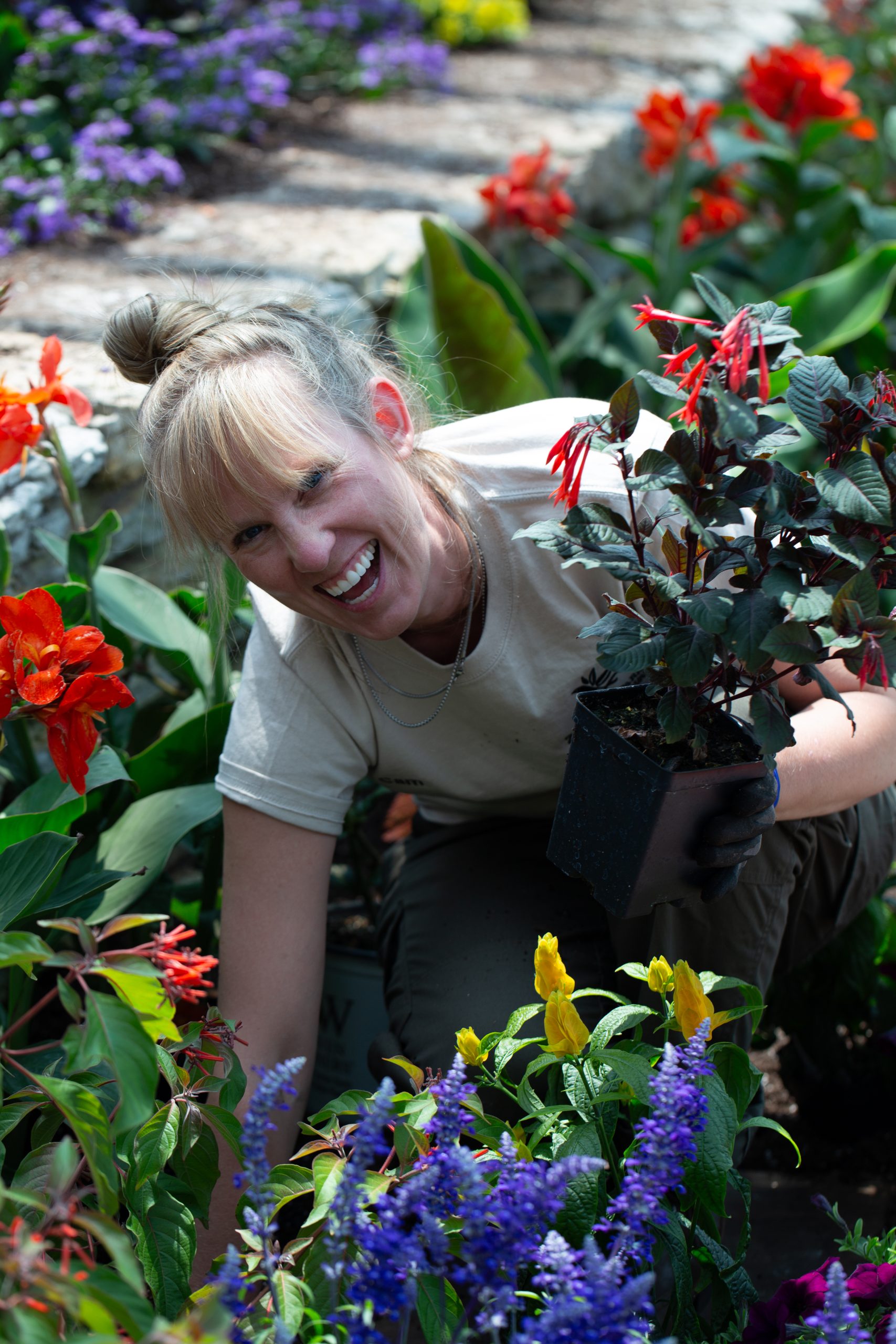
Your support for Como Friends helps ensure the Marjorie McNeely Conservatory’s seasonal flower shows are always free to every visitor. Thank you!



